If you would like a printed copy of any of our back issues, then they can be purchased on Farm Marketplace. You can also download the PDFs or read online from links below.
-
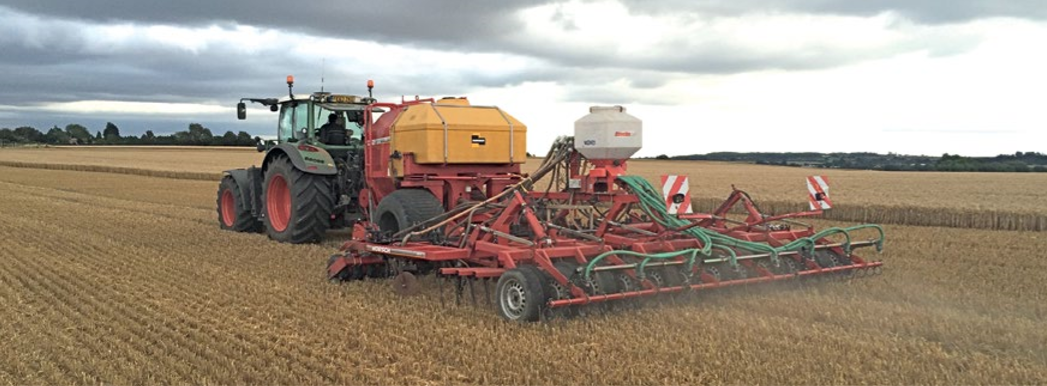
How To Start Drilling For £8K
Clive Bailye’s seed drill of choice is his 6m John Deere 750A , which has been used exclusively for 3-4 seasons. Last year, with an increased acreage, the founder and publisher of this Direct Driller magazine thought a second seed drill was necessary. Having just the one machine was a risk and in a difficult season would mean drilling was delayed. He looked around and found a good condition Horsch CO6 tine drill advertised in Germany.
Words and pictures by Mike Donovan
After delivery he rebuilt the coulters to a narrow profile so as to reduce soil disturbance. He says the tine drill is very useful driling after straw crops such as osr and also through the straw on second crop cereals.
Buying the drill from a German farmer was not particularly complicated, and provided him with a higher spec machine than Horsh sell in the UK. The seed dart tyres are much wider, and the machine is fitted with blockage monitors as well as full width front packers and also a liquid fert application system.
A sheaf of photos were taken, and Clive then asked for some of specific parts to show wear. The deal was done at under £5,000 which Clive says is the market value of these machines which are too large for small farmers to buy. Original owners like to buy new and sell when the machine is still in good condition.
Narrow tines with wear tiles
@Clive knew he wanted to make changes, substituting the Horsch tines and coulters for something far narrower, and has ended up getting his own design of tine made, which has a wear tile made from Ferobide, far harder than tungsten. The drill is on the farm primarily for osr and 2nd crop cereals drilled into chopped straw and the 25cm spacing is okay for these crops.
Comments on Clive’s on-line forum, TFF, said the drill many not be so good with beans, as the slot is a mere 12mm wide. And in barley the spacing may well be too wide as it needs to be thick. Clive points out that the seed pipe can actually be a bit wider than 12mm as it is in the shadow of the point. It would be good to have the option of using it for beans.

Above left: The cheap CO6 is being calibrated ready for its first outing

Above right: The adapted Horsch is being filled by the home built drill logistics trailer with seed and liquid starter fert.
Getting around the German instructions
The Horsch came, of course, with a control box and instructions in German. More on-line discussion revealed that English instructions were available on the Horsch website, and another explained that Horsch was sourcing some of these parts from Agton in Canada anyway. Zealman from New Zealand explained that the button marked with callipers should be held down for around 5 seconds. The menu is where you adjust the tramline sequence, valve layout and row numbers.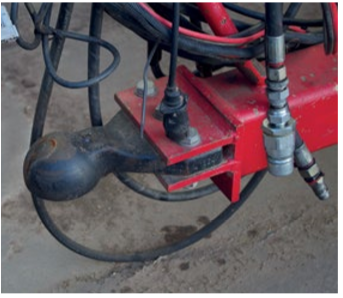
Ball hitch is a continental standard and provides a positive connection between tractor and drill

The Stocks Wizard has a rotor modified for Avadex which otherwise leaks everywhere
A Stocks Wizard is on the back of the drill and used for Avadex. Here again the knowledge of actual farmers is helpful. Alistair Nelson warned that the rotor and the surrounding shroud need to be changed, and he got good advice “from Rick at Stocks”. Clive has the same setup on the 750A and says that the Avadex leaks everywhere unless the modification is made. The drill was acquired and modified in 2016 and the results have been excellent.
The machine went through the residue without many problems and having the second drill has meant more timely planting. Clive has shown that moving into No-Till is not the expensive exercise so many farmers think it might be. The total cost, after modifications which included replacing all tines and coulters, was under £8,000.
Author Mike Donovan writes: we have featured a number of home made direct drills in @Practical Farm Ideas, and are always interested in seeing more. Please contact mike editor@farmideas.co.uk or 07778877514.
-

The Future of Soil Health Measurement
As discussions around sustainable farming practices and environmental stewardship continue to gain momentum, the spotlight on soil health has never been brighter. Recognising the critical need for effective soil monitoring solutions, PES Technologies has emerged as a pioneering force, offering a fast, accurate, and hassle-free method to measure soil health right in the field.
Founded in 2017 by CTO Dr. Jim Bailey and CEO Andrej Porovic, PES Technologies was born out of the need for quality, cost-effective soil testing solutions. Armed with Dr. Bailey’s expertise in solid-state physics and a collaborative effort with NIAB EMR, the team embarked on a mission to develop a sensor capable of conducting in-situ soil health assessments. The result? The innovative PES tool, now revolutionizing the way we monitor soil health.
The PES testing process is easy to do and can be carried out by anyone, with no specialist training necessary. With just a teaspoon of soil, users can initiate the testing process by inserting the sample into the compartment and activating the test through the PES mobile app. Within minutes, the sensors within the tool react to the volatile organic compounds emitted by the microbial community within the soil, generating an electronic fingerprint unique to each soil sample. This data is then transmitted to the cloud, where sophisticated algorithms correlate it with a range of soil health indicators. The indicator data is then seamlessly delivered to the user’s smartphone via the app interface.
Because the data is delivered through a Machine Learning Algorithm, when the PES system is updated with, for example, new indicators available, users will be able to re-analyse existing sample data to get the latest insights, as well as having the indicators available for new tests by simply updating their PES app. With this ability PES can continue to evolve with the industry and the users needs without any hardware changes.
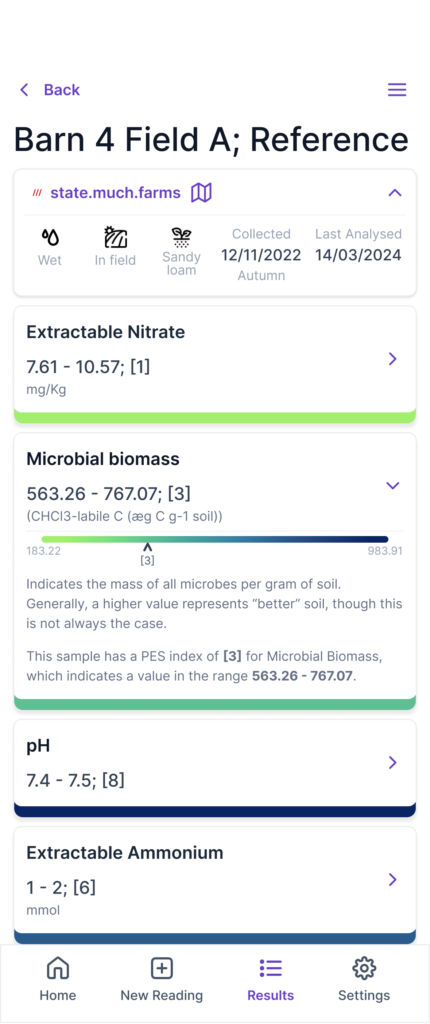
From biological to physical and chemical indicators, the system offers data from crucial indicators of soil health such as microbial biomass, organic matter content, and nutrient levels including phosphorus (P), potassium (K), and magnesium (Mg) to name a few. Additionally, its ability to operate directly in the field provides unparalleled flexibility in terms of location and scheduling. With each cassette housing 100 sensors, users can sample multiple fields multiple times without the need for extensive equipment or laboratory analysis. The cassette, the only consumable component of the system, effortlessly winds on a fresh sensor for each new test, ensuring reliability and convenience.
The integration of GPS technology adds an extra layer of utility to the PES system. By recording the precise location of each test, users can track changes in soil health over time and evaluate the effectiveness of their management practices. This makes the PES tool perfect for establishing baselines and trend data, making the information collected suitable for SFI and other reporting schemes to verify soil health improvement. These features empower users to make informed decisions, guiding them towards strategies that promote long-term soil sustainability and crop productivity.
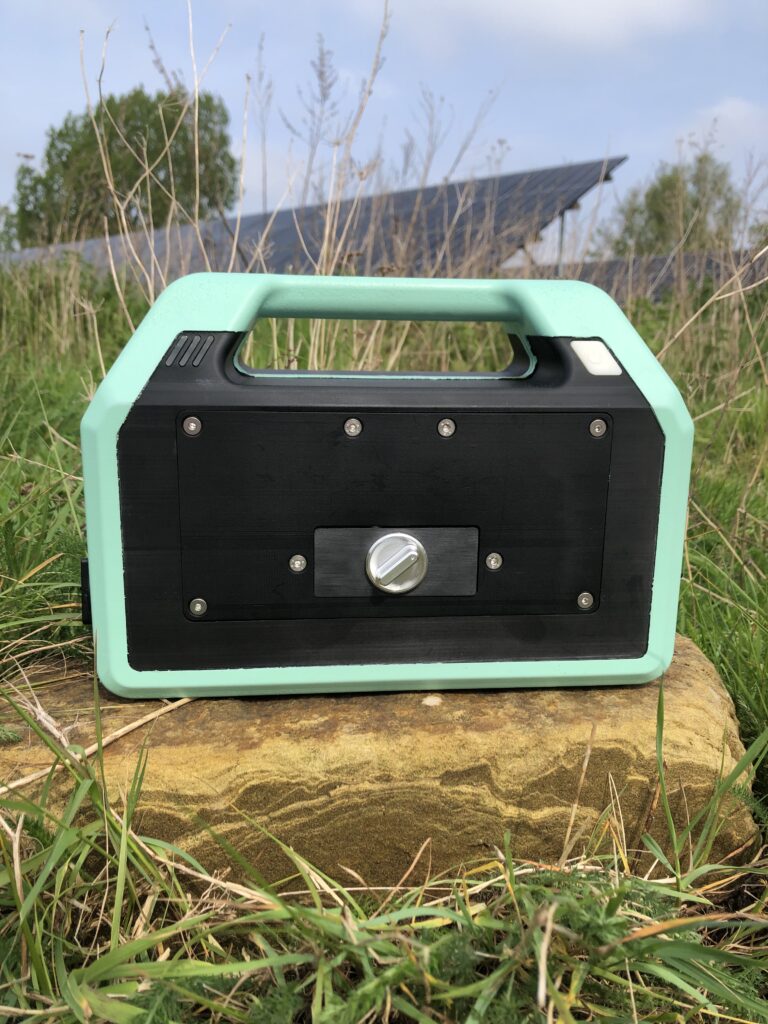
By democratizing access to advanced soil assessment technologies, PES Technologies is empowering users and fostering a sustainable future for generations to come. As the agricultural landscape continues to evolve, PES Technologies stands at the forefront, driving innovation and excellence in soil health measurement.
PES Technologies will be launching their product this Spring, and will be exhibiting at both Cereals and Groundswell. To book a demo, please get in touch via enquiries@pestechnologies.com and to secure a unit and put your name on the pre-order list for delivery in September please use sales@pestechnologies.com.
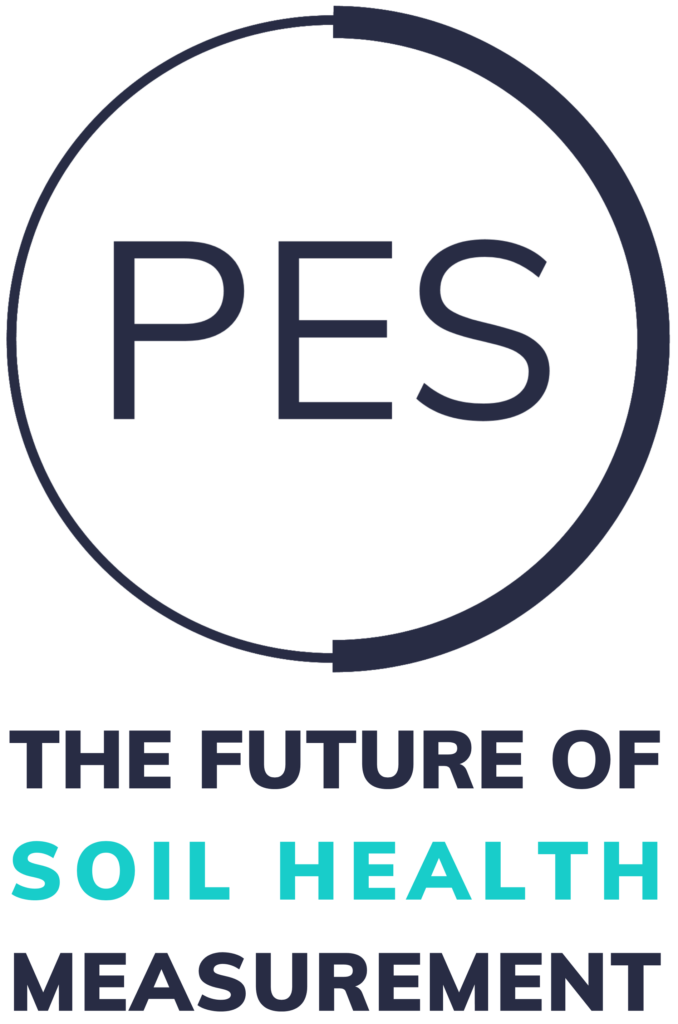
To see the unit in action check out this video:


-

The role of nitrogen and innovative biological solutions
Written by Steve Holloway from Soil Fertility Services
Like many other crops, wheat requires various nutrients for optimal growth and development. Nitrogen is one of the most critical nutrients for wheat, as a key component of proteins essential for the plant’s structure and function.
When Nitrogen is applied to wheat, it directly influences the plant’s ability to produce proteins, including the gluten proteins that give wheat dough its elasticity and ability to rise. However, the primary reason for applying Nitrogen to wheat isn’t just to improve grain protein content and increase overall yield. Nitrogen is a major component of chlorophyll, the green pigment that enables plants to carry out photosynthesis.
Photosynthesis is the process by which plants convert light energy into chemical energy, which they use to fuel their growth and development; therefore, adequate Nitrogen supply ensures that wheat plants can produce enough chlorophyll to maximise photosynthesis, leading to increased biomass production, including grain yield.

Steve Holloway from Soil Fertility Services While focusing on grain protein content is crucial, especially for wheat used in bread-making, balancing Nitrogen applications with other nutrients like Phosphorus and Potassium is essential to ensure overall plant health and productivity. Excessive application can also lead to environmental issues such as groundwater contamination and greenhouse gas emissions.
The flag leaf, often acclaimed as the powerhouse of photosynthesis in cereal crops, plays a pivotal role in the plant’s reproductive success. With its specialised biological formulations, SFS ensures this critical leaf receives the nourishment it merits. The biological products not only enhance Nitrogen levels precisely where they’re most needed, but also bolster flag leaf vitality, improve photosynthetic efficiency, and maximise carbohydrate production; offering a promising future for wheat cultivation.
Beneficial biological applications can increase chlorophyll content and enhance enzymatic activity. Consequently, due to their biological symbiotic workforce, winter wheat plants display lush, greener flag leaves ready to harness sunlight with unparalleled vigour.
However, the benefits of foliar Nitrogen combined with microbes, extend well beyond foliage, penetrating the core of profitability – the grain itself. Optimising nutrient uptake and distribution facilitates sturdy grain development and increased yields with superior quality, enhanced plumpness, density and uniformity. Furthermore, the qualitative attributes of the harvested grain are equally remarkable, with heightened protein content and superior milling characteristics.
SFS champions sustainability on multiple fronts, harnessing cutting-edge formulation technologies. Their biological fertilisers not only minimise Nitrogen losses through volatilisation and leaching but also mitigate the environmental impact while optimising resource utilisation.
As the global agricultural landscape grapples with its own sustainability, this technology emerges as a beacon of responsible stewardship. It gives you confidence that your farming methods are environmentally friendly, leading to greater fertiliser efficiency and lower reliance on chemistry for disease and insect control.
Soil Fertility Services’ Complex Foli-N is the perfect solution for your crop’s late Nitrogen requirements. It supplies stabilised amino Nitrogen, complexed with a beneficial microbial consortium in a rich base of humic and fulvic compounds.

-

Prioritise conditions over cultivations when making variety choices
Latest Agrii trials suggest while clear differences can be seen between varieties in various production scenarios, there is little to separate them when it comes to their performance in direct drilling or conventional cultivation systems.
Varieties and how they perform across a range of production scenarios is a key element of Agrii’s integrated crop management (ICM) programme, says the company’s head of integrated crop technologies Dr Ruth Mann.
“All trials work at Agrii is designed to provide growers with vital information on how to manage the ever changing range of crop production systems with varieties right at the heart of this,” she points out.
“The aim of all our R&D output is to deliver on every farmer’s triple bottom line and ensure yields and profitability are optimised without detriment to the environment.
“Identifying the optimal variety for sustainable cereal production is an essential part of any ICM programme, but it has not always been clear whether varieties perform the same in all situations.
“In particular, one of the big questions of recent years has been around varietal performance in direct drilling versus conventional ploughing systems and our current work is providing vital insight into this.”
According to Agrii seed technical manager John Miles, latest indications are that
growers should choose varieties that are likely to deliver the best performance in their individual locality and growing conditions rather than trying to identify which ones suit their cultivation system best.
“Two years of trials across two different locations with both direct drill and conventional cultivation systems have shown no statistical proof that some varieties suit one approach better than the other,” he explains.

Agrii trials looking at direct drill and conventional cultivation systems suggest individual varieties are not more suited to one approach over the other. “The theory was that because there is potentially low mineralisation in direct drill soils as they are not being disturbed, a nitrogen poor scenario creating slow growing crops could result, with some varieties coping better with this than others.
“Equally, some direct drillers may choose to sow a bit earlier as they are not being held up by cultivations, so that too could affect what type of variety would do best.
“Many producers looking to switch to direct drilling from ploughing, therefore, ask the question which varieties are likely to deliver the best performance in the new system and there has been a lot of debate about this over the years.”
The Agrii trials took place at sites in Huntingdon and Braintree, with both locations deliberately featuring hanslope series clay soils representative of 35% of the UK’s arable area, John Miles explains.
“Heavy clays tend to be more of a challenge when moving on to direct drilling, but they are representative of many of the soils found in the East of the country. For both sites and years the same range of 18 popular RL wheat varieties was used.
“The Huntingdon location was on a farm where direct drilling has been practiced for the last ten years alongside integrating cover crops, whilst at Braintree continuous wheat has been the approach for 40 years, but direct drilling is now being looked at to save costs.

Direct drilled plots at Huntingdon in 2023 (pictured) produced 0.7t/ha more compared to their ploughed counterparts in Agrii trials. In contrast, the direct drilled plots at the Braintree trials site in 2023 delivered 0.6t/ha less than the cultivated ones. “Because of the expected higher losses at establishment from direct drilling, it was decided to up the seed rate from the 350 seeds/m2 of the conventional approach to 425 seeds/m2 for the direct drilled plots, to ensure even plants stands.
“In both years across both sites, plant and ear counts were roughly the same for direct drilled and ploughed plots, showing the extra 75 seed/m2 had helped create the level playing field across all plots that we had hoped for.
Direct drilling challenges
Results from the Braintree site for 2022 showed average yield of the plots that were direct drilled was 8.9t/ha compared to 9.5t/ha for the ploughed ones – a 0.6t/ha difference.
“KWS Zyatt, KWS Extase, LG Skyscraper, KWS Dawsum, Gleam and DSV Theodore all did well in the direct drill situation with 9.0t/ha and above yields, but these are the same varieties that did well in the ploughed situation too, with some topping 10.0t/ha.”
Highlighting some of the issues with direct drilling, the overwhelming reason the ploughed situation yielded higher was because the actual area of crop harvested was less in the direct drill plots, John Miles explains.
“Although all the straw was removed from the trial field, there was regrowth out of the back of the combine and all it took was drilling on a wet, foggy morning to result in poor establishment which was not helped by the significant slug pressure created by the by the level of residue even in a wheat only rotation.
“You can see similar areas in the farm’s other fields, with crop density getting noticeably thinner in those areas, but a trial drill goes slower than a normal drill and doesn’t have the same weight to it, so the problem is more evident.

Red section in lower left of trials plots shows land ploughed for blackgrass at the Huntingdon trials site in November 2022. While establishment was relatively even across the trials, ploughed plots started losing biomass following heavy rain in the new year which resulted in lower yields than with direct drilling. (Picture courtesy of Bayer CropScience UK) “That said, it is indicative of what can happen when you are drilling into residue. It’s often the case that you end up with a sub optimal plan stand which in this case was seen as a bare stripes across all the replicates.
“The yield difference between the different approaches was, therefor, largely because the direct drilled area had some bare patches in it rather than actual differences in the crop.”
In 2023, establishment was even in both crops and the final yield results closer too, he explains.
“Conditions were too challenging to plough, so the the cultivated plots were heavily disced a couple of times instead, but throughout the growing season it was difficult to see a difference between the plots.
“In the end, average yield difference was only 0.4t/ha between the different approaches, but again those varieties that did well with direct drilling, also performed well in the cultivated scenario.
“There was marked difference in performance between the different varieties at the site, but nothing that would suggest a better result for one variety over another between the two approaches.”
Ploughing problems
At Huntingdon, in 2022 all plots established relatively evenly, but the ploughed ones started losing biomass because of the high rainfall in January that year, John Miles explains.
“In contrast, it was probably the kindest start possible for the direct drilled plots as it was after oilseed rape, without much trash and a cover crop that was sown with a drill featuring large tines that helped break up the surface.
“Unsurprisingly, direct drilling outyielded ploughing in this case to the tune of 0.6t/ha, but in view of what we saw in February with the biomass, that is probably not too much of a surprise.

“Similar conditions were seen in 2023 where once the ploughed areas got wet in the winter they stayed that way with a correspondingly lower biomass seen in February. But we didn’t get the subsequent prolonged drought seen the previous year, so the ploughed plots did recover somewhat.
“But the direct drilled plots still yielded on average 0.7t/ha more than their ploughed counterparts. Again, the varieties that performed well in the RL that year – KWS Extase, KWS Dawsum, Gleam and Graham – were the ones that delivered the highest yields across both approaches.”
Basically, at one site the plough won the day and at the other site direct drilling worked better and this was consistent across both years, he points out.
“Subsequent analysis shows that while differences between varietal performance at each site are significant, there is no correlation between any variety and its ability to do better or worse in direct drilled or plough-based production systems.”
“While there is some truth that in some circumstances, such as when drilling into cover crops, incorporated straw or in challenging weather, a more vigorous variety could help with establishment, our results suggest this is much more to do with conditions than cultivations.
“A high vigour variety could well compensate later for poor early establishment, grow through slug attack better in adverse conditions or simply thrive better in cold, wet soils, but this would be the case regardless of farming system.”
No difference
By and large, a variety that does well in a ploughed situation will do well in a direct-drilled scenario, John Miles concludes.
“Even if we had been able to identify a difference in performance in varieties between ploughed or direct drilled systems, it is likely it would be so small as to make it barely worth considering. It would certainly lie outside the top five considerations.
“In other words, all the current reasons why you choose a variety for your particular situation – yield potential, disease resistance, standing power etc. – would outweigh any suitability to cultivation system.
“Ultimately, the ability of a variety to perform in any farming situation is down to conditions encountered at establishment and throughout the growing year and not its suitability to any one production system over another.”




-
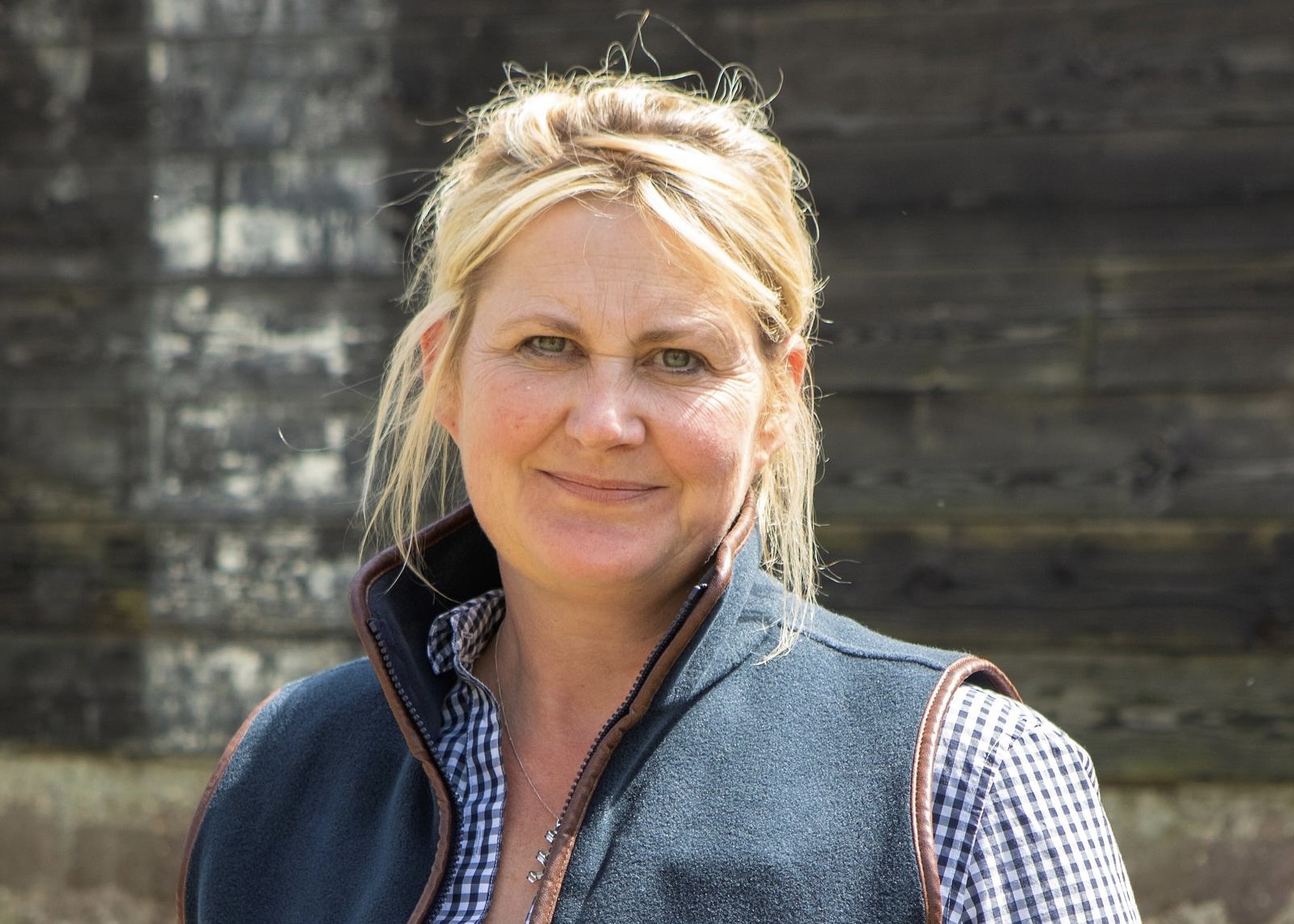
Agronomist in Focus: Lisa Hambly
Lisa Hambly – Head of Grassland & Forage Agronomy at Mole Valley Farmers
Having started my career at Dalgety Agriculture too many years ago, I was hooked. Farming is so diverse, and there are many opportunities available from a nutritionist to an agronomist. I tried on a few different hats and was lucky enough to have support from some great people along the way. When I realised that I loved growing things and helping people do the best job possible, I decided to focus on agronomy.
Working within the sector based in the West Country helped me understand the benefits of organic manures and how they seemed to help crops grow quickly and require fewer inputs. However, when the crop grows well, so do the weeds. Feeling the need to develop my understanding of this, I was lucky enough to get a chance to work in the arable sector as an agronomist.
Seeing many soils struggling to support a crop was a revelation for me. This spurred my interest in soil health and what it means for not only the environment but also crop, animal, and human health. Challenging conventional practices has been an ongoing theme because doing things the same way and expecting different results is not an option. This comes with its challenges.
With SFI’s now encouraging new (or old?) farming practices focused on soil health, we are all learning something new. Could forage crops become a bigger part of arable farming? This would lead to integration with livestock management becoming another sought-after skill because there would be multiple species both in and above ground level.
Rotation of both crops and animals is key, and thinking outside the box will help us become more resilient to climate change being more efficient with our soil resources by reducing reliance on purchased materials for crop production as well as animal production. Working smarter with what we already have by increasing soil health and biology will bring improvements in both crop yield/productivity as well as profitability.
With cuts in BPS payments challenging low input farming systems, choosing multi-species mixtures wisely can enhance yields especially where regular reseeding programs have not been implemented before introducing new species that are more tolerant during dry periods when traditional rye grass producing dry matter yield.
In light of challenging weather conditions and economic factors’ increase, laying down good foundations becomes essential which means taking care of soils by avoiding compaction whenever possible or alleviating it if it occurs; feeding crops appropriately without under or overfeeding; matching soil available nutrition with crop requirements including micronutrients; ensuring longevity for maximum yield.
Using technology aids decision making since there’s so much daily work involved that making informed decisions becomes critical for success – from predicting weather conditions up until testing plant tissues at laboratories – all these contribute towards increasing success while saving valuable labour hours.
With all these changes happening within farming systems nowadays, getting help advice becomes vital because everyone is constantly learning something new! So don’t hesitate to go out there talk with others about their successes or even “experiments that maybe did not work out as expected”. Every farm is unique which makes UK agriculture fantastic – no two days or hours are ever alike! But when we communicate share knowledge, we can truly make a difference!

-

Farmer Focus – George Sly
Year 5 into my farming career, is it getting easier…?
Simple answer is no; however, I feel a lot more relaxed about the annual cycle of ups and downs, and after 5 years at it, with countless droughts and floods I’m definitely battle hardened and most importantly the farm is building diversity and resilience.
Financially half our farm is mortgaged, and its variable rate (ouch!), so it’s been tight! My mother and father live off the farm income and I draw mine from other businesses. I genuinely take my hat off to every farmer the past few years as I have learnt just how hard it all is especially when debt/interest climb, every £1 spend has to count and we’ve slashed costs to death.
As I write this, I couldn’t be happier generally with how the farm looks given the circumstances. Autumn 2023 we drilled 90 ha of WW and 35ha Winter Triticale. Within 24 hours of finishing drilling we have just over 110mm of rain in 4 days. The wheat was not good enough to keep and given a rare opportunity to re-drill on the frost in February we sprayed off and re-drilled, which proved to be the right decision. Our Triticale (some destined for AD and some grain) survived and prospered, I love the stuff! Its resilient, more aggressive, likes our heavy clay/silt, and you can sell it as feed wheat (oops). Its around 15% cheaper to grow than WW but also generally yields less by a similar factor, but it’s a safe bet for me and I want to grow more of it, the issue is the market/demand, I can confirm triticale bread isn’t great, but blended in its fine!
We decided to grow 60 hectares of spring wheat blend for Wildfarmed with a buckwheat/clover companion crop, this was mainly in our agroforestry area. So far so good, we have grown for Wildfarmed for now 3 years and although it’s no silver bullet financially, I’m growing more and more fond of the brand and the system. Our spring crop was a 4-way blend, currently it’s holding up well to Rust (a big worry), its had 80KG of N and just doing first SAP tests. We have a stack of SFI payments on this amounting to £485/ha including the agroforestry, but I hope next year this can be up to £885/ha when we add the low input cereal option and convert to the strip system. I think in the long term we will need a multi-use interrow management tool if we grow more and more crops like this. Which has my brain spinning to give the Horizon engineers their next headache! Overall, we hope for an output including SFI of around £1850-2000/ha from a very low input.
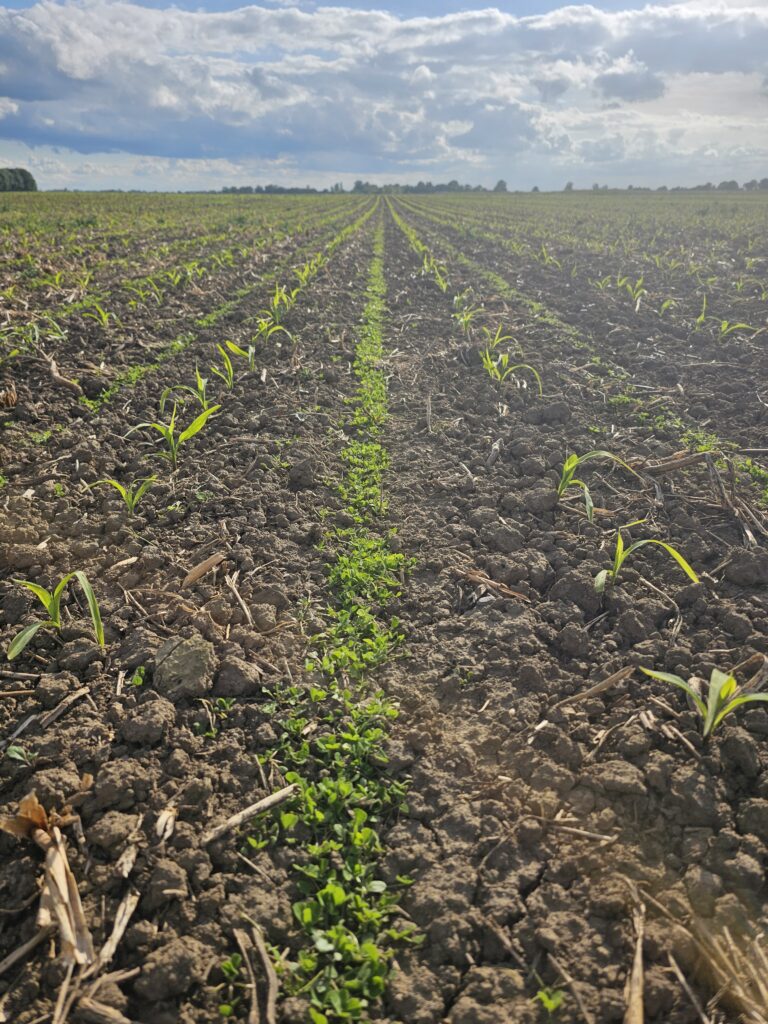
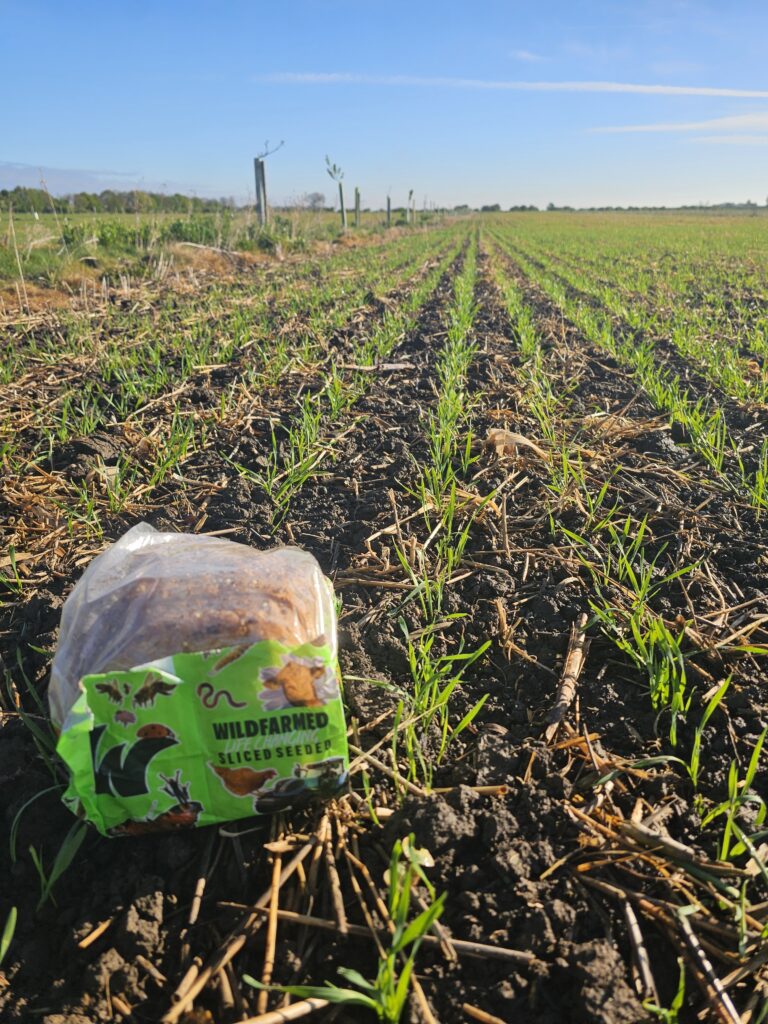
A quick agroforestry update, I have shown many farmers around it, and I love doing so. A few have then planted up themselves so that’s very rewarding. The walnuts are finally waking up and hazels I hope will be waist high by the end of the summer (they should be 1.5X this size by now but establishing trees in open areas is always hard, my advice is as others say, plant less and look after fewer trees better! I listened to Sarah Singla speak in Sweden this week and she said studies show the perfect field size is 3-4hectreas from a biodiversity standpoint, this fits well with my alleys!
Our maize all went in well, we grow 40 hectares and I decided to roll the dice and drill companion crops at the same time as planting with some modifications we made at Horizon. I have some maize with faba beans 25cm from the crop, and some with clover, millet, buckwheat. We can claim the SFI, direct drilling, pre maize cover crop and in future the sustainable maize growing options which could accumulate to circa £350/ha. The idea being that we try to be between £1750-£2000/ha.
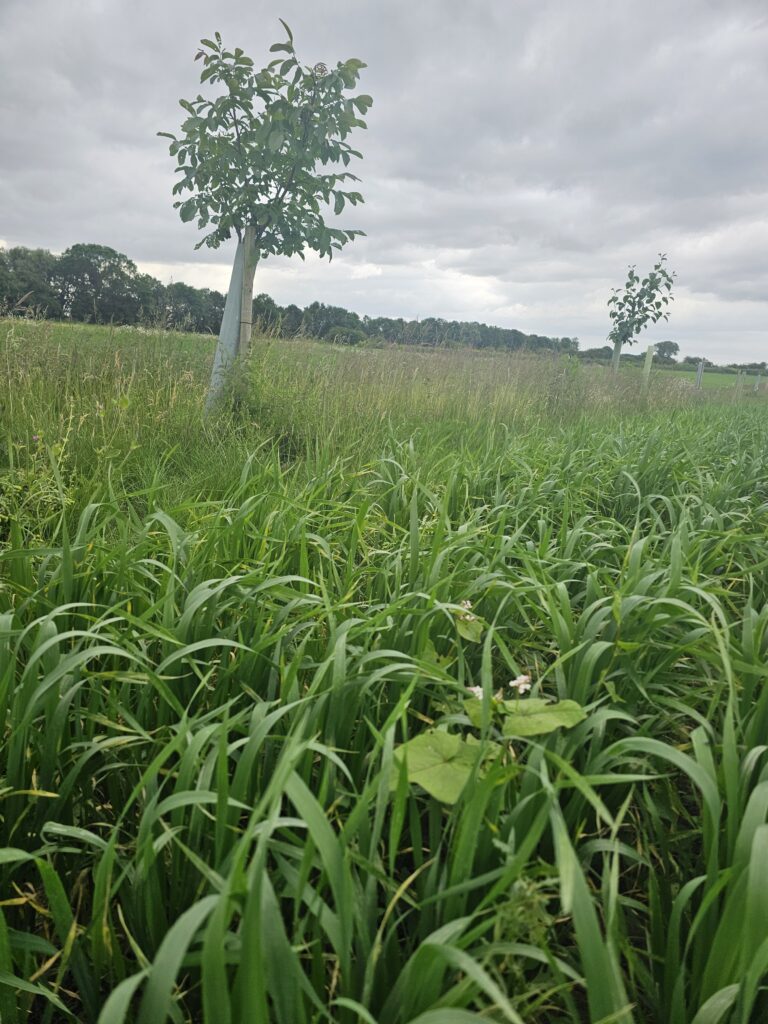
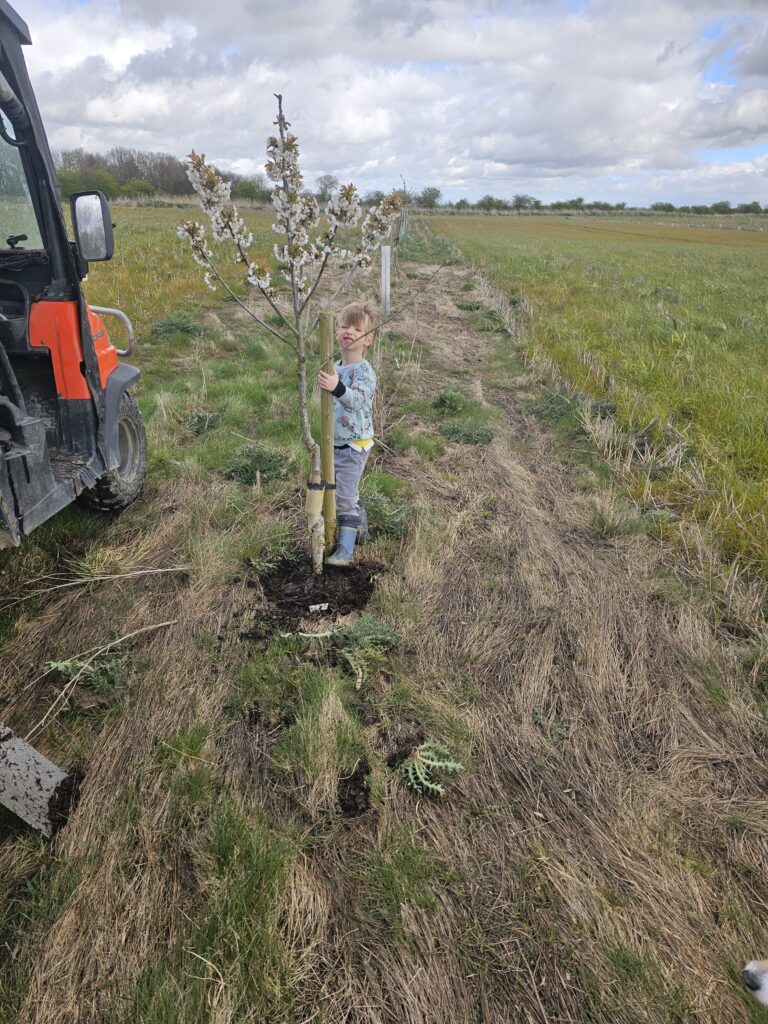
I am not yet sure how the companions will affect the maize; we have some without a companion to compare. I want to find out if drilling a companion (or ryegrass like some do) at time of drilling, either 25 or 37.5cm from the crop restricts it. Or if you do have to wait till later in the season to under sow. Some of this research is for me as a farmer and some with my Horizon hat on. Herbicides and weeds and how we manage that Is the challenge also, it will be interesting how certain clovers etc. stand up if we need a herbicide. Generally, we have far less weed pressure in strip till.


-
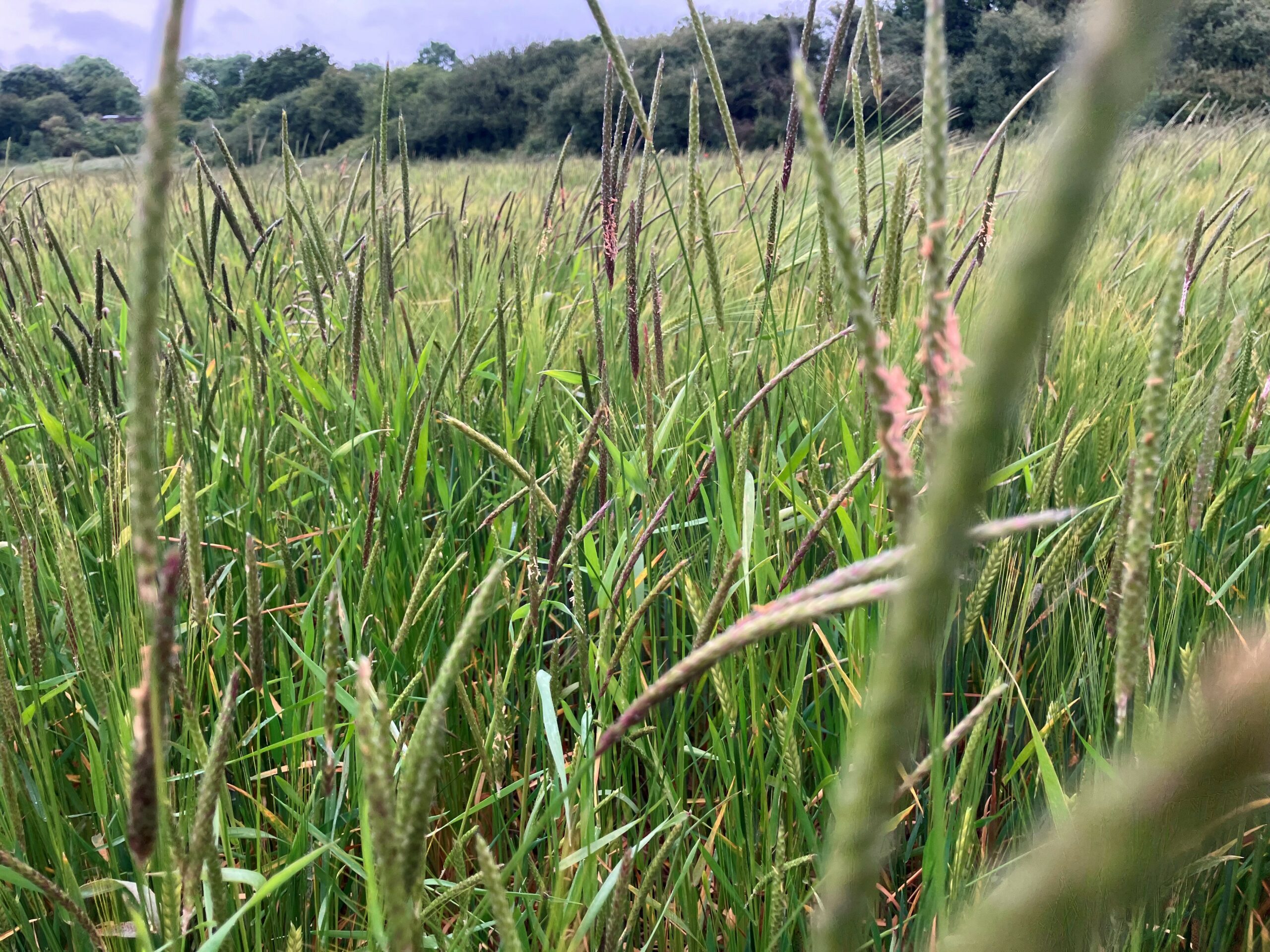
Decisions, decisions, decisions…
Slender Foxtail has put in its annual appearance with great vengeance this year. It’s that time of year where we all can see the results of each other labour’s. With wheat now out in ear, fields that are normally clean are showing the effects of the long & wet winter. Grass weeds are out in force, particularly Slender Foxtail AKA Blackgrass. The lack of herbicide activity and lack of conditions to get the applications on in a timely manner are showing. No doubt the mild wet autumn also played a part in reducing the longevity of herbicides.
What are the options now when looking at crops with significant weed burden? An integrated or wholistic approach of many differing techniques is required to stay on top of grass weeds. Below are some of the options:
Limit the seed return
Spray the crop and the grassweeds off before they set viable seed. For many this maybe the go to option. The first loss is always the cheapest, particularly if spring cropping or ploughing doesn’t appeal. By the time this article is published spraying off will be too late, certainly for blackgrass control.
Cultural controls
Ploughing is a definite option if it has not been done for a number of years. A minimum of 3 years seems to be the minimum required for any significant effect. Research shows that the longer the seed is buried the greater the decay in seed numbers. If blackgrass seed has been recently ploughed down, some of it will be brought back to a germination depth again. In my experience ploughing for weed control requires the correct plough and skilled operator to achieve the best results. Simply turning the field brown is not enough. The plough and the skims have to be correctly set in order to put the trash at the bottom of the furrow and the furrow slice completely inverted to cover the trash. Simply standing the furrow slice on its edge, or ploughing too fast and throwing the soil onto the top of the preceding furrow slice, is an expensive recipe for disappointment.
Rotation change and spring cropping
Double spring breaks are the ‘nuclear option’ as my splendid colleague has been heard to say, many times! If you want to upset blackgrass take it out of its comfort zone. Change its environment. We have allowed the weed to become attuned to autumn cultivations and spring nitrogen. An environment it has clearly made the most of. Turn to spring cropping to start with. Preferably with a non-cereal crop, if you can find one which has reliance on different herbicide chemistry and make a margin. Options are limited though. And drill it as late in the spring as you dare without moving the soil too much.
The same is true for autumn sown crops. With the push for later drilling we are clearly selecting seed which wants to germinate later. However a move to earlier drilling is unlikely to help here.
Change the environment further
We find catch and cover crops particular good for smothering, mulching and shading the seed, which seem to deter the blackgrass from germinating. Mulching is a technique used by good effect by gardeners and by drilling through cover we are effectively replicating that technique.
Taking it a step further…
Blackgrass clearly has an affinity for heavier textured soils. Maybe because heavier textured soils are more moisture retentive. Blackgrass seems to be able to germinate in low oxygen situations. Consider looking at the calcium and magnesium balance within the soil which may help to increase the porosity of the soil and consequently improve drainage and gas exchange. By using techniques that increase the carbon content of the soil will also help improve the structure and porosity.
Within no-tillage systems combining all these elements, with the obvious exception of the ploughing, leads to a decline in blackgrass levels. However, the wet autumn and winter has challenged us, and the system. Certainly, blackgrass levels are higher in some areas than we’d like to see, but we are confident this is just a blip.

-

AHDB outlines biostimulants basics
Worth billions of dollars annually and continuing to expand, the global biostimulants market offers potential for growers. AHDB Environment Scientist Joanna McBurnie explores the product types, evidence of their benefits and usage considerations.
With rising input costs, fertiliser restriction pressures and extreme weather events becoming the ‘norm’, interest in biostimulants has piqued. Marketing material (for an expanding array of products) suggests that those who invest in biostimulants will see crop health, quality and, ultimately, yield increase. Potential benefits cited are often backed up with scientific-sounding words and claims, but can they be trusted and rise to the on-farm challenge?
Biostimulants basics
Regulation (EU) 2019/1009 defines plant biostimulants as any product that stimulates plant nutrition processes, independent of nutrient content. Their sole aim is to improve nutrient use efficiency, tolerance to environmental stress, quality traits or availability of confined nutrients in the soil or rooting zone (rhizosphere).
There are two broad groups of plant biostimulants: those based on non-living materials (non-microbial) and those containing living organisms (microbial or biological).
Non-microbial plant biostimulants include:
- Seaweed extracts
- Humic substances (extracted from decayed plants or animals, such as humic or fulvic acids)
- Phosphite and other inorganic salts
- Antitranspirants (such as abscisic acid and waxes)
- Chitin and chitosan derivatives (obtained from crustaceans)
- Protein hydrolysates (produced from animal and plant residues)
- Free amino acids (obtained through enzymatic breakdown of agro-industrial by-products)
Microbial biostimulants
This article focuses on microbial biostimulants. Based on organisms with a natural role in plant–soil interactions, these biological options may not be as unfamiliar as you might initially think.
Plant-growth-promoting bacteria and rhizobacteria
These bacteria are either found naturally on aerial parts of the plant or residing in plant roots and the rooting zone (rhizobacteria). They can foster mutually beneficial (symbiotic) relationships. For example, rhizobacteria, such as Rhizobium, are commonly found on the root nodules of legumes. Another example are free-living nitrogen-fixing bacteria, such as Azotobacter and Azospirillium.
Cited benefits include the stimulation of plant growth, through hormone interaction, improved assimilation of nutrients, including nitrogen (N), phosphorus (P), potassium (K) and micronutrients, and reduced damage from plant diseases. These benefits have been shown in principle on cereal crop species, although more UK field tests are needed to understand their full potential.

Arbuscular mycorrhizal fungi were studied under the microscopic in a recent AHDB PhD project at NIAB Mycorrhizae
This type includes arbuscular mycorrhizal (AM) fungi that associate with over 70% of land plants (excluding brassicas). The word ‘mycorrhiza’ stems from two Greek words: mykos and rhiza, which mean ‘fungus’ and ‘root’, respectively.
Through root colonisation, AM fungi form an extension of the root network, potentially helping to increase nutrient uptake, particularly P and, to some extent, N. The extended root network can also improve soil structure. These fungi have also been shown to increase crop tolerance to pests, pathogens and drought.
In the UK, field trials have shown mixed results. More consistent results could potentially be achieved through the long-term use of these biostimulants, giving them time to develop fungal networks.
Root-associated fungi
Root-associated fungi also interact with the plant in a positive way, but, unlike AM fungi, they do not need a host plant to survive. The various species occupy different plant areas. For example, Trichoderma species interact with root tissues, whereas Penicillium species interact with the root surface or the rooting zone (rhizosphere). Across the species, benefits include plant growth stimulation, improved P uptake (for example, Penicillium species can solubilise rock phosphate), protection against plant diseases, tolerance to environmental stress, and bio-remediation, via the sequestration of harmful substances.
Protozoa and nematodes
These common soil web organisms selectively graze bacteria and, to a lesser extent, fungi. They have been shown to increase the mineralisation of soil N and enhance root growth.
Mixes and complexes
Because of their biological nature, effective trialling and use of biostimulants is challenging. Most knowledge is also derived from tests of single components. However, many products on the market are based on mixtures of product types. There is very little robust information available on whether mixing product types is additive or synergistic. It is a key knowledge gap.
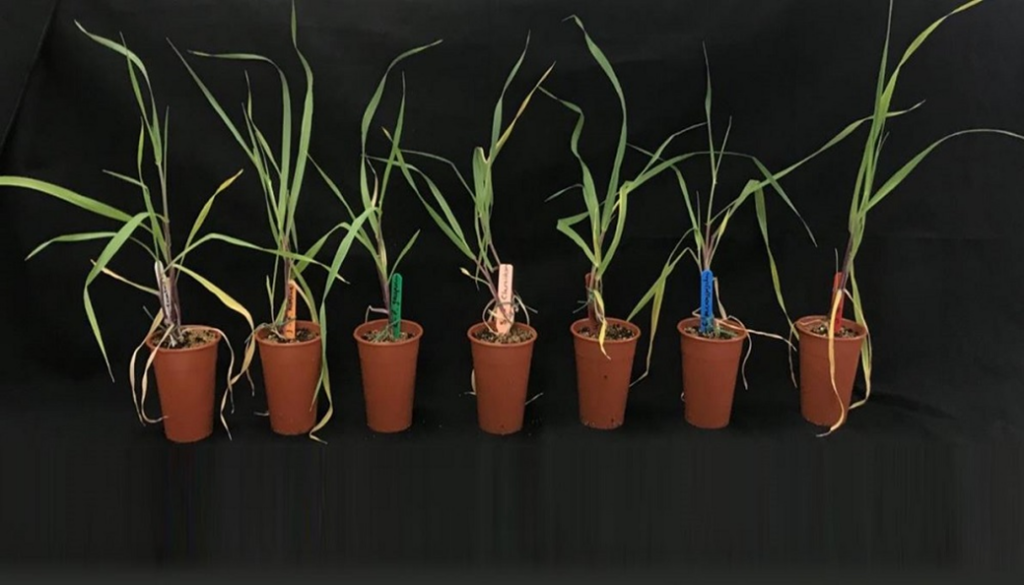
The spring barley (Laureate) plants shown are from mycorrhizal glasshouse trials (seven weeks after inoculation). Left to right: control (no treatment), Funneliformis mosseae, F. geosporum, Claroideoglomus claroideum, Rhizophagus irregularis, Glomus microaggregatum and a five-species commercial mix Selecting biostimulants
Make sure that a biostimulant is the right choice for your situation. For example, if your soils are in poor health, it may fail to support naturally present beneficial organisms, as well as any artificially added. The following saying holds true: “build it and they will come”.
The interactions between the site, the crop and the season are likely to be significant when using biostimulants. Consider trying a product in a relatively small area and compare it with the rest of the crop area (preferably over several seasons) to get a feel for whether it is right for your system.
It is also important to be clear about what you want to achieve. Define your goals and set your approach based on them. For example, if you want to manage large, accumulated soil P reserves, this will impact on the timing of your application.
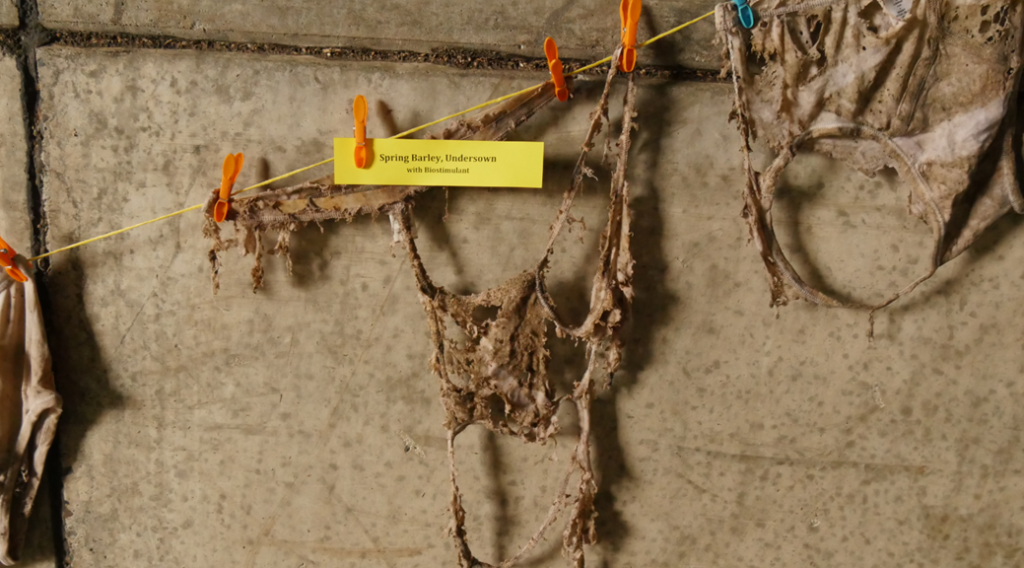
Biostimulants are often tested on commercial farms in AHDB’s Monitor Farm network. In this test, the farmer buried boxer shorts in the ground as a simple test of soil microbial activity Once you have selected a biostimulant, take time to get to know it. Follow all product guidelines to ensure the product is applied in good conditions. Consider:
- Are the species native and proven in the UK?
- How could the biostimulant interact with native soil organisms?
- Is it incompatible with your system? For example, brassicas cannot form mycorrhizal associations
- Would the biostimulant benefit from the addition of a food source? For example, AM fungi need N and P to develop the initial relationships with compatible roots
- What formulations are available? For example, seed coatings may provide better access to plant roots at early developmental stages
- Do you need to assess the chemical status of your soil?
- What are the optimum moisture and temperature requirements? Microbial activity generally declines with temperature
- How could your fungicide programme affect biostimulant efficacy? For instance, fungal inoculants are unlikely to respond well to being tank mixed with certain fungicides
- How does soil management affect the biostimulant? For example, cultivations can damage mycorrhizal networks
- Does the rotation allow mycorrhizal networks to build? The network will deteriorate in the absence of host plants
- Do certain pests cause problems for the inoculant?
Evidence base
Most biostimulant tests have occurred outside of the UK, often tackling challenges such as drought, salinity, cold, alkalinity and limited nutrient levels.
If soils are in good health, many biostimulants are unlikely to contribute much on a day-to-day basis. However, where proven to be effective under UK field conditions (and cost-effective), they could warrant regular use to insure against ‘bad’ seasons.

AHDB Environment Scientist Joanna McBurnie Evidence for yield impacts associated with the use of biostimulants was reviewed for 11 broad product categories by ADAS/AHDB in 2016. As limited data was available for UK field conditions, evidence from controlled experiments and non-UK field conditions was also used.
The reviewers found that nine of the 11 product categories were associated with a statistically significant increase in yield in at least one experiment. For the most common product categories – seaweed extracts, humic substances, phosphite and plant-growth-promoting bacteria – statistically significant yield responses were observed for 3/7, 3/4, 4/17 and 13/15 cereal experiments, respectively. Data for oilseed rape was found to be lacking for all products, and no firm conclusions could be made.
The AHDB website features in-depth information about biostimulants: ahdb.org.uk/biostimulants


-
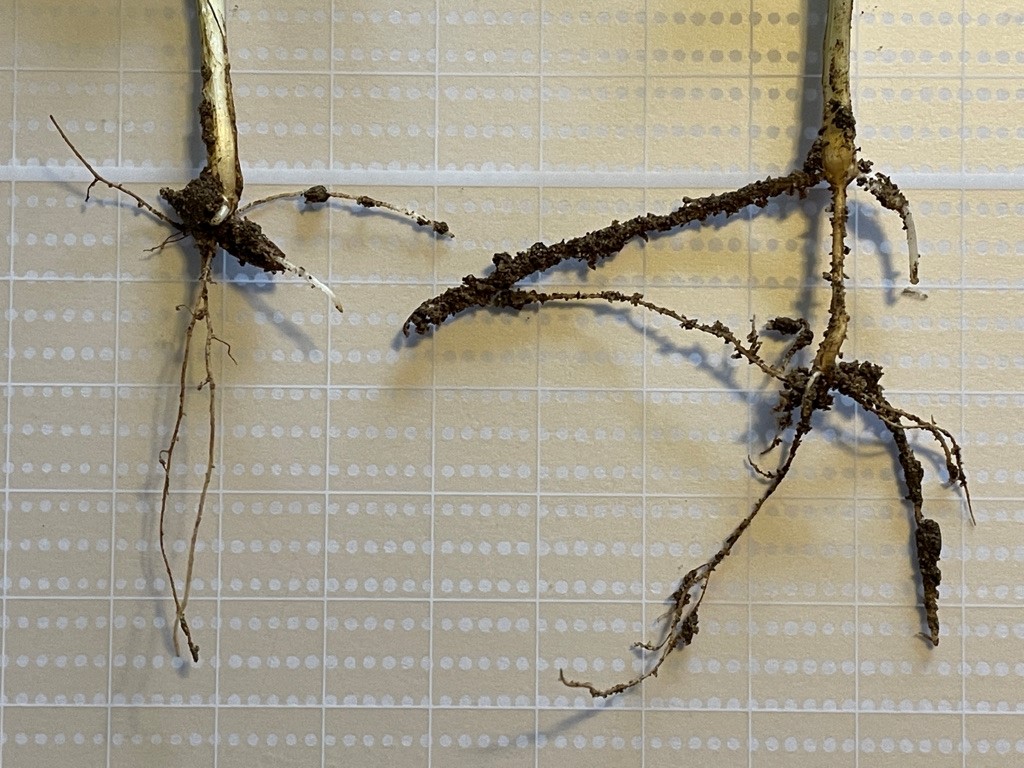
A special relationship
Plants depend on microbes and microbes depend on plants. Direct Driller explores this special relationship and asks whether novel biological amendments can supplement natural processes.
By Lucy de la Pasture
‘Very few researchers understand the degree plants are dependent on microbes for their development’, that’s the view of Professor James F White who specialises in symbiosis research at Rutgers University in New Jersey, USA.
To understand why this is, James’ team at Rutgers has gone right back in time to look at the plants that first evolved to live on land. His group has found endophytes in green algae and very primitive plants, the bryophytes (which includes liverworts and mosses), a discovery that indicates microbial communities have been associated with plants from the very beginning.
Understanding the evolutionary process is important because plants can’t develop properly and grow in the absence of microbes, explains James. A landmark evolutionary event occurred around 500 million years ago when in the evolutionary game of chance, a union was made between a eukaryotic organism (having a nucleus) and a photosynthesising cyanobacterium. It marked the origin of plant life which eventually evolved to leave the water and populate the land.
But it was also the very beginning of a special relationship between plants and microbes. When the first plants populated the land, plants needed microbes to supply nutrients to them in the thin ‘soil’, and microbes benefitted because the plant supplied them with sugars.
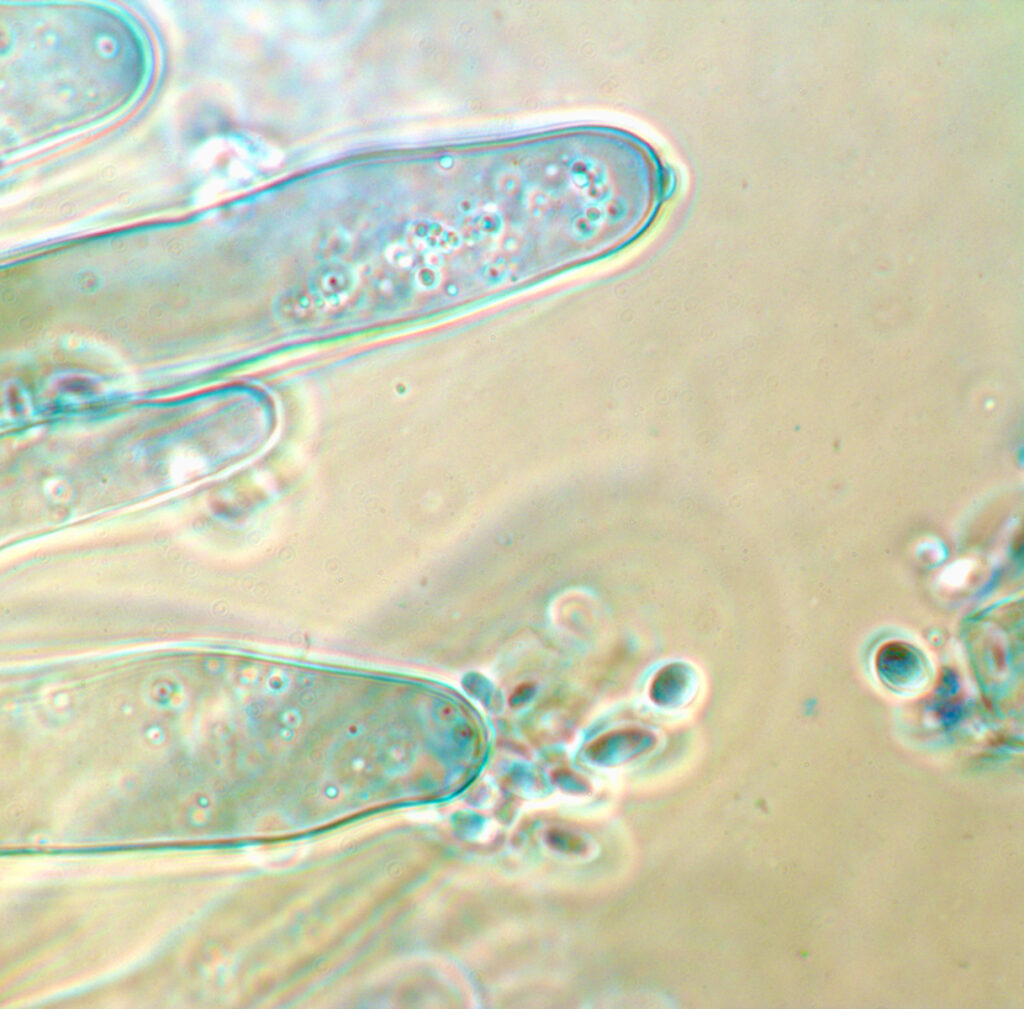
Plants secrete exudates at their root tips which serve as signalling molecules to attract beneficial communities of microbes. “It really paints a picture that when plants first came onto dry land, they had endophytic microbes within them. We now know that plants use endophytes to adapt to whatever environment they find themselves in, and they are critical not only to their growth and development but for their health and disease protection,” he says.
Endophytes aren’t single microbes, they’re communities of soil organisms that plants recruit to help them adapt to their environment. They can switch endophytes depending on their needs at any time, explains James.
The discovery of how plants utilise these endophytes is relatively new. The interaction was first observed by a group of Australian microbiologists in 2010 and dubbed rhizophagy, but it was the team at Rutger’s university that delved further into the detail and first described the rhizophagy cycle in which plants seem to ‘farm’ microbes for their own benefit.
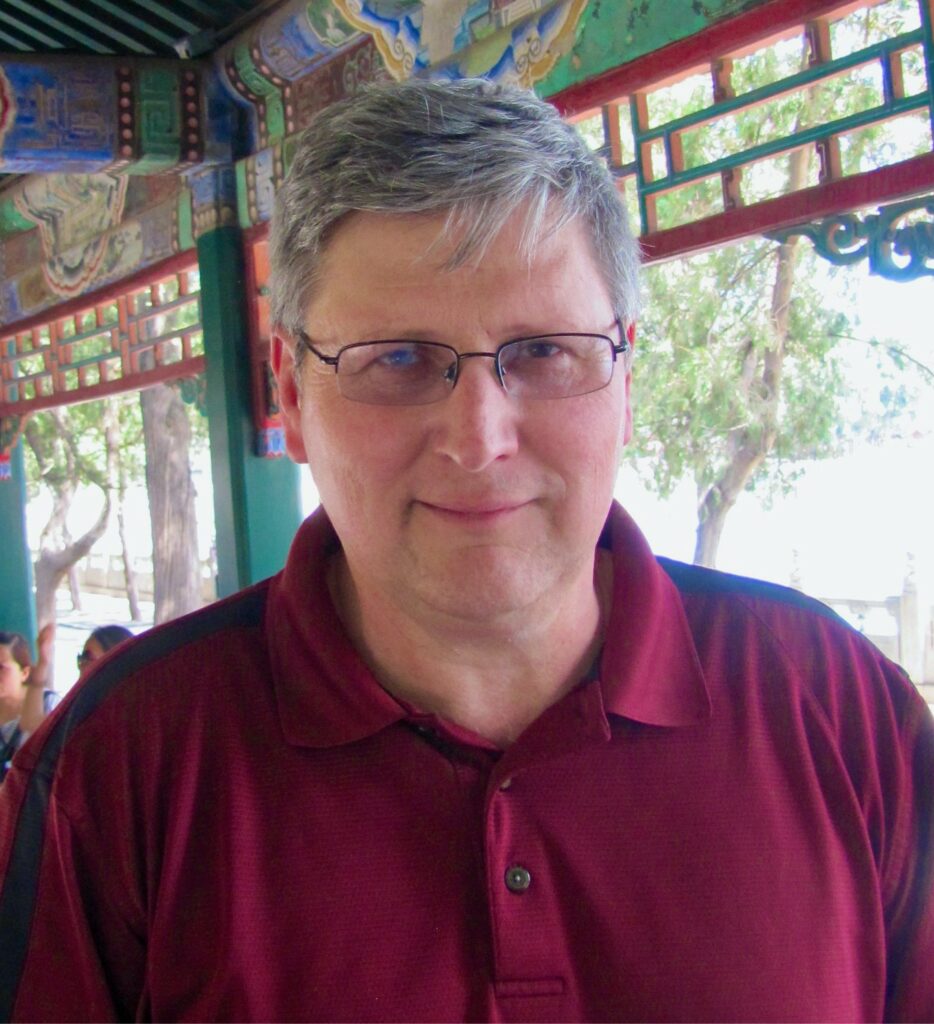
Professor James F White believes biostimulants microbes can help kickstart the rhizophagy cycle. The process gets underway by plants secreting exudates at their root tips which serve as signalling molecules to attract beneficial communities of microbes, he explains.
“At the root tip meristem, these microbes are somehow internalised by the plant – we don’t yet know the exact mechanism. Once inside the root tissues, the plant produces superoxide which oxidises the bacteria, stripping off the bacterial cell walls to leave protoplasts. It is from these that the plant extracts nutrients.”
What happens next emphasises how plants are dependent on microbes for more than just food, they also need them for root hair development. They do this by secreting substances such as ethylene, nitric oxide and other hormones that trigger root hair elongation.
Some bacteria die during the process but many that survive are ejected back into the soil from the tips of elongating root hairs, where root exudates encourage their cell walls to reform. And the cycle begins again as the microbes migrate away from the root to acquire the additional nutrients they need to grow and then return to the exudates at the root tip,” explains James.
Rhizophagy is a system common to all plants with root hairs. “Without the rhizophagy cycle, roots appear ‘naked’, without root hairs, and you don’t see this much in nature, perhaps only in very acid soils.”
Because the symbiotic relationship between plants and endophytes is especially important in their early development stages, a seed producing plant will place some of its endophytes onto and into its seeds, adds James.
“Seed producing plants systematically use these bacteria and move them onto their seeds so that endophytes are in situ when the seed germinates, aiding root hair development and elongation as well as supply of nutrients to the seedling. Later, some plants will form mycorrhizal associations which will take over the process of acquiring nutrients.”
It’s a process that’s understood by many regenerative farmers that home-save seed because they’re aware it already contains the endophytes adapted to the environment it will be planted into.

Researchers have found that endophytes are necessary for root hair development and elongation. With the focus in farming only recently turning to soil biology and recognising its important function, modern farming practices have left many soils with depleted microbial communities.
“We didn’t understand the importance of microbial communities in the soil and over the years, we’ve used so much chemical fertilisers that we’ve destroyed many of them. But now we understand the soil microbiome is important.”
Boosting microbial communities
That begs the question, can we supplement the soil biology by providing the plant or seed with endophytes?
“I’m a firm believer in biostimulant microbes because they work. Mostly they’re available as soil microbes but sometimes they come from plants. When you apply them to the seed, they’ll replace some of the microbes that were lost so that when the seed germinates, the plant will internalise these microbes and kick-start the rhizophagy cycle.”
Biologicals can also act as a supplement in soils where microbial communities are depleted but it may not be a long-term effect. “In the longer term, once the plant’s roots start growing, other microbes from the soil or microbes that happen to still be in the plant seed will come in and take over. And in many case the microbes you put on will become less important,” says James.
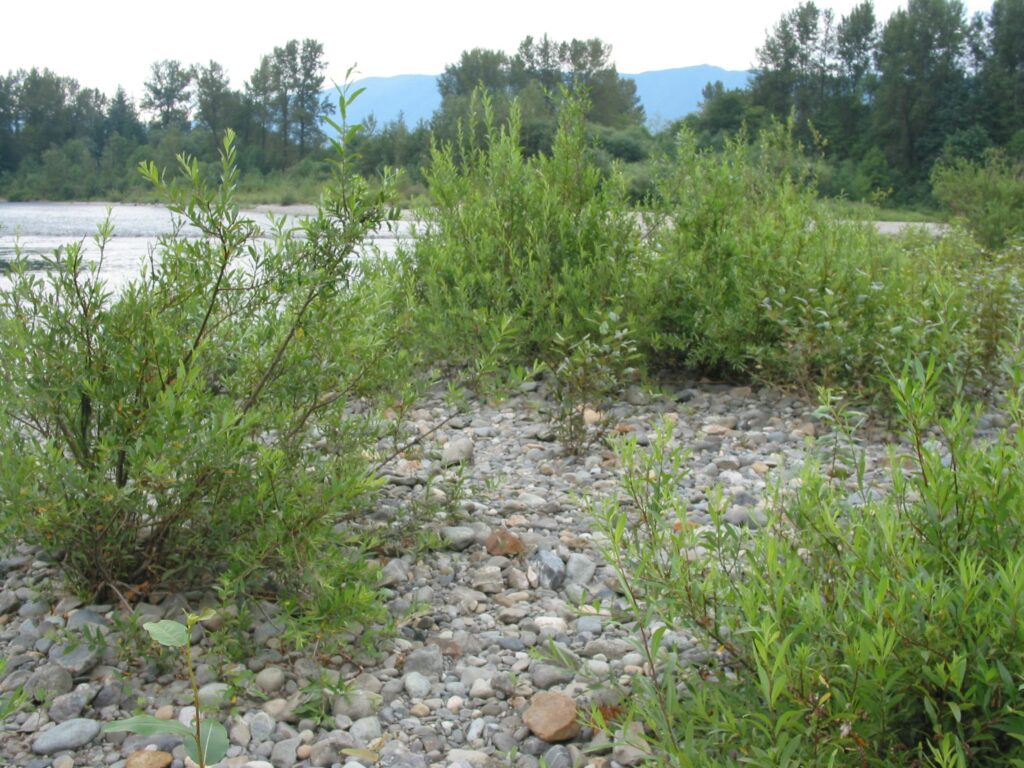
The endophytes in TIROS Max were isolated from wild poplar growing on the nutrient-poor banks of the Snoqualmie River. “However, there are some biostimulant microbes that have been isolated from plants and the intention with those is that they establish a more permanent relationship with the plant. The proviso is that the consortium selected is adapted to the crop plant and the plant needs that community in its environment,” he adds.
Not all endophytes get stuck in the rhizophagy loop, instead the plant moves some of the bacteria from the root and spreads them throughout its tissues. “Many plants will put these bacteria into their leaf hairs (trichomes) where they feed them plant sugars in exchange for the nitrogen these endophytes will fix from atmospheric nitrogen,” explains James.
Increasing nitrogen and phosphorous bioavailability
Landrace corn with nitrogen fixing ability has been discovered in Mexico. It possesses larger and longer filamentous trichomes and is highly nitrogen efficient, a trait that could potentially be brought into commercial corn varieties.
“We can see the nitrogen around the bacteria in these trichomes and we think this nitrogen fixation is happening in trichomes all over the planet.”
It was the ability of popular and willow to not just survive but to thrive on the banks of the Snoqualmie River in western Washington State that led University of Washington’s Prof Sharon Doty to investigate how these plants are able to grow so well in such adverse conditions.
Somehow, the native plants were getting more than adequate nutrition despite the very low nutrient content of the Snoqualmie River, which originates from snow melt and contains less than 0.5 mg/l total nitrogen, and without root nodules to account for N-fixation. The rocks and sand deposited by the river also supply little to no nutrients.
The team at the Doty lab isolated a wide range of symbiotic microbes from the plants’ branches and confirmed N-fixation was occurring in above-ground plant tissues by tracking labelled nitrogen. The results were also supported by the presence of microbial nitrogenase genes in the wild poplar microbiome.
“Over the past two decades of characterising these strains, we’ve determined that some of these microbes make nitrogen and phosphorous bioavailable, increase photosynthesis and water use efficiency, as well as promote plant growth, yields, and health under drought and nutrient stresses,” she explains.
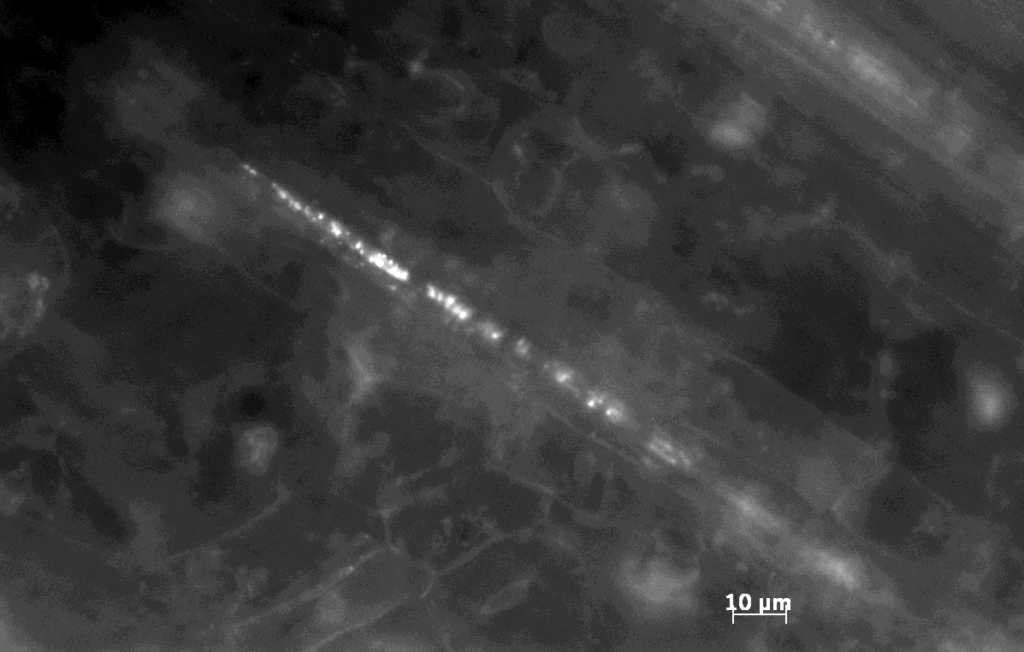
TIROS Max endophytes have been shown to be distributed through the plant by movement in vascular tissues. Using endophytes in the field
A consortium of these bacterial endophytes, isolated from the strains from the Snoqualmie wild poplar, was developed by US-based Intrynsyx Bio as a seed treatment optimised for integration into diverse cropping systems. These endophytes are now available as TIROS Max, which has now superseded Unium Bioscience’s flagship product TIROS.
“The endophytes in TIROS Max are generalist and using electrofluorescence, we’ve seen them move via the vascular system of the plant,” explains Unium’s director John Haywood.
“These plant-microbe associations are known to be beneficial for germination and seedling establishment. Seed endophytic bacteria are found naturally in these early plant growth stages, but TIROS provides a combination of highly functional strains that wouldn’t normally be present to form additional associations with the host plant.”
John describes Tiros as a ‘back-up generator’ that’s running all the time the plant is growing. “When nitrogen and other nutrients are limiting, the endophytic bacteria within the plant tissues provides a solution – helping the plant keep going and then recover once conditions become more favourable.”
As for the permanence of the association between the novel endophytes and crop plants, the data suggests a lasting effect.
“Trials have shown that the endophytes in TIROS Max significantly increase the biomass (shoot and root) over and above untreated and other seed treatments, and it is long-lasting. In winter barley trials, the difference in biomass (compared with untreated) became evident 60 days after treatment and continued to increase at a far greater rate in the following months.
“The larger leaf area has also been found to contain more chlorophyll, improving the photosynthetic capability of plants and ultimately increasing yield. Over 30 trials the average yield response was 0.58t/ha (range -0.19t/ha to 1.84t/ha) and we calculate Tiros is likely to give a 90% chance of return on investment from the data.”
As explained by James, endophytes also improve the plant’s nutrient use efficiency (NUE). In crops where Unium endophytes have been applied, the leaves have been tested to show a higher accumulation of nitrogen. “This is the case for other nutrients, including phosphate and potash, which may be particularly useful where phosphate is locked up in the soil,” explains John.
“Our trials with the TIROS Max endophytes indicate a contribution of around 30Kg N/ha to nitrogen supply. It’s able to facilitates more from less by maintaining yield where N inputs are reduced and supporting yield increases where standard N rates are applied.”
A new generation of biological seed treatment
Building on the reliable performance of TIROS, Unium has developed a unique, advanced formulation of endophytes which supports and enhances rhizophagy during early development and enables crops to fix atmospheric nitrogen (N).
The new formulation provides a prebiotic, also known as an extender, in powder form rather than a liquid. This change removes a mixing phase when preparing the seed treatment and provides more flexibility in the size of batches which can be treated, with smaller quantities of one and five tonnes now able to be treated as well as the standard 10-tonne pack.

Seed treated with TIROS Max produces more biomass above and below ground, with many more root hairs due to enhanced rhizophagy. The extender is a crucial part of the TIROS Max seed treatment and reduces the variability in performance seen historically when live biological products are applied to seeds. The new formulation delivers 13% more Colony Forming Units (CFUs) per seed than TIROS and is effective at preserving the endophytes during application, as well as supporting and promoting early population growth during germination and establishment.
“The new formulation for TIROS Max now sets the bar even higher. It marks a real advancement in seed treatment technology by supporting the biology to a greater extent, demonstrated by the higher CFUs achieved per seed,” comments John.
Want to know more about endophytes?
To celebrate the launch of TIROS Max, Unium is hosting an educational evening on endophytes in collaboration with BOFIN. Two of the leading researchers in this field are joining us in a special webinar on July 2nd at 6pm.
Prof James White of Rutgers University in New Jersey will outline his research into rhizophagy and how endophytes affect root development and Prof Sharon Doty of the University of Washington will outline the discovery of endophytes that can fix atmospheric nitrogen in non-nodulating plants and sequester phosphate.
The feature event of this educational evening on endophytes will be a ‘fireside chat’ where both researchers will be joined by agroecology consultant Ben Taylor-Davies in an interactive, no-holds barred discussion. With questions from the audience, there’s the opportunity to find out anything you want to know about endophytes, including how farming practices affect them and how effective it is to supplement naturally occurring endophytes with biological amendments.
For further information and to register, click here




-
Can you farm carbon?
As I embarked on my Nuffield scholarship in 2022, I held soil carbon markets (SCMs) in very high regard. The media buzz portrayed them as a transformative solution for promoting regenerative farming in UK agriculture. Sceptics of SCMs were dismissed as ‘killjoys’ and those likening it to the ‘wild west’ considered ‘spoilsports’.
Soil carbon dynamics
Understanding the dynamics of soil carbon (C) sequestration was essential at the start of my Nuffield. Researchers in France and the US have clarified that soil continuously loses carbon, at between 1 and 5% loss of background soil organic matter (SOM) annually. Soil micro-organisms, together with larger fauna (e.g. earthworms), break down the SOM, using its organic carbon as a food source and respiring it to the atmosphere as CO2. This loss is usually greater than C inputs in crop stubble, chaff and roots; therefore to maintain or increase soil carbon levels, farmers need to apply additional carbon inputs through cover crop residues, straw returned, manure or inclusion of grass leys in the rotation. Think of your soil carbon balance like a bank account- if your deposits are larger than your withdrawals then your balance is going to increase, and vice versa.
The soil micro-organisms process these fresh carbon additions, eventually releasing 90% of the carbon back to the atmosphere as respirational CO2. Around half of this loss may occur in the first year, three quarters loss by 4 years with the remainder being lost over the next 10 years or so. Only 10% may remain as stable persistent soil carbon which has potential for climate change mitigation and relevant for offsetting. This 10% is the excrement or dead bodies (aka necromass) of those micro-organisms. In summary, sequestering soil carbon is quite hard! Soil micro-organisms prefer to cycle soil carbon rather than just let you store it, in the process they provide the vital soil health and function farmers rely on.
The complexity of sequestering soil carbon becomes apparent here. When bold claims are made about significant increases in total soil carbon, it’s crucial to discern whether this carbon is part of the transient 90% or the more stable 10%. Selling the temporary 90% as carbon credits is misleading, as this carbon quite quickly returns to the atmosphere. As one farmer recently explained to me, selling this 90% fraction as offsets could be likened to fly tipping- collecting someone else’s rubbish but then throwing empty cans out the window as they drive down the road. I was rather impressed with their analogy!
In the case of a move towards minimal or no-till, has the farmer just re-distributed carbon within the soil profile, concentrating it in the surface? If I tidy my house and move all the downstairs clutter upstairs, the bottom floor may look tidier while the upper floor may look twice as cluttered. But the total amount of clutter hasn’t changed, I’ve just concentrated it upstairs- it works the same for your soil carbon.

Soil scientists- US based Marshall McDaniel (left, centre), France based Murilo Veloso 
France based Murilo Veloso (right, right). Information asymmetry
When selling any product, thorough product knowledge is key. It allows you to help the buyer discern if your product matches their needs and expectations, and explain any potential risks and benefits over possible alternatives. In SCMs information asymmetry between market participants can create power imbalances, inefficiencies and moral hazard. Are farmers and buyers fully aware of the credibility issues and potential risks of trading carbon credits? Are carbon brokers being open and honest about this? It seems many do not grasp the intricacies of what they are trading. If you think you’re selling a horse and the buyer later discovers you sold them a donkey- they are not going to be happy about that, even if you didn’t know at the time! I think it’s vital for farmers, buyers and carbon brokers to upskill themselves on the SCM so they know what questions to be asking of each other, to avoid potential hazards.

Figure 2:Is this a picture of a horse or a donkey? Unless all parties have clear and full information, it’s might not be clear to either party what is being bought or sold, with obvious implications. Source: Unsplash. The importance of Additionality
The carbon offset market exists solely to mitigate climate change by neutralizing new emissions and storing them in sinks like soil. For offsets to be genuine, additionality is crucial- the sale of carbon credits must drive new carbon removal activities. If these activities would occur regardless, the credits don’t deliver their intended benefit to the climate.
Let’s imagine you lead a healthy lifestyle- you eat healthily, and you normally attend two gym sessions per week. But today you decide to eat a slice of cake. It’s all good- you’ll cancel out the cake when you attend your second weekly gym session tomorrow. No you won’t. You already do two gym sessions per week, to truly cancel out the slice of cake you would need to attend an additional 3rd gym session- otherwise you’re just going to put on weight! It’s the same with carbon offsets that demonstrate poor additionality- companies can’t genuinely offset carbon emissions with an activity that was already happening or going to happen anyway. To do so would be to brush their climate responsibilities aside, because they would continue emitting without having genuinely neutralised them elsewhere, their emissions would continue to warm the climate.
During my research, I found that early adopters of regenerative practices were the main participants in SCMs. These farmers had already implemented most of their carbon farming practices in the past, raising questions about the additionality of these credits. Buyers of these credits would be claiming credit for routine actions that would have occurred anyway—effectively greenwashing. This is akin to you using your 2nd routine weekly gym session to offset that piece of cake you ate. Clearly, without additionality carbon credits don’t accelerate the adoption of regenerative farming- they maintain the status quo, and they don’t deliver their intended benefit to the climate- defying the sole reason they were created in the first place. In the absence of it driving either of those things one has to ask what the point of them is?
Additionality rules seem to be the achilleas heel for these carbon brokers. If they stick to the rules too rigidly they likely don’t have a business. At today’s low carbon prices, undoubtedly the path of least resistance for them is to use these early adopting regenerative farmers to generate carbon credits- they’re already doing these farming practices so arguably don’t need any incentive to carry on doing so. So even small incentives will be attractive to them- after all they don’t have to do anything different. Only if the carbon price increases significantly could incentives be large enough to persuade conventional farmers to change their ways- which would improve additionality.
The strict (but necessary) additionality requirement for offsets creates a potential injustice for early adopting regenerative farmers who feel they should be rewarded for their early efforts. While I agree rewarding early adopters matters, offsets seem an improper mechanism with which to do so.

Figure 3: Examples of progressive ‘early adopter’ farmers I met in the US who expressed concerns about being excluded from the SCM on the grounds of additionality, because they had already implemented their carbon farming practices in the past – a contentious issue among this community of farmer. Source: author’s own. Insetting: a Viable alternative?
Insetting, where companies work with farmers to reduce ‘scope 3’ emissions (emissions associated with the production of their raw materials such as grain or milk) within their supply chain, offers a promising alternative. Unlike offsetting, insetting keeps carbon credits within the value chain, reducing issues related to additionality and permanence. It allows companies to reward both early and late adopters, making it more attractive to early adopting farmers who feel excluded from SCMs.
Insetting has additional benefits. When a farmer reduces net emissions, all stakeholders in the supply chain can claim this ‘scope 3’ reduction, fostering potential collaboration and cost sharing. At this point I can almost hear farmers shouting ‘but I get fleeced by my supply chain!’. For insetting to be fair and effective, policy and regulation might well be necessary to ensure food and beverage companies collaborate justly with farmers. But farmers shouldn’t consider themselves helpless- you don’t have to wait around for your commodity buyer to play catch up or play fair. You can be proactive, go out and find new customers that want to buy low carbon or regeneratively grown commodities, if that’s what you want to do- those customers are out there and will likely pay a premium.

A role for policy and legislation?
In the US, the ’45Z’ tax credit policy incentivises renewable fuel producers to source low-carbon corn from early adopting regenerative farmers, an example of insetting. This model rewards early adopters which motivates others to follow suit, driving sector-wide change. Unlike the SCM, which often excludes early adopters, this approach channels financial incentives to those already practicing sustainable farming- without any issues with additionality.

Figure 4: An example of one US based early adopting regenerative farmer who favoured an insetting model based on the ‘45Z’ tax credit system. In his eyes this is superior to offsetting as it rewards the right people like him, and incentivises other farmers to farm the way he does. Source: author’s own. Conclusion
You may be reading this thinking I’ve joined the ‘killjoys’ of the carbon offset market. I haven’t. While I still support carbon offsetting in principle, it must be genuine and effective. Current SCMs seem to maintain the status quo rather than drive meaningful change, and therefore aren’t delivering their intended benefits for the climate. If carbon prices rise sufficiently, SCMs might incentivise new practices, meeting additionality requirements and genuine climate mitigation, whilst delivering a myriad of wider benefits to farmers and the environment. What’s not to like about that (if it happens!). However, this could also exclude early adopters due to strict (but necessary) additionality rules, who could be perversely incentivised to un-do past practices in order to participate- another reason why the insetting model may be seen as superior.
Climate change poses significant risks to us, future generations and especially the agricultural sector, making it vital to avoid greenwashing. For farmers to get embroiled in greenwash would only be shooting themselves in the foot.
Farmers face numerous challenges, including rising costs, climate change, and environmental regulations- it’s necessary for farmers to spearhead internal change of the sector to combat these challenges. The jury is out as to whether the SCM has a relevant role to play here, in the meantime promoting the adoption of regenerative practices for reasons beyond small financial incentives from SCMs might be more effective. There is ample support available through schemes like the Sustainable Farming Incentive (SFI) and water companies to support farmers’ transitions.
Do we need SCMs? What is their purpose if not to deliver their intended benefits? Do they present more risk or opportunity? These questions are crucial as we navigate the future of UK agriculture. For further insights, my full Nuffield report is available here.
Find Ben on X/Twitter: @soilcarBEN




-
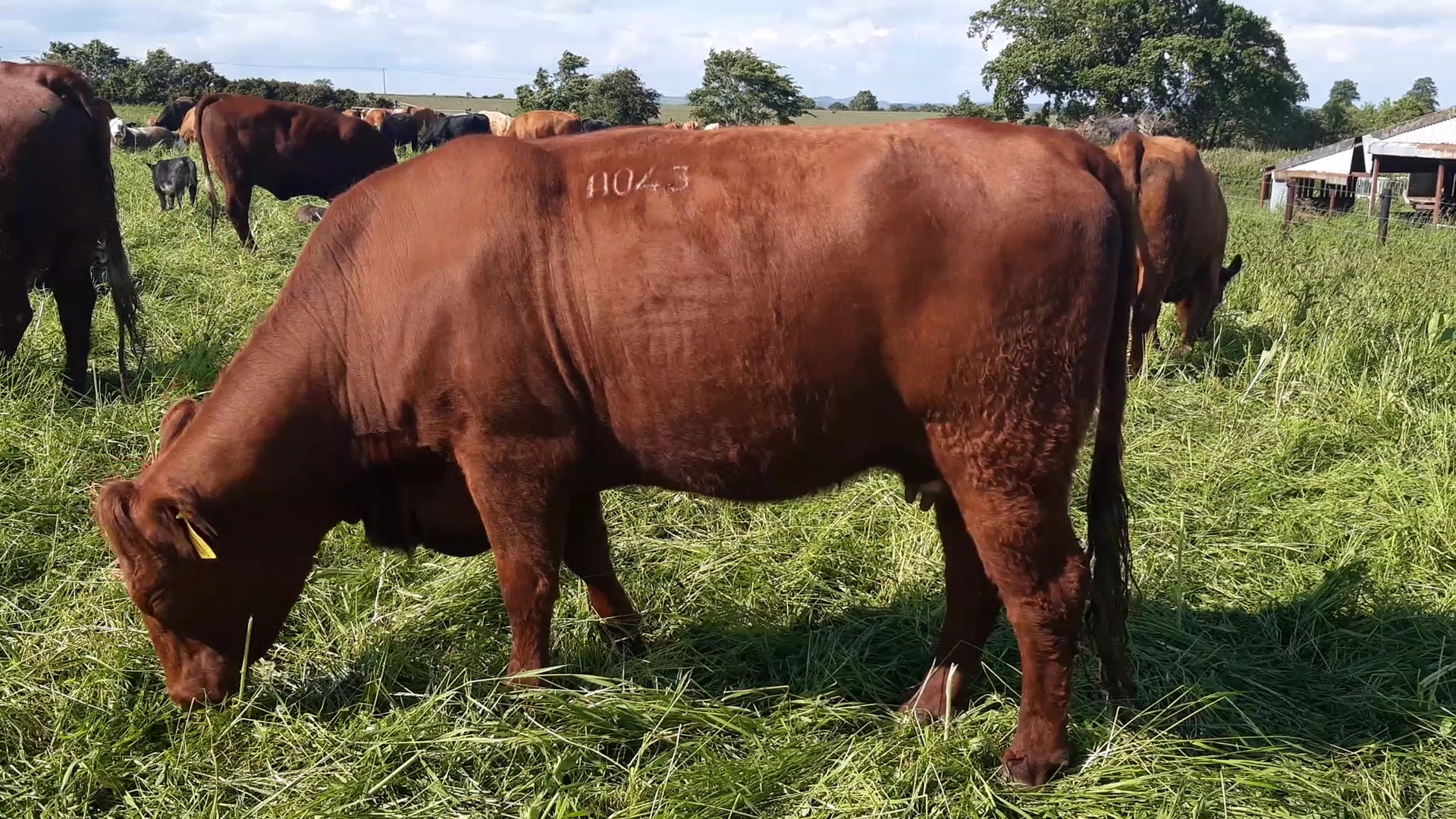
Farmer Focus – David Aglen
It was so wet, all we could do was wait patiently and relax!
May 2024
Our first outdoor calving for a generation here at Balbirnie is complete. We managed to get the cows off kale and onto grass on the 15th March. The grass was deferred from July last year. Daily moves were planned, and due to the very wet conditions, absolutely necessary. On the worst of the days, we were moving twice daily. Calving, due to start 10th April, started as planned with few problems.
Cows were moved onto fresh grass daily, the freshly calved moved as well if they chose to, otherwise they were left to catch up with the herd a few days later. We started to encounter a few problems towards the end with some heifers from a particular blood line which required vet assistance, and even a few caesarean sections. Not all the efforts were successful, unfortunately. Such outcomes are very disheartening. We spent a while trying to work out why this had happened and concluded that the ample grass they were getting led to some oversize calves. So, it may have been our management that was the main factor in this, rather than the heifers concerned. We should probably consider restricting the grass to heifers that are due to calve in the last 3 weeks of calving to reduce the risk of a repeat in future.
Cows and calves are all thriving now on the ridiculous amount of grass we have, with ‘happy lines’ appearing on the cows. These horizontal lines along the cows’ body are said to be a sign of good health on animals on a high forage diet.
Some of the youngstock were moved from kale to grass on the 1st March, the aim was to finish them a little earlier, with the majority making the transition in mid-April. Average gains have been 1.3kg/day since then. There are a few stragglers letting the side down, but a good number are gaining over 2kg/day. Poor performing genetics will be taken out of the herd as we continue to improve performance. Hopefully I can report back next year with a higher average daily gain.
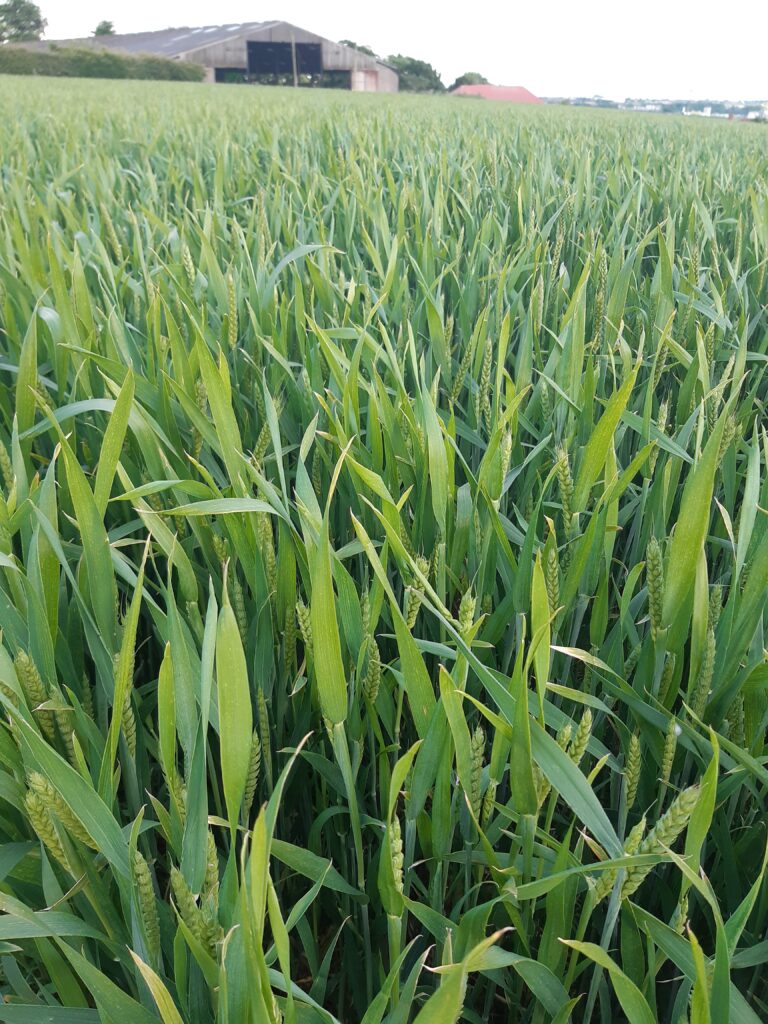
Finally, our patience gave out, we made a tentative start to sowing spring crops on the 1st April, for one day only, not unsuccessfully. However, we would have to wait another 3 weeks before conditions improved sufficiently again for round two. We managed to establish everything in conditions varying from ok to excellent in the following fortnight. Thereafter the heavens opened again. We cultivated most of the spring cereal land as we had concerns about a pan 2 to 3 inches down. This felt like the right decision at the time, Ijust hope we have not undone several years of structure building in one fell swoop. We did direct drill a couple of barley fields as a comparison and the combine will tell us if we wasted the money or not.
Since then, we have had some very growthy conditions, with crops catching up almost to where they would be normally for the time of year. The capacity of nature to do this always amazes me. However, we are starting to see the effects of the very wet May now, with yellow patches appearing in fields, adding to the fact that the land was just dry enough when crops were sown.
Winter crops have responded well to the favourable conditions, with the ugly parts disappearing among the lush growth. This makes us feel better, but they will still be ugly at harvest. It should be no surprise to us that the winter oats appear to have relished the wetter season more than anything else. I have high hopes for the output, so long as they remain standing.

We have managed with only one fungicide on the wheat, as per usual, to sort out the yellow rust. Our blend consisting of Istabraq, Revelation, Sundance, Skyscraper and Redwald appears to have been bolstered by the addition of Dawsum. There is a clear improvement in the disease pressure. I apply little science to this mix, simply adding together what grew well on the farm at the start, followed by extra varieties that perform well locally over the years. The only downside I have discovered is that the judges in The Fife Agricultural Association crop competition do not like blends – they do not look pretty enough with the heads all at slightly different heights and varying shades of green. On the bright side, that will save us the £5 entry fee from now on.
I wonder what the future will have in store for us if these wet seasons do become more frequent. Will arable cropping be worthwhile here? I am certain that we need more grass in the rotation, the only questions are how much more and how to make a good margin from it?
We are seeing fields with historically poor structure recover remarkably quickly once put down to grass and grazed appropriately. Our fixed costs are already paired to the bone, so any further reduction in the arable area would need to see a slight redistribution of labour into livestock which is not always a popular request. The move can be eased by judicious investment in infrastructure to ensure dealing with animals is as straight forward as possible. With that in mind, the team are currently building a new livestock handling system. We have outgrown the existing facilities as we run the animals in increasingly large mobs. Most of the construction has taken place in the farm workshop. Our guys, Colin Black and Grant Ross have worked tirelessly to make what will be a very smart looking set up when finished.
Hairy vetch has been a new addition to our cover crop species. We sowed some in a mix with rye last autumn to get a look at it. Having appeared to be rather lack-lustre over the winter, especially when sown after mid-September, I have been very pleasantly surprised how it has grown since the third week of April. ‘A bit of a beast’ would be one description. A few of these fields will be taken to harvest to provide seed for next year. The rest were mown and baled up in the 3rd week of May. These bales were left in the fields, all lined up ready for next winter. The kale will be sown around them, providing the complete diet for the cattle for a portion of next winter.
We are entering the holiday season here soon. From Mid-June onwards we seldom have a full compliment of bodies as there will be someone on holiday virtually every day until early August. With that I would like to wish you all a great summer and hopefully harvest will be a pleasant surprise for us all.


-

Horizon – Our first Agritechnica
Can we justify the expense? Do we have enough staff? Do we know anyone who speaks German? Where is Hannover? These were the questions being discussed at Horizon in 2021, but the decision was finally made; “we’re going to Agritechnica 23 and we will make it a success!’”
As a young company with only 2 years of trading at the time, we committed to attending. This decision was a bold one to say the least! Not only is Agritechnica a huge financial investment, the planning, build phase and attendance of the event would also drain a considerable amount of resources from the daily operation of the business.
With credit to everyone involved, the preparations and build phase went well. The machines arrived on time, our stand builders were brilliant, nothing was left in England and all the marketing material looked fantastic. One lesson we quickly learnt was to not underestimate the time it takes to polish our machines to ‘Agritechnica standard’! After Sam Illingworth and I spent over two hours cleaning one 750 Michelin tyre each, we quickly called for reinforcements!
Several months before the event, conversations developed with the marketing team at Fendt about Horizon displaying products on their stand as part of their ‘Future Farming’ area. This was clearly a huge opportunity for us to showcase our products alongside such an established German brand. I thought I had a lot on my plate organising for Horizon to attend, but working alongside the Fendt marketing team gave me a great insight into just what level of preparation is required for the tractor manufacturers to attend such an event.
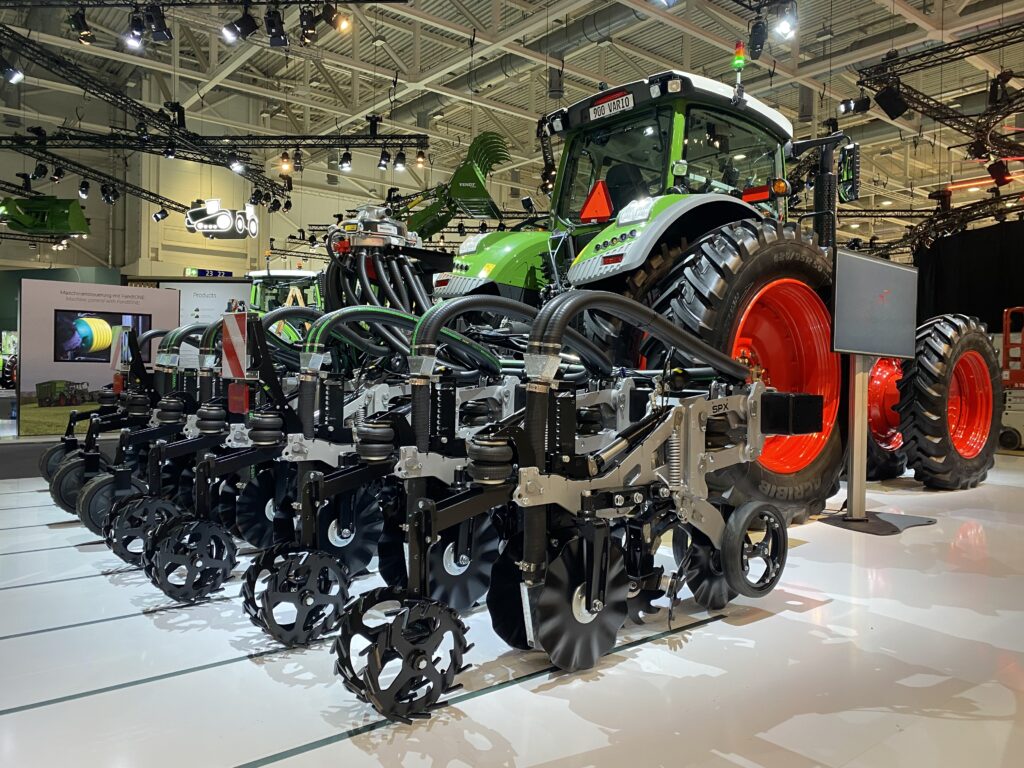
Our SPX (Strip-Till) and PPX (Planter) looked fantastic on their stand, it gave us significant exposure to farmers who weren’t aware of Horizon and added a real buzz to the occasion. We were incredibly proud to have our machines endorsed by such a huge global player and it was a fitting representation of just how far Horizon has come in such a short period of time.
7 days is a long time to work on an exhibition stand, so we staggered the team attendance to ensure we always had fresh and enthusiastic faces to greet potential customers. With no German speakers in our commercial team and no German dealers, our inability to speak German was a big concern. Thankfully Florian Roettger (our first German DSX customer) kindly offered to help us for 2 days and he was so inundated with German farmers interested in our products that after the event we agreed to employ him as our German Territory Manager.
We were delighted with how many farmers and dealers visited our stand. The event offered a great platform for us to formally launch into the German market, which is now seeing significant interest as German farmers start to transition to regenerative practices. It also gave us a fantastic platform to meet a lot of new dealers, from Agritechnica introductions we have now appointed new dealers in Italy, Switzerland, Czech, Croatia, Austria, Bulgaria and Moldova.
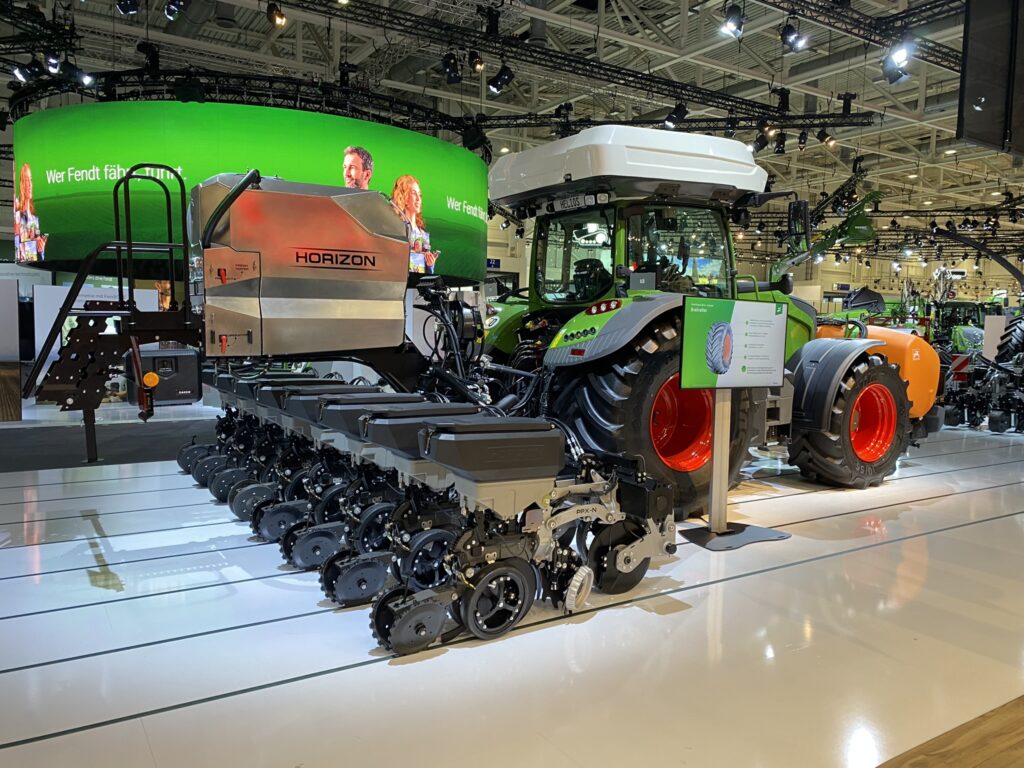
It’s always nice to shake hands on a deal at a show, with one such deal at Agritechnica leading to the sale of our first machine into China. This was a PPX Planter which we delivered in March with Jon Gray, our Head of Technical Support, travelling to China to install with the farmer.
It was also great to welcome so many British farmers to our stand, however another lesson that we quickly learnt is that when a British farmer travels abroad, he wants beer! We had planned to offer refreshments to all our visitors but massively underestimated the required volumes of beer so every morning the team had to make trips to the local Lidl to fill the back of our cars and carry in crates on a daily basis, much to the concern of the event security!
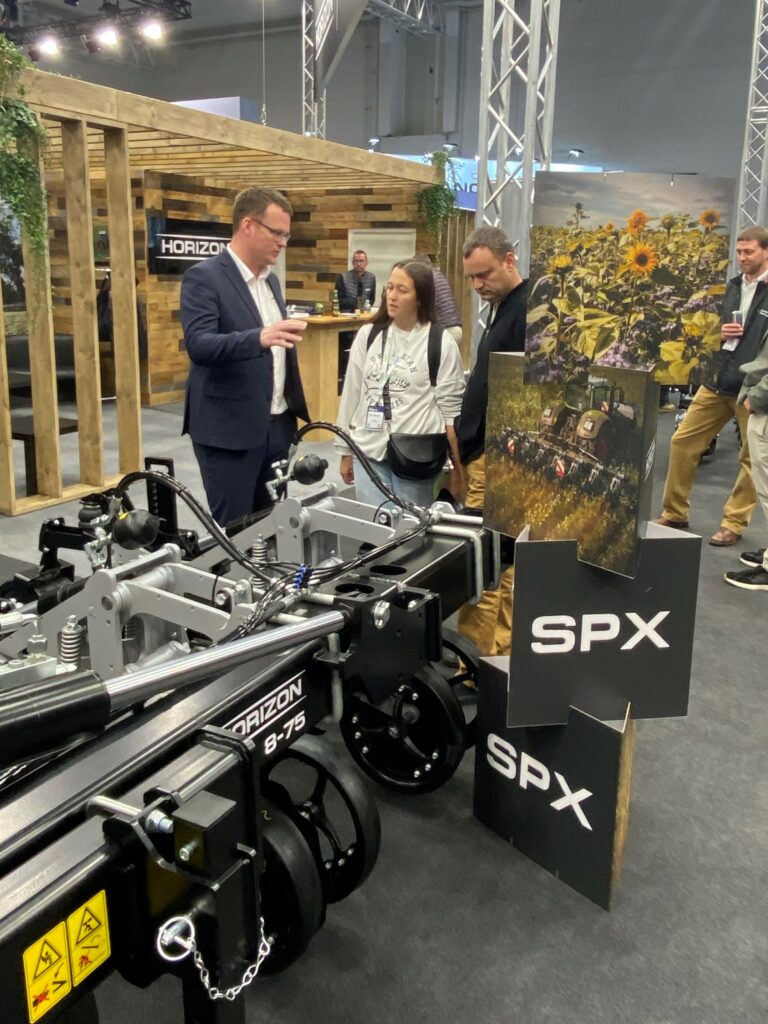
Was it worth it and will we go back? Absolutely no question we will! Agritechnica is a special show and if you’ve never attended then I highly recommend it. We have already started our preparations for next year and can’t wait to launch several exciting new product developments.
Do come and visit us at Agritechnica in November 2025, we’ll have plenty of cold beer next time!
Charlie Eaton, Head of Sales & Marketing – Horizon Agricultural Machinery


-

A brief history of the Recommended Lists (RL)
The RL has entered its eightieth year. Jason Pole, technical content manager at AHDB, explores the history and direction of the long-lived lists.
A brief history?
The RL has delivered trusted, independent variety information since 1944. Over the intervening 80 years, it has evolved and adapted through many changes to farming and wider society. Although it is difficult to capture all the ins and outs in a single article (you’d probably need a book), it is possible to pen a potted history to chart some of the key developments.

1940s and 1950s
In August 1944, World War II continued to rage across the globe, but the end was in sight. Paris was liberated (25 August) and, as nations met in Washington DC to discuss proposals for a new international body that became the United Nations, thoughts turned to the post-war period and brighter times.
One ray of light for farming was the release of the first recommended list by the National Institute of Agricultural Botany (NIAB). Published 8 August 1944, it was a major milestone. Although restricted to a narrative description of winter wheat varieties for England and Wales, it gave farmers an evidence-based list to help them sift through the many (over 100) varieties available.
After the war, agriculture relentlessly focused on output. It was a catalyst for improvements in plant genetics and production practices. For example, the post-war period saw increased UK investment by overseas plant breeding companies. It also featured advances in chemistry, including the first synthetic herbicide in the UK (MCPA, 1946) and the introduction of the multi-site fungicide folpet (1952).
In 1952, the RL introduced the first 1–9 trait scoring system. It was part of developments that moved the lists from being primarily descriptive to primarily numerical. The RL increasingly helped to quantify the benefits (and weaknesses) associated with varieties, making it easier for farmers to back varieties most likely to succeed in their systems. It also started to underpin the rise of varieties that dominated the market (often for many years). In 1953, for example, two highly influential varieties were first listed: Capelle Desprez (winter wheat) and Proctor (spring malting barley).
The change to the varietal composition across the UK, combined with improvements in agronomy, culminated in big uplifts in yield in the second half of the twentieth century. In 1944, average commercial winter wheat yields were only about 2.5 t/ha – a long way behind today’s average of about 8.6 t/ha.
The 1960s
Several notable developments occurred in the mid-60s. In 1964, the Plant Varieties and Seeds Act established a royalty payment system for plant varieties (plant breeders’ rights). The Ministry of Agriculture, Fisheries and Food (MAFF) also commissioned NIAB to test varieties for distinctness, uniformity and stability (DUS) and to conduct statutory variety performance trials. The year also saw the broad-spectrum fungicide chlorothalonil introduced and Maris Widgeon wheat listed (still the variety of choice for thatching). The following year, 1965, saw the establishment of the Home-Grown Cereals Authority (HGCA) and the launch of winter oat Peniarth, which dominated the UK market for 25 years.
The 1970s
The 1970s kicked off with Norman Borlaug winning the Nobel Peace Prize for his leadership that contributed to extensive increases in global agricultural production, saving (by some estimates) a billion lives. This included the development of semi-dwarf wheat varieties, with the first true semi-dwarf wheat variety listed in the UK in 1976 (Maris Hobbit).
In 1973, the UK joined the European Common Market. Throughout the decade, common agricultural policy (CAP) incentives increasingly influenced what was produced (and how much was produced). As part of the European Community, the UK adopted the National Lists (NL) system for cereals that established a candidate variety’s value for cultivation and use (VCU) and generated extremely valuable trial data for the RL. Varieties usually go through at least two years of NL trials before being considered for the RL trials, with data only published once candidates are added to the NL. The NL system was eventually replaced (see the 2020s section).
Chemical advances in the 1970s included the introduction of glyphosate (1974) and azole fungicides (1976). Incredibly, the decade also saw UK Flour Millers (UKFM, known as nabim at that time) celebrate 100 years since its inaugural meeting in 1878. Even more impressive is that the Maltsters’ Association of Great Britain (MAGB) celebrated 150 years of representing the UK malting industry in 1977. The decade also brought major advances in single-low varieties that helped to underpin a major expansion of the UK oilseed rape area.
The 1980s
The 1980s saw major changes in the way new varieties were produced and regulated. In particular, 1986 was a big year, with the formation of the British Society of Plant Breeders (BSPB). The HGCA levy also began support of the RL, which coordinated investment in cereal trials across the UK. Also, in 1986, UK flour millers’ usage of home-grown wheat exceeded 80% for the first time, as breeding started to deliver better bread-making varieties for the UK. In the following year, the Cambridge-based Plant Breeding Institute (PBI) was privatised (sold to Unilever), marking the end of public-sector involvement in variety development in the UK.
In the USA, the first genetically modified (GM) crop was released (a virus-resistant tobacco). In the UK, the introduction of double-low oilseed rape varieties improved end-use quality for food and animal feed, fuelling the continued expansion of the crop. The decade also saw ever-closer integration of the RL and NL trial systems.
The 1990s
The 1990s got underway with a broadening of HGCA’s scope to cover oilseeds (levy rate of 50p/tonne) and investment in variety evaluation across the UK, with the first UK list for cereals released in 1993.
In 1991, the International Union for the Protection of New Varieties of Plants (UPOV) convention recognised the right of plant breeders to collect royalties on farm-saved seed, with the first payments collected by BSPB in 1996.
The decade also saw the first HGCA strategic review of the RL (1996), strobilurin fungicides introduced into the UK (1997) and the arrival of the first fully restored oilseed rape hybrids (1996). HGCA also embraced the digital age, publishing the RL on its new website (which, thankfully, turned out to be immune to the millennium bug – like most of the internet).
The 2000s
In 2001, as foot-and-mouth rocked the UK livestock sector, the full responsibility of the RL transferred from NIAB to HGCA. The same year saw the establishment of the Voluntary Initiative (VI) to allow the industry to self-regulate its use of pesticides (and avoid the introduction of a pesticide tax) and the publication of The Seeds (National Lists of Varieties) Regulations.
The first HGCA-produced RL was launched in 2002, which included Mendel – the first oilseed rape variety recommended for growing on clubroot-infected land. In addition, 2002 saw the launch of the harvest results service (by fax and email) to release RL trial information soon after it was gathered by the plot combines.
Following the formation of the Department for Environment, Food and Rural Affairs (Defra) in 2001, MAFF was formally dissolved in 2002. This year also saw strobilurins rocked by resistance, with the first septoria tritici isolates with much-reduced sensitivity to this chemistry identified in the UK (just five years after its introduction).
The following year, 2003, saw Robigus listed (in 2019, this would be named by NIAB as the most influential UK wheat variety from the past 100 years). HGCA distributed 33,000 copies of the RL (booklet and CD) and grew over 100 varieties at the Cereals Event – a feature (including plot tours) that became an event staple for almost 15 years. The same event saw the National Register of Sprayer Operators (NRoSO) launched on the VI stand, by the then-Defra Farming Minister Lord Whitty.
In 2004, HGCA introduced its classifications for wheat exports ukp (bread wheat) and uks (soft wheat). The year also saw the introduction of the first recommended winter wheat variety with resistance to wheat blossom midge (Welford). In 2008, HGCA became part of the Agriculture and Horticulture Development Board (AHDB Cereals & Oilseeds).
The following year, 2009, saw the arrival of the first semi-dwarf-type oilseed rape varieties. It also recorded the start of a series of alarming changes to the UK’s yellow rust pathogen population, which saw some dramatic changes in resistance ratings. For example, the yellow rust rating of winter wheat variety Oakley fell to just 2 (from 6), with the variety subsequently removed from trials.
The 2010s
The 2010s picked up where the previous decade left off. The wheat yellow rust pathogen population became increasingly diverse, following the arrival of the “Warrior race” in the UK (2011). Subsequent investigations revealed the race comprised a diverse population (which forced a new approach to naming races).
Some varieties became more susceptible to the disease, others withstood the invasion. The latter includes Crusoe (first listed in 2012) that maintains a resistance rating of 8 on the current (2024/25) list. The variety has had a good innings. Syngenta also launched the first SDHI fungicide (isopyrazam) for cereals in the UK in 2012, bringing improved septoria control, just as AHDB’s fungicide performance data was starting to clearly show the decline in activity of azoles against the disease.
The 2010s also saw a peak of innovation in oilseed rape breeding, with multiple new traits being introduced onto the RL. In 2013, DK Imagine CL became the first oilseed rape variety listed with a specific recommendation for tolerance to imidazolinone herbicides (a Clearfield® variety). In 2015, V 316 OL became the first HOLL (high oleic and low in linolenic acid) variety listed, which opened value in the food-oil markets. This was followed by Amalie in 2016, which became the first turnip yellows virus (TuYV) resistant winter oilseed rape variety listed. Tempering the good news was the start of restrictions on the use of neonicotinoid seed treatments in 2013, marking the beginning of a major decline in oilseed rape crop areas.
Though average UK winter wheat yield peaked at 8.9 t/ha in 2015, rising costs, increasing resistance to crop protection products and tightening regulations saw a subtle shift in what farmers wanted from varieties and the RL. A survey of growers in 2018 saw disease resistance topping their priority list – a shift from a survey in 2011 that recorded fungicide-treated yield as the most important factor. These findings led to changes in RL recommendation processes that made it easier for varieties with lower yields but good disease resistance to get onto the lists.
Key varieties recommended included spring malting barley variety Laureate, which still dominates the malting market, Skyfall, which brought feed-wheat yields to the quality bread-making Group 1s, and KWS Extase, which had “exceptional untreated grain yield of 95% (compared with the treated control varieties)”.
At the end of the decade, AHDB launched a variety selection tool to provide a way to navigate, select and visualise trial data for winter (wheat, barley, oats and oilseed rape) and spring (barley and oats) crops.
The 2020s
The current decade kicked off with the launch of the RL app, which adds value to the online tables and booklet by delivering the latest variety data to farmers’ fingertips. It replaced the pocketbook publications, following a request for more digital sources of information. Initially based on RL 2020/21 data, the app gets a major update each year, just after the release of the latest lists. Unlike its physical counterpart, it also gets minor updates throughout the year to include, for example, the latest candidate data.
Due to instability in rust populations, RL 2021/22 introduced major changes to wheat brown and yellow rust disease resistance ratings. It used weightings to give the most recent years’ results more influence, making the ratings more sensitive to changes in the pathogen population. The same edition also saw the first winter wheat variety (RGT Wolverine) with a specific recommendation for resistance to barley yellow dwarf virus (BYDV).
Following high levels of septoria tritici in the 2020/21 growing season and concerns about the breaking of resistance in varieties with Cougar in their parentages, AHDB issued the RL 2022/23 septoria tritici ratings early. We also revised the cereal lodging ratings to help pull apart varietal differences and make the ratings more representative of what is seen in the field and improve their consistency.
Since RL 2023/24, the tables for winter wheat have included information on young plant resistance to yellow rust. Some varieties are susceptible at the young plant stage but develop moderate to high levels of resistance later, after the adult plant stage resistance kicks in. In a season with high levels of yellow rust (like this year), it is good to know how well a variety resists the disease across its life cycle.
The UK officially “Brexited” at the start of the 2020s. One of the many ramifications was that new GB and NI Variety Lists (VL) officially replaced the NL system. It hasn’t had a major impact on the RL, but it has increased some costs and been occasionally inconvenient. It should settle down, with time.

The RL today
Over its lifetime, the RL has grown in scope and depth. It now involves several hundred trials each year, spread from Cornwall to Aberdeenshire, and delivers annually updated variety data for 11 crops in recommended and descriptive lists.
- Number of trial plots = 24,735
- Length of plots (combined) = 293 km (almost London to York)
- Width of plots (combined) = 47 km (almost Coventry to Worcester)
- Plot area (combined) = 54.4 ha (75 Wembley football pitches)
Note: figures based on AHDB-funded RL trials for harvest 2023.
AHDB has committed almost £10 million to the current five-year RL project phase (2021–26). However, the total project cost, which includes cash and in-kind contributions from breeders and processors, is closer to £25 million.
The evolution continues
In 2023, over 900 people responded to the latest RL review to direct the future of the variety trialling project.
This reconfirmed that the RL is widely used and highly valued, but it also identified that the RL needs to continue evolving over the short, medium and long term. An early development in response to the review was immediate changes to the current (RL 2024/25) booklet. Over 300 farmers and agronomists voted on alternative formats, with 72% opting for the same option, which provides the following advantages:
- Variety data can be viewed on a single page
- A new fold-out key provides at-a-glance information
- Agronomic information is in a more prominent position
- More information is included about the RL trial system and recommendation process
We have also strengthened our digital tools:
- A comparison feature added to the RL app
- A variety index tool published to show the year a variety was first and last listed
- Variety selection tool updated faster (with plans to develop a simpler “entry level” version)
With more resources directed towards digital tools, we will no longer produce the summer edition of the RL booklet. Compared to the winter (first) edition, demand for this edition was relatively low.

Low-input research
Most RL trials aim to limit the influence of (controllable) factors that may hold back genetic potential. For example, the fungicide programmes help minimise disease in treated trials and nitrogen is applied to maximise yield in feed varieties. The RL trials also test other extremes, such as in the fungicide-untreated trial series.
It is important to test the extremes. However, we are often asked to provide information more in line with commercial practice. It was a point raised again in the RL review responses. We have funded two three-month scoping reviews to examine evidence of varietal responses under lower-input scenarios (nitrogen and fungicides, respectively). The initial results from these reviews will be issued this summer.
For the latest RL news, visit: ahdb.org.uk/rl




-
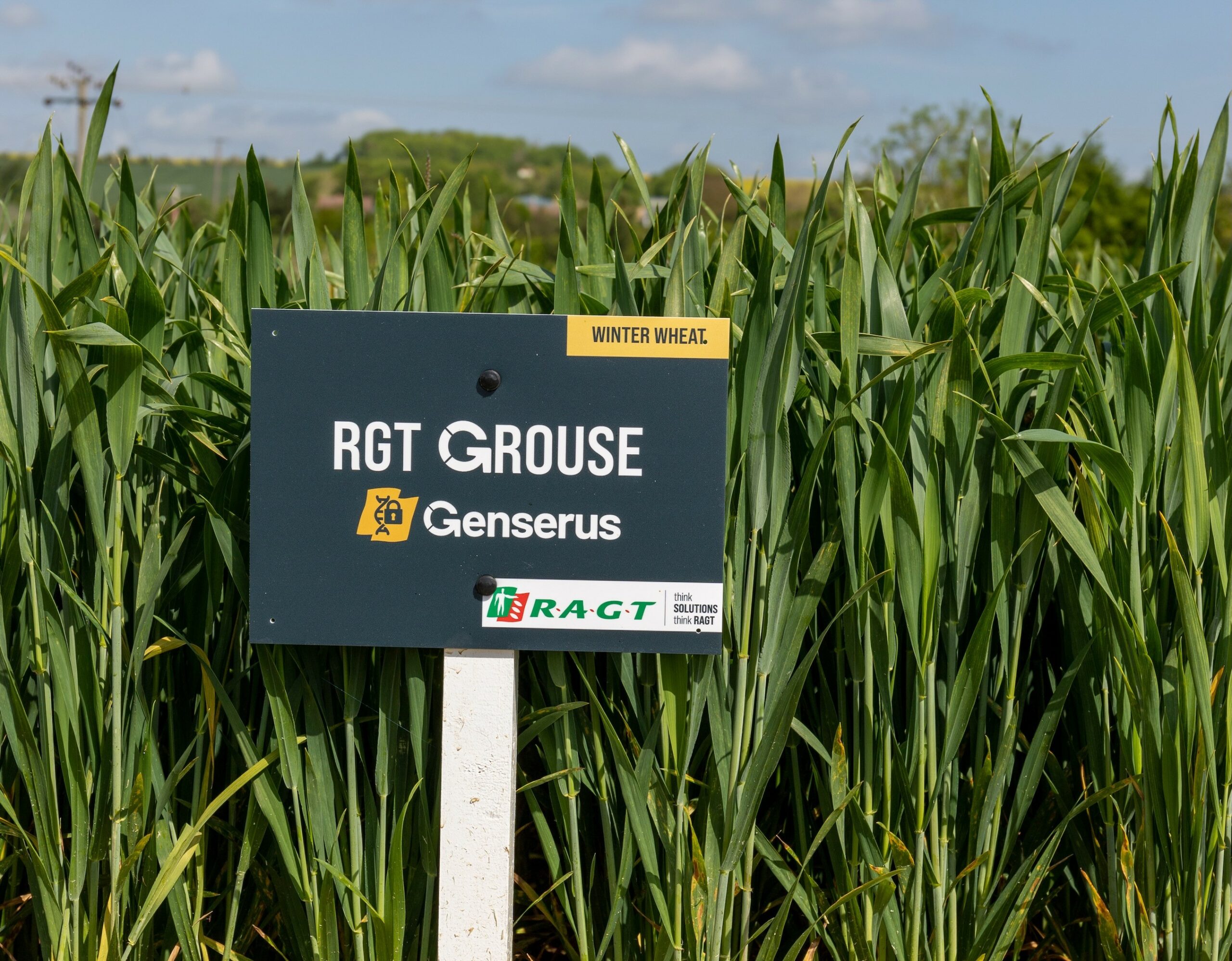
BYDV threat under the spotlight at TWB Farms open day
The increasing threat of barley yellow dwarf virus in winter wheat and the potential of resistant varieties to overcome it was the focus of a recent open day at TWB Farms, near Lichfield.
Host farmer Clive Bailye set up an observation trial last autumn, comparing 15ha of BYDV-resistant RGT Grouse with a similar area of Dawsum. Clive, who started the farm’s no-till/cover crop regime 16 years ago, hasn’t used insecticides in that time. “We’ve not had any noticeable symptoms or yield loss, apart from occasional hotspots under hedges and trees, but are we losing yields from sub-clinical disease?
“That’s one reason I’m keen to find out more about BYDV-resistant wheat. I also I want to maintain my no-insecticide policy, and the trait is even more interesting now we can receive £45/ha under SFI where we don’t use insecticides on crops.”
How much he will learn from his trial this year is unclear. Despite large numbers of aphids being recorded in the area, very few were seen in crops and BYDV symptoms are absent. “The general consensus is that the wet autumn reduced aphid numbers,” said Clive, who intends to follow up next year with a split field trial, using qPCR testing to pick up any sub-clinical presence. RAGT managing director Lee Bennett says unprotected crops can suffer severe damage when aphid numbers are high. “BYDV is the single most damaging pest of winter cereals,” he added.
According to AHDB figures 82% of the UK wheat area is susceptible to BYDV and the average annual loss would be 8% if no action was taken against the disease.
“We’ve artificially recreated that situation at our breeding station in Cambridge, applying inoculated aphids to plots of our own BYDV-resistant wheats and several popular conventional varieties,” Lee said. “None were sprayed with insecticide. The BYDV-resistant varieties were untouched, but we saw 2% to 60% yield loss in the conventional ones. At the upper end it’s not worth getting the combine out.”
He added: “Neonicotinoids gave fantastic control of aphids for two decades, but after their withdrawal in 2019 we’re left with often prophylactic applications of pyrethroids as the only chemical control.”
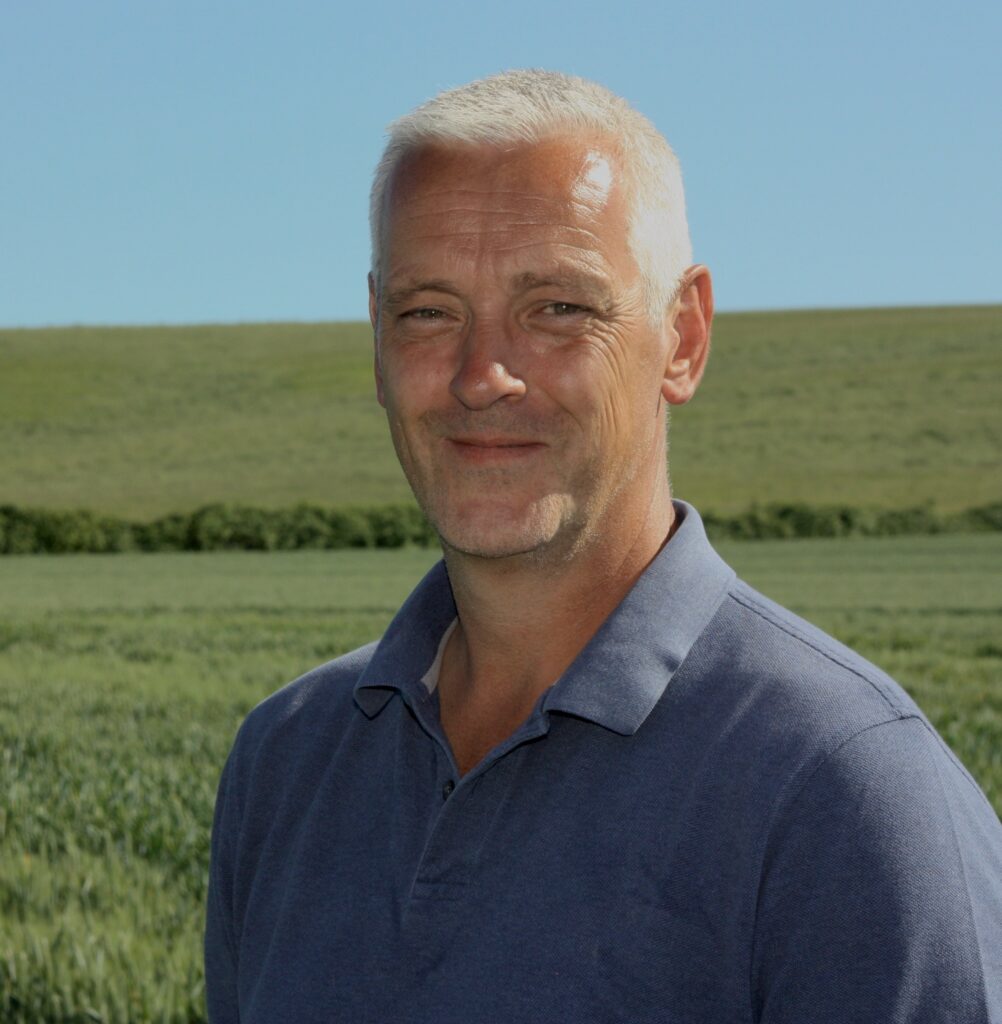
Lee Benett | RAGT | Direct Driller Magazine However, RAGT’s Genserus (BYDV-resistant) varieties offer complete season-long control, whilst providing economic and environmental benefits, ease of management and security he said (see table).
In addition, currently available varieties (see panels) offer a real opportunity to claim the £45/ha SFI payment for insecticide-free crops thanks to their double resistance to BYDV and orange wheat blossom midge.
“Genserus varieties offer the best control of BYDV, do not affect the environment and are cost effective,” Lee said. “The trait element costs around £14/ha, the equivalent of buying and applying just one pyrethroid spray.”
BYDV control
Currently, growers who choose to spray are totally reliant on pyrethroids, said entomologist Dr Alan Dewar.
“Nothing else is registered for use in the autumn at the moment, so this must change,” he says. “The risk of selection for resistance is very high.”
Of the two main aphid vectors of BYDV, the bird cherry-oat aphid is controlled well by pyrethroids, although resistant/tolerant clones have recently been recorded in Ireland and China.
By contrast, resistant grain aphids were first recorded in 2009, and control failures have been reported in four years since then, most recently in 2023.
Quoting Dr Stephen Foster of Rothamsted Research, Dr Dewar said: “Whilst currently a moderate resistance, it will become important if lower rates of pyrethroids are applied and/or coverage is inadequate.”
Non-chemical methods for reducing BYDV are available, he added. “Delaying drilling until the aphid threat is diminished works well – aphids do eventually stop flying through November and in December. But late drilling can result in reduced yields and getting crops drilled in the first place is also subject to inclement weather, as in 2019 and 2023.”
Conservation control, such as flowering margins that encourage predators like hover flies, has helped to put an end to major epidemics of grain aphids in wheat ears in the summer, Dr Dewar believes. “However, it is less easy to rely on predators in the autumn, when virus transmission is the main threat.”
The use of BYDV resistant/tolerant varieties has worked well in barley. “This should be regarded the best approach as you don’t need pesticide at all,” he notes. “The big question is whether yields can match the top conventional varieties – there have been problems with that in barley, for example.”
However, Dr Dewar added; “Epidemics of aphids carrying BYDV are occurring more often in the autumn due to global warming, causing BYDV infection the following spring.”
If regulatory pressure on chemistry increases and aphid resistance climbs, might BYDV-resistant crops be the only solution?
Genserus varieties available this autumn
RGT Grouse
- Group 4 type hard feed wheat
- Resistant to BYDV and OWBM
- Suitable for early sowing when BYDV risk is highest
- High tillering capacity and retention
- Good disease resistance
- Very good yield potential
RGT Goldfinch
- The UK’s first quality wheat resistant to BYDV and OWBM
- Very strong disease profile – best in official trials
- Clean, consistent, and sustainable
- Excellent baking quality to date
- Strong miller interest
- RL Candidate variety – accelerated production means seed is available.



-

Farmer Focus – Ben Martin
May 2024
I finished my last DD article (Sept 23) by wishing everyone well for the Autumn drilling campaign – well I do not think anyone could have predicted what the weather gods were about to throw at us! A relentless wet Autumn, winter and spring have taken their toll, on crops, the land and everyone associated with getting crops through to harvest. I have never ever wished away time, but I think getting harvest 24 done, in the shed and slate wiped clean will be a welcome relief for everyone.
Now more then ever, we need the right people around us. I was given a super snippet of advice recent, that has made a real mark on me – Its as important to repel the wrong people, as it is to attract the right people…
Now, we all have friends / family who like a moan, but we must position ourselves so we can attract at least 51% positivity from the people around us. Easier said then done with close family etc, but in our professional / farming lives this is relatively straight forward. Only attend meetings you know you will leave feel inspired and not drained. Go to the farm walks where people will be curious and challenge each other, not knock the methods and solutions others are bring to the table. Employ the staff that will push the business (and you) forward, not just cruise along in 2nd gear. Get rid of the advisors / consultants around you that are nothing but doom and gloom – sure you need these people to be realistic, but they should also be motivating you as well if they are doing their job properly.
Base UK and the Wildfarmed Growers community continue to be two groups that, to me, really highlight the power of working together, challenging each other, and celebrating the wins together. Find your own versions of these groups at all costs!

Sheep grazing the Wildfarmed Abbey Road field in April. On the farming front the past 10 months have been the biggest challenge possible – that goes without saying. What I have seen and reflected on are the small wins, even during this nightmare season. People that have been prepared, ready to go but flexible in their approach have made the most of the tiny windows of opportunity to get seeds in the ground. Overall, this has paid off, with even late crops looking decent in places. Spring oats are THE spring crop for 2024 – well, from what I have seen outside my front door and locally anyway. It has been fascinating to see how farmers and crops have reacted to this spring. Mega high disease pressure has seemed to be a constant in most mono varieties – is this just a freak one off spring and not to take too much notice of it in regards to variety selection, or will we see more emphasise on blends and stronger, but lower yielding, varieties??
June and early July are now about the social aspect of my job, get out to shows / trials and farm walks. A fascinating farm walk at Hall Farm, Knettishall back in May, has set the tone for this summer I feel. The enthusiasm from James, and his farm guys, is clear to see whilst we were hearing about their Regen journey. Big improvements made to soil health, crop resilience and their farm environment in such a short space of time is truly inspirational.

The wonderful Six Inches of Soil, screening at Shimpling Park Farm Next up is the local residents farm walk and a screening of six” of Soil here on the farm I live on. This was an incredible afternoon last year and I am sure it will be repeated this time. Getting non farming folk on farms, explaining what is happening and getting them engaged is so important. The questions and curiosity shown is always good fun!
And then to round things off with Groundswell Festival – 2 days to be a massive sponge and try absorb loads of information at the various talks, whilst enjoying the social side of the event!

Typical dog walk this spring – miserable and very soggy for all involved! Although the coaching and mentoring aspect of my business will continue as normal during harvest, I am very much looking forward to being back on farm and getting stuck into physical farming. This balance of different work is so important to me and keeps me at the coal face and experiencing, with dirty hands, exactly what is happening on farms in 2024.
Safe harvest everyone and look forward to catching up in the Autumn time.
Take care.
Ben
Twitter – @bencm305
IG – https://www.instagram.com/agri_support_uk/


-
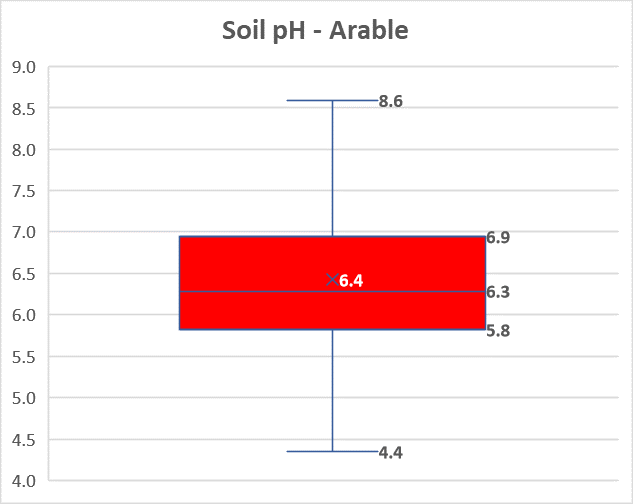
Why liming should be on every direct driller’s agenda
Soil pH is a critical basic tenet for successful crop production, so why do soil samples suggest so many fields are outside the target pH range? And are zero till systems more at risk?
Regenerative farmers or those not using tillage to establish crops in the rotation could be at risk of creating a low pH environment in the top 5-10cm of soils, which could impact nutrient availability, soil health, and greenhouse gas emissions.
Over 50% of arable soils are below the target pH 6.7 recommended in AHDB’s Nutrient Management Guide (RB209), according to results from over 50,000 soil samples analysed by NRM laboratories between June 2022 and May 2023.
“Nearly 25% of the samples were pH 5.8 or lower, which is extremely low for most arable crops,” NRM soil and crop nutrition agronomist Sajjad Awan says. “While only around a fifth were in the more acceptable target pH range of 6.5 to 7.0.”
That probably accurately reflects industry studies suggesting arable land is only limed on average once every 12 years, way beyond the traditional recommendation of once every five years.
Longer-term data from the NRM study suggests that the pH of arable soils dropped sharply in 2022/23 compared with previous years.
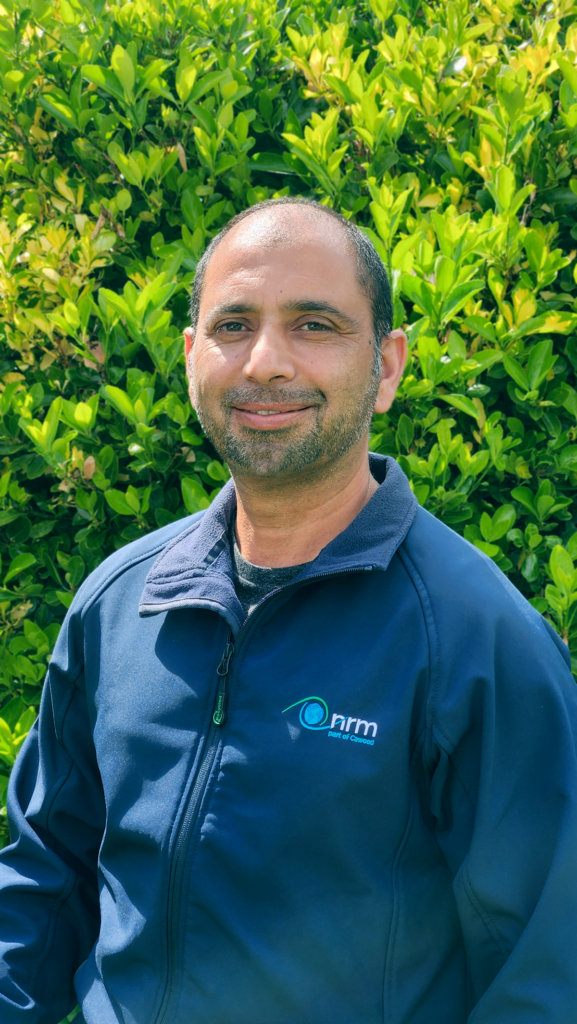
Sajjad Awan “There could be multiple factors behind the drop in pH from arable soils this year,” Sajjad stresses. “It might be due to weather, an increase in samples from lower pH soils or from specific management systems. There are so many variables and the information provided with each sample is not sufficient to allow us to draw firm conclusions.”
That includes whether there is any interaction with cultivation practice, although soil experts agree that there is a higher risk of acidification, at least at the soil surface, on farms where zero tillage is used.
“If you don’t disturb the soil, you’re effectively layering or stratifying the soil,” explains Neil Fuller, technical director of the Atlas Sustainable Soils Programme.
The breakdown of organic material produces weak organic acids, so growing a lot of cover crops, incorporating straw, or using other organic amendments will tend to lower the soil pH, he says.
“So you may end up with a layer on the soil surface which is a little bit sharper in pH than the base soil. If you don’t cultivate that layer, it will potentially progressively develop through the soil.”
While some regenerative farmers are attempting to reduce the amount of synthetic nitrogen in their system, nitrogen fertilisation or fixation by legumes can be another contributory factor to lowering soil pH, notes agronomist Steve Townsend from soil management specialists Soil First Farming.

Steve Townsend “If you look at the ammonium part of ammonium nitrate, when that gets taken into the plant, the plant at root level snips off two hydrogens and takes in amide, which is NH2 rather than NH4.
“Those two hydrogen atoms go back into the soil and cause the soil to become more acidic as more of the cations are filled up with hydrogen rather than calcium, magnesium or potassium.”
Similarly, the denitrification of nitrate can cause acidity, while high rainfall, such as we’ve had this winter and spring, can leach calcium and magnesium through the soil, leaving a higher concentration of hydrogen ions attached to clay particles.
Optimum soil pH is crucial for nutrient uptake. Most arable crops like slightly acidic conditions, hence the target of pH 6.7, as that is when most nutrients are available for plants to absorb.
As soon as soil pH is below the target, fertiliser efficiency drops, as it is locked up or lost, with plants not having access to it. For example, at pH 6, nitrogen efficiency drops to 89% compared with pH 7, while phosphorus is even more affected at just 52% efficiency. At that pH, nearly 20% of fertiliser is wasted, a figure which increases to 32% at pH 5.5, according to AHDB figures.
Micronutrients can similarly be affected, Neil says. “At high pH or low pH they change form or function. For example, manganese at a low pH is a four positive cation, while as it moves towards pH 6.5, it becomes two positive, which is what the plants need it as.”
It’s good farming practice to keep your pH where it needs to be, Steve stresses.
It’s not just about pH, he adds, but also about calcium. “If you want soil biology to grow and flourish, you need enough available calcium. We use calcium for our bones, soil biology uses it for its skins.
“It’s also important as a nutrient for crops for rooting, to help nutrition be picked up and for soil structure. Of the cations in the soil, calcium is the biggest and is the only one that improves soil structure through flocculation.
“It has two positive charges and holds onto a negative bit of clay on either side, which it holds there. We see that as tilth and crumb and improved structure.”
Choosing liming products carefully is vital, he warns. “Look at reactivity rather than neutralising value.”
Reactivity quantifies the effectiveness and speed of reaction of a liming material.
“Reactivity equals grind size; how finely ground the lime is you’re buying.”
Research by the University of North Carolina shows that pH continues to drop following lime coarser than 0.84mm, while between 0.3mm and 0.84mm, it takes 15-18 months post-application for pH to peak. In contrast, material between 0.15 and 0.18mm will react within six months and hold pH at that level, and even finer lime will increase pH immediately, peaking at eight months before beginning a slow decline.
British Sugar’s LimeX meets that spec, says the firm’s LimeX business manager, Glenn Carlisle. LimeX is a co-product of lime being used within the sugar purification process to remove impurities from sugar juice.

Glenn Carlisle from Limex “You end up with a very fine particle-size lime product, making it very reactive. In Ground Lime quality standard tests, it scores 100% on the reactivity test, meaning that 100% of the product you put on land will do the job of pH amendment.”
As a minimum, 85% of the LimeX product will pass through a 0.15mm sieve, with 97% passing through a 3.35mm sieve. At that spec, Glenn says in the right conditions pH should rise within 4-6 weeks, whereas other products can take from six to 12 months before you see a rise.
“The additional benefit of the fine particle size is that the calcium is more available, and you can increase the available calcium concentration in the soil. That has additional benefits in terms of flocculation and soil conditioning, which benefits aeration, drainage, microbial activity and provides a calcium nutrition source for the plant, which helps natural disease control,” Glenn concludes.


-
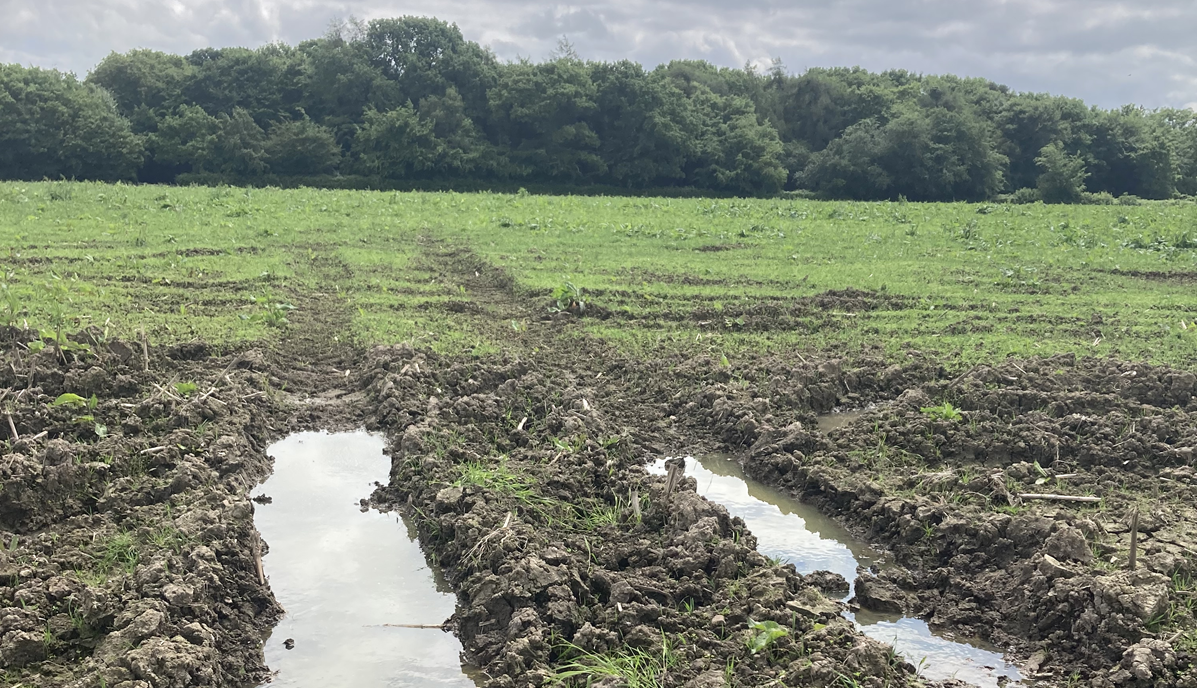
Spring 2024 Challenges in Grassland & Forage Crops
With the delayed Spring, forages stocks have been severely challenged, late turn out meant that already depleted Winter stocks were used, and grazing paddocks left longer than expected in warm wet conditions continued to grow so quality was reduced. This alongside being unable to apply fertiliser particularly in the heavier soils of the west has meant a late start to both grazing and silaging in the livestock sector. Even now soils have not recovered, recent silaging has been under challenging conditions in many areas trailers and foragers being pulled in and out of fields. This means that the silage is likely to be poorer quality due to late cutting, little or no fertiliser applied so yields not what they could be and the resulting damage and compaction to fields potentially having a knock-on effect for 2nd cut. Upon completion of VESS soil inspections around the country, compaction can be seen because of heavy winter rainfall, animal treading following a wet Autumn and Spring, this will mean that plant roots will be restricted from taking up water if the summer turns dry reducing the ability of the plant to endure periods of drought.
In order to help the soil recover its essential that nutrients are balanced and increasingly this is not the case in livestock situations, muck and slurry being added to the soil whilst improving organic matter can mean that potassium and magnesium levels become above optimum, locking up essential access to magnesium in the Spring when animals most need it to prevent staggers, (hypomagnesaemia) generally magnesium is increased in the diet during this period to help prevent this lethal condition but this ends up in the soil increasing the tightness of the soil profile and decreasing the ability for water to filtrate. If that also coincides with low pH there is a continuous cycle of problem, cause, solution, adding to the soil’s poor health meaning that it becomes less resilient to the weather challenges.
The solution is usually not a simple fix as complex as the problem starts it needs to be unpicked at chemical, biological and physical level. Soil sampling regularly is essential not only from a farming rule for water prospective which requires a basic soil test but also investigate more depth with either a broad spectrum or if you are grazing livestock an animal health test which will give you indicators regarding selenium and cobalt essential for livestock health and fertility. This can then be supported by tissue tests of the grass and silage mineral tests. Going a step further will allow an increased focus on balance. The magnesium and calcium balance is very important to help reduce the risk of tight soils and improve the soil health, this is easier to remedy if the pH is low as liming is a simple solution to improve nutrient availability and calcium is essential for animal health too. Addressing the chemical imbalances goes a long way to improving the conditions of the soil but compaction still needs to be remedied. Digging a visual inspection pit (VESS) is key to understanding where in the soil profile the problem is. If it is near the surface, it is likely that animal treading is the cause, particularly after such a long and wet winter. A sward slitter is the best friend of grassland and will increase the air into the soil, then allow water to filtrate through the soil profile this kickstart will improve the nutrient availability to the grass and increase grass growth, improving yield and longevity of the ley. If the compaction is at a deeper level than a sward lifter might be necessary, bear in mind that after treatment there is more likelihood of compaction so care must be taken to avoid that.
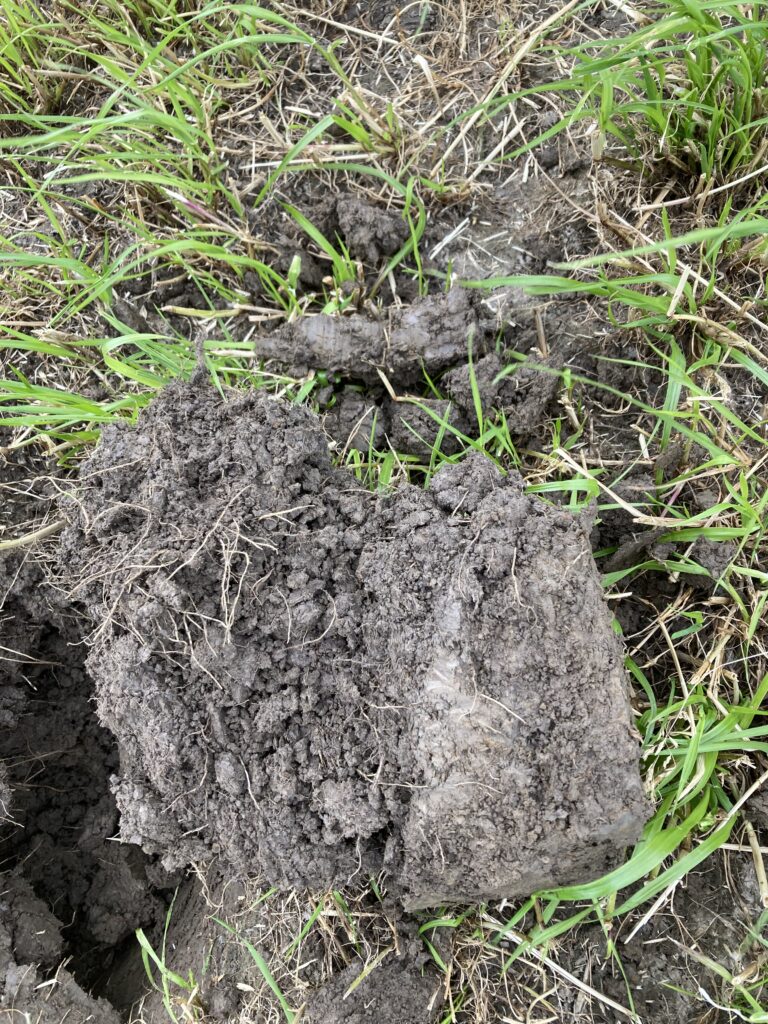
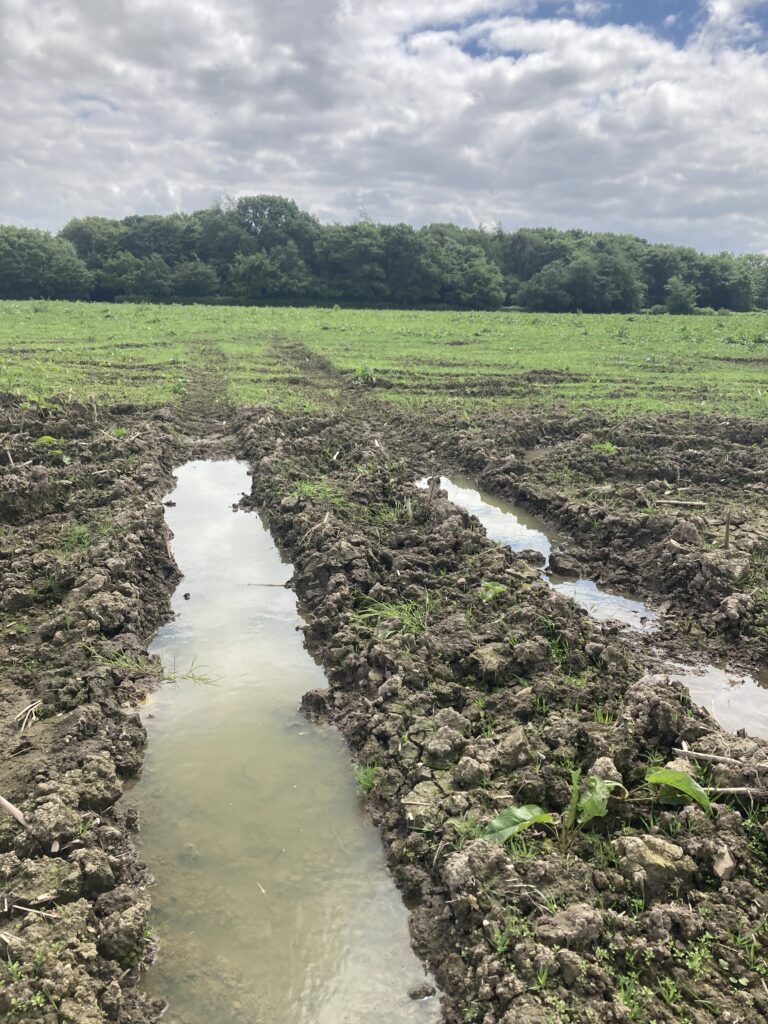
After a difficult and protracted 1st cut is essential to make the best of subsequent cuts, analysing slurry will help ensure improved decisions regarding applications of Nitrogen. The slurry varies according to the animal’s diet so each farm slurry will be different making judging nutrients applications difficult. Regular analysis will build a pattern, and this can be used in the Nutrient Management Plan throughout the season so help improve nutrient efficiency on farm throughout the season.
Remembering to adjust the Nitrogen applications to account for clover content is important as clover will not nodulate if it is overfed and this will result in less production of nitrogen. Clover in the diet is not only very digestible but providing cost effective protein which saves on bought in expensive proteins also improving the carbon footprint of the farm. With SFI’s proving to be popular with both arable and livestock farmers there is an increasing emphasis on clover and multi species leys will be sown in the thousands of acres across the UK, these will take some management with so much variation in the makeup of the mixture it is important to aim for the end goal when deciding what to have in the ley.
Chicory for example will want to be left out of cutting leys as it is prone to get woody in maturity that will be unpalatable at best and at worst will break the plastic on bales. The mixtures that qualify for SAM3 can have little high quality grasses so ensure that if you are wanting high production and quality the choice of grass in the mixture is important, the makeup of what is actually in the field will not only vary due to the original makeup of the mixture but when it is planted, the soil type and the nutrient balance when it is planted, each season they will be made up of different percentages of plants dependent on growing conditions that will suit the individual variety of plant.
There is a lot of learning to be done both from growers and agronomists that look after these crops, weed control is virtually non-existent apart from spot spraying so it is essential that it is sown into as weed free situation as possible and that the nutrients are right to get the crop off to a good start. This can be done using an overseeding method if the conditions are right, grazing down the competition before drilling is essential, animals can be kept in the field until the new seedlings start to emerge, then they should be taken off until established, followed by a light grazing. Footfall is helpful to gain seed to soil contact soon after drilling. Take note of species that do well and that which does not and then mixtures can be modified to make best use on the land that it does well on.


-
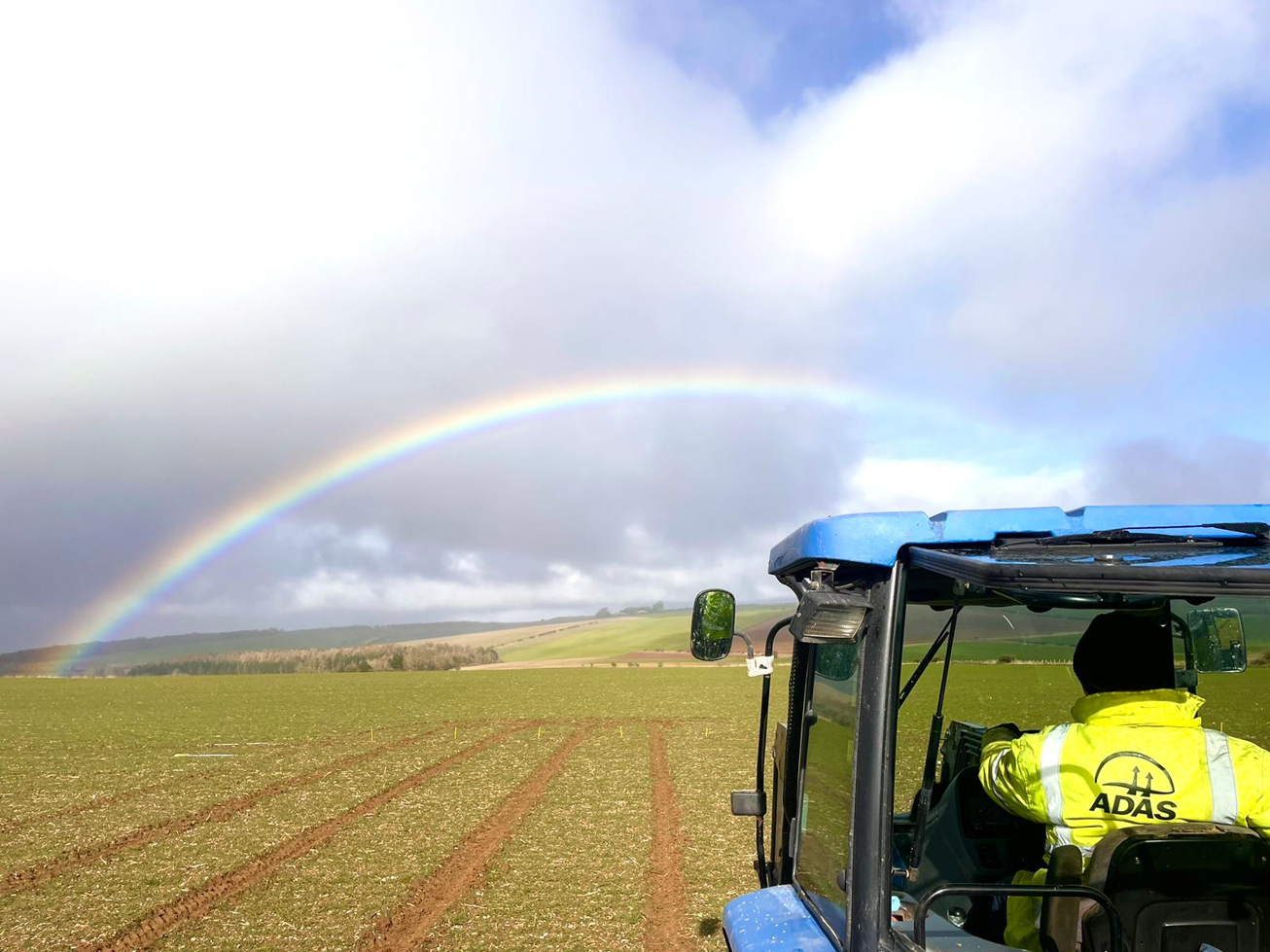
Going for gold
Growers compete with scientists to find the most profitable crop nutrition strategy
The ADAS Nutrition Challenge is back for 2024 with thirteen growers competing against ADAS crop scientists and RB209 best practice guidelines to see whose crop nutrition strategy ends up achieving the highest gross margin over nutrient costs.
This year’s challenge takes place on the Yorkshire Wolds with each entrant being assigned a 48 m2 plot of winter wheat (variety: Gleam) replicated 4 times. A separate control treatment will receive nutrition in line with RB209 field assessment recommendations and a second control treatment will be left untreated. Other than fertiliser and biostimulant choice and timings, all other crop applications will remain exactly the same for each entry.
Abbie Marshall, ADAS Crop Research Consultant and organiser of the ADAS Nutrition Challenge said: “We came up with this competition idea back in 2022 in response to the dramatic rise in fertiliser prices. We want to find that point of peak profitability, the sweet spot between nutrition investment and maximising yields.”
“Looking past the financial aspects, we know that the manufacturing of artificial fertilisers comes at a heavy carbon cost. If a grower knows how to fine-tune their fertiliser applications and fully meet the needs of their crop, it will not only help their own business bottom line but will also have environmental benefits too.”
At the start of the season, ADAS provide the entrants with all the information they would need to plan their initial approach, including soil analysis, soil nutrient supply (SNS) measurements, and grain analysis from the previous year’s crop.”
Abbie explains: “As the season progresses, we send progress updates of NDVI and tissue analysis data of the control entries to the entrants so they can regularly review and, if necessary, re-adjust their strategy to reflect what’s happening in the field. They also have the option to visit their crop in person and do whatever they deem best to get that profit return.”
At harvest, ADAS will then assess biomass and take grain samples from each entry to review yield, crop nitrogen use efficiency and gross margin. At the end of the trial, all entrants will receive their trial results along with their ranking against the control and ADAS treatments.

Abbie Marshall Lessons learnt from the 2023 challenge
In last year’s competition, the ADAS treatment used soil nutrient supply (SNS) measurements from the field to guide the rate of N applied. Taking this approach rather than relying on standard RB209 SNS figures meant the ADAS entry achieved the highest yield of 11.2 t/ha, over a ton above the RB209 control plot at 10.1 t/ha.
Another standout entry was biostimulant manufacturer Azotic achieving a yield of 10.3 t/ha, similar to the RB209 control, by applying 30 kg less N/ha along with a single application of Encera and MOLYTRAC 250 in April.
Abbie summarised: “2023 really showed us the importance of checking and adjusting your nutrition programme throughout the season, either by looking for visible signs of nutrient deficiency or taking tissue samples at key growth stage timings. Reviewing the success of a nutrition programme at the end of the season through grain analysis, such as YEN nutrition, is critical. That’s really when you’re going to find out how well you read the crop throughout the season.”
Sarah Kendall, Crop Physiologist at ADAS, agreed “It’s great to see the Nutrition Challenge following the 3-step approach to nutrient management, which has been developed as part of the Horizon Europe and UKRI funded NUTRI-CHECK NET project. From discussions with farmers in the UK and across Europe, we’ve found that many farmers plan their nutrient management approaches, but few ‘check and adjust’ or ‘review’ their nutrient management plans. The nutrition challenge is showing there is lots of scope for improving gross margin by applying the 3-step approach which is great to see”.
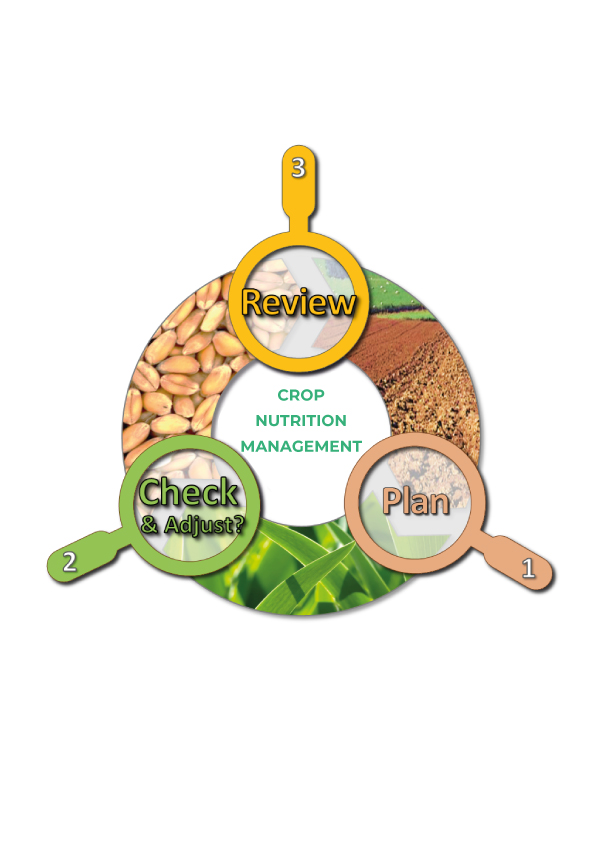


-
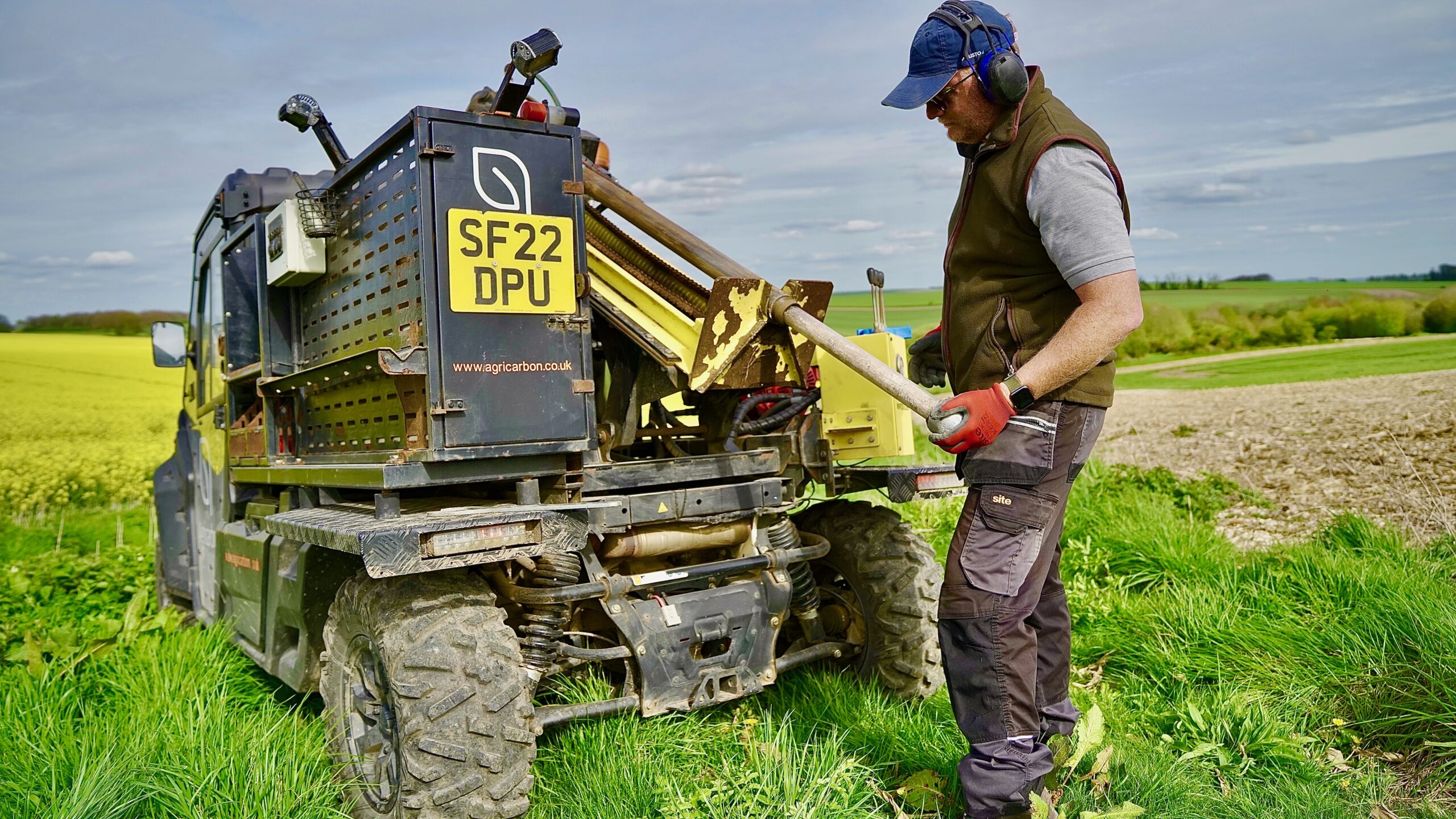
Soil Carbon Measurement: A Practical Guide for Farmers
Farmers are crucial in managing one of our most vital resources: soil. The health of soil impacts not only the yield and quality of crops, but also its ability to store carbon, an increasingly important tool in global efforts to combat climate change.
For those in agriculture, understanding how to measure soil carbon accurately is not just beneficial; it’s a necessity. Here’s a straightforward look at how to approach soil carbon measurement, with accuracy and reliability front-of-mind.
Why Soil Carbon MattersSoil carbon is a good indicator of soil health. For farmers, healthy soil means healthier crops and livestock, and a reduced need for chemical inputs, which lowers costs and improves environmental impact.
But what does soil carbon have to do with climate change? Storing carbon in the soil means removing it from the atmosphere. Even if we stopped emitting greenhouse gases (GHGs) today, there is already too much of a concentration of GHGs accumulated in our atmosphere. Therefore, locking carbon in our soils is crucial in tackling the climate crisis.
The Economic Benefits of Soil CarbonThe economic incentives for enhancing soil carbon are significant, especially when considering the number and size of companies needing to reduce their Scope 3 emissions, and the potential to participate in the Voluntary Carbon Market (VCM).
Scope 3 emissions encompass the indirect emissions from a company’s value chain, including agricultural processes. Companies can pay farmers within their supply chain to adopt practices that build soil carbon.This provides an additional revenue stream for farmers and enhances the marketability of their produce to environmentally conscious consumers and companies.
Alternatively, there are the carbon markets, where carbon credits (1 credit = 1 tonne of carbon dioxide equivalent) can be traded, incentivising farmers through financial rewards for their sustainable farming practices. As demand for carbon credits grows, the value of these credits can increase, making soil carbon management a financially attractive strategy alongside its environmental benefits.
The Importance of Accurate MeasurementThe accurate measurement of soil carbon is vital for farmers looking to capitalise on the growing markets. Consistent, reliable measurement practices are essential for understanding soil health and meeting the stringent verification standards regulating the carbon markets.
These markets demand high levels of certainty in the data reported, meaning that any discrepancies can lead to disqualification or reduced value of carbon credits. Thus, investing in robust measurement techniques and aligning with respected standards[TS1] (such FAO-GSOC, GHG Protocol Land Sector and Removals (LS&R), and VM0042 from Verra) bolsters credibility and maximises the financial benefits of sustainable soil management practices.
Farmers can more effectively participate in these markets by ensuring their soil carbon data is accurate and trustworthy, securing a sustainable income stream while contributing to global carbon reduction efforts.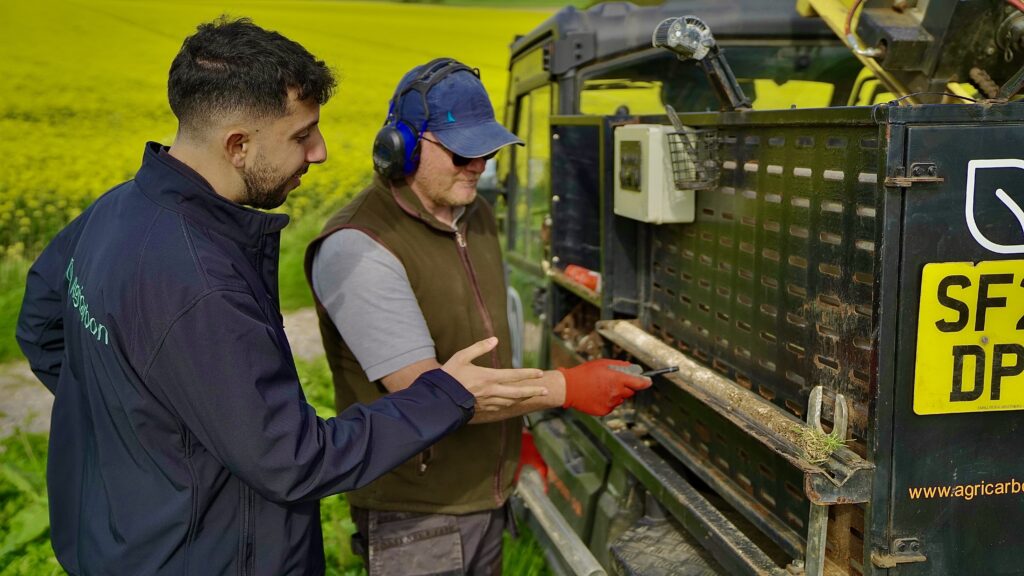
How to Accurately Measure Soil Carbon
Direct soil sampling is the only accurate method for measuring soil carbon [TS2] method for measuring soil carbon, and it is a process simplified by Agricarbon (www.agricarbon.earth).
Their method involves taking soil samples from multiple points within fields while maintaining the integrity and structure of the soil. Agricarbon advocates for sampling deeper than the conventional 30cm, as a significant amount of additional carbon can be stored at depth up to 1 metre, which often goes unmeasured.
Once collected, these samples are sent to their purpose-built laboratory and are analysed for soil organic carbon and bulk density. Agricarbon streamlines this procedure with automation and provides an easy-to-follow report, making what might seem a daunting task straightforward, efficient, and affordable.
This method offers precise data that is acceptable for all major protocols and standards associated with carbon credit revenue generation. It equips farmers with the information to make informed decisions about soil management and carbon sequestration efforts.Getting Started
For farmers new to this process, here’s how to begin:
- Establish a Baseline: First, determine the current carbon stock in your soil. This baseline will help you track progress and assess the impact of your management practices over time.
- Plan for Monetisation: There are several incentives available; farmers can work with established carbon credit developers or begin conversations with the sustainability or procurement managers of their purchasers to discuss payment for the implementation of sustainable farming practices.
- Create a Carbon Management Plan: Working with agronomists and consultants is crucial to devising a plan tailored to your circumstances. This plan should encompass strategies for enhancing soil carbon sequestration based on your farm’s unique characteristics and commercial objectives.
- Plan for Regular Assessment: Soil carbon stocks change slowly, so monitoring changes in carbon stock— typically three to five years — is essential to understand trends and adjust practices accordingly.
Conclusion
Farmers have a unique opportunity to influence agricultural productivity and environmental sustainability through effective soil carbon management.
With robust measurement techniques, farmers can enhance soil health, participate in carbon credit markets, and contribute significantly to global efforts against climate change. By accurately measuring and managing soil carbon, farmers ensure the long-term health of their land and open new avenues for revenue, reinforcing agriculture’s vital role in our planet’s sustainable future.Get Involved
Interested in learning more about how you can measure and manage soil carbon on your farm?
Reach out to Tom Sadan at Agricarbon for expert guidance and tailored solutions. Whether you’re new to the concept or ready to measure, Tom can provide the support you need.
Contact him via email at tsadan@agricarbon.earth or visit the Agricarbon website at www.agricarbon.earth to discover more.




-
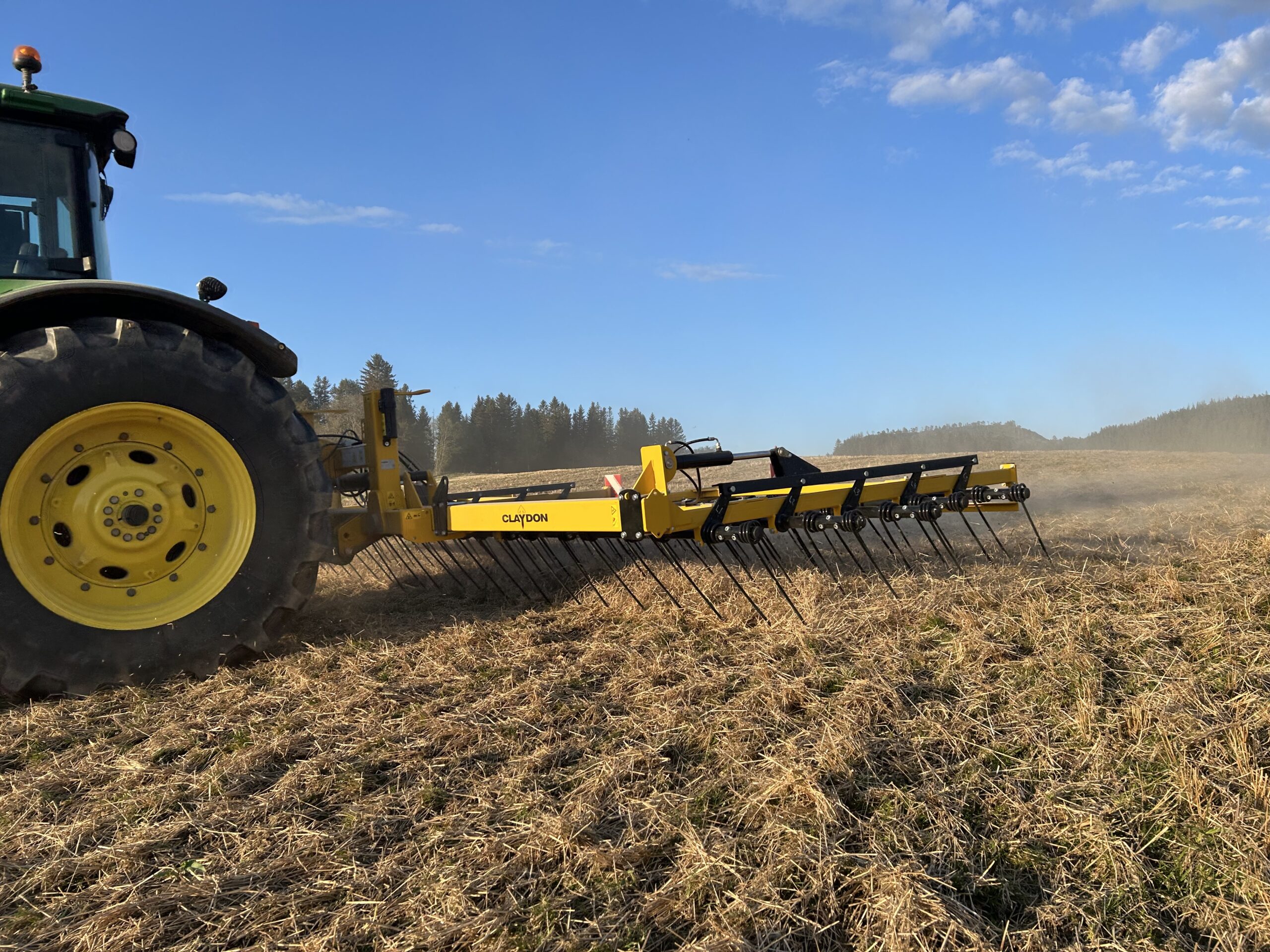
Straw Harrow – An underrated tool for all seasons
Article written by Claydon Drills. See Claydon Drills at Direct Driller at Cereals Event 11 & 12 June 2024
Using your Straw Harrow before or after you direct drill has a hugely positive impact on your crop establishment results.
Managing stubbles
Patchy establishment is caused by thick layers of poorly chopped and spread straw from the combine harvester. Spreading chaff and straw evenly across your fields helps eliminate patchy germination.
Claydon straw harrows offer the solution to this and will allow you to establish even crops across your fields by breaking down and dispersing crop residues. This includes the headlands as our Straw Harrows are able to turn at the field ends “in work” without needing to be lifted, ensuring straw is evenly distributed.
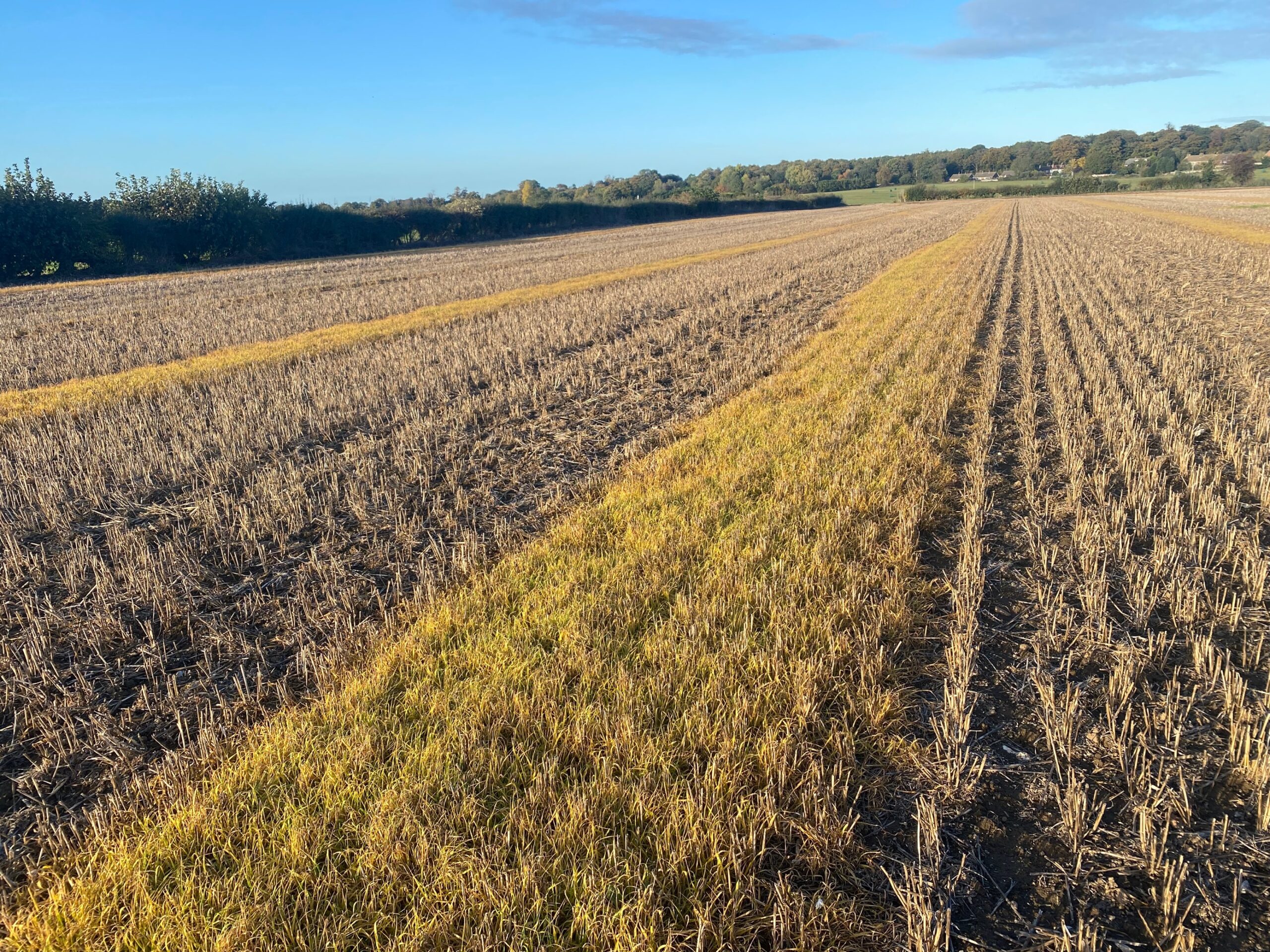
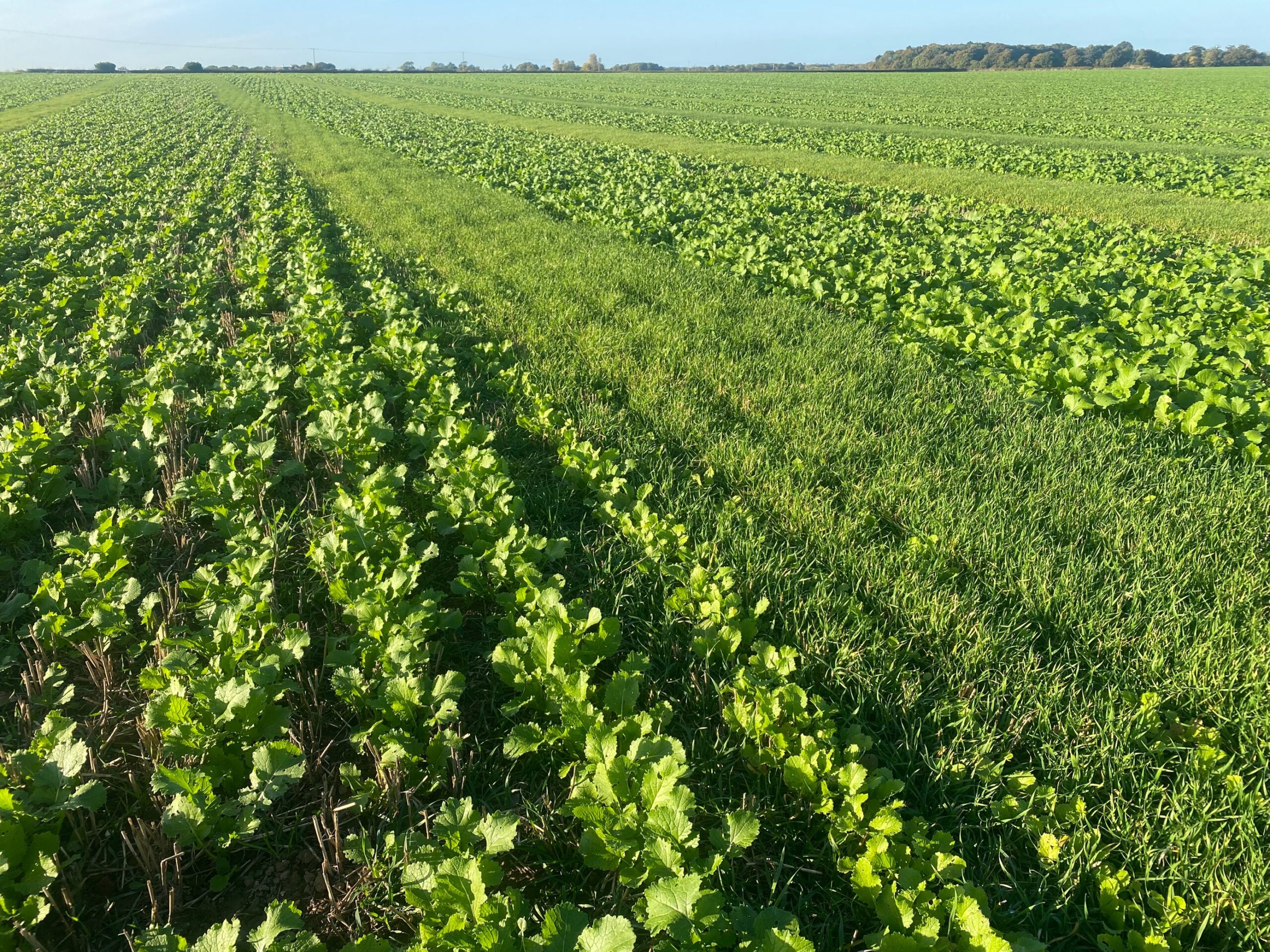
Generating tilth, raking weeds
Five banks of flexible, vibrating spring tines operating at high speed is a very effective method of generating tilth to germinate weeds and volunteers, which are then raked out. This mechanical weeding makes the Straw Harrow an attractive prospect for organic farmers.
Reducing slug populations
High speed harrowing is very effective at turning over crop residues and exposing them to ultra violet light, desiccating slugs and their eggs.
Warming overwintered soils
Using the Straw Harrow on soil surfaces and stubbles in the spring creates a micro-tilth for not only germinating weeds and volunteers but also to warm up that very important soil that will sit around your grains, grasses and pulses for a fast and even germination.
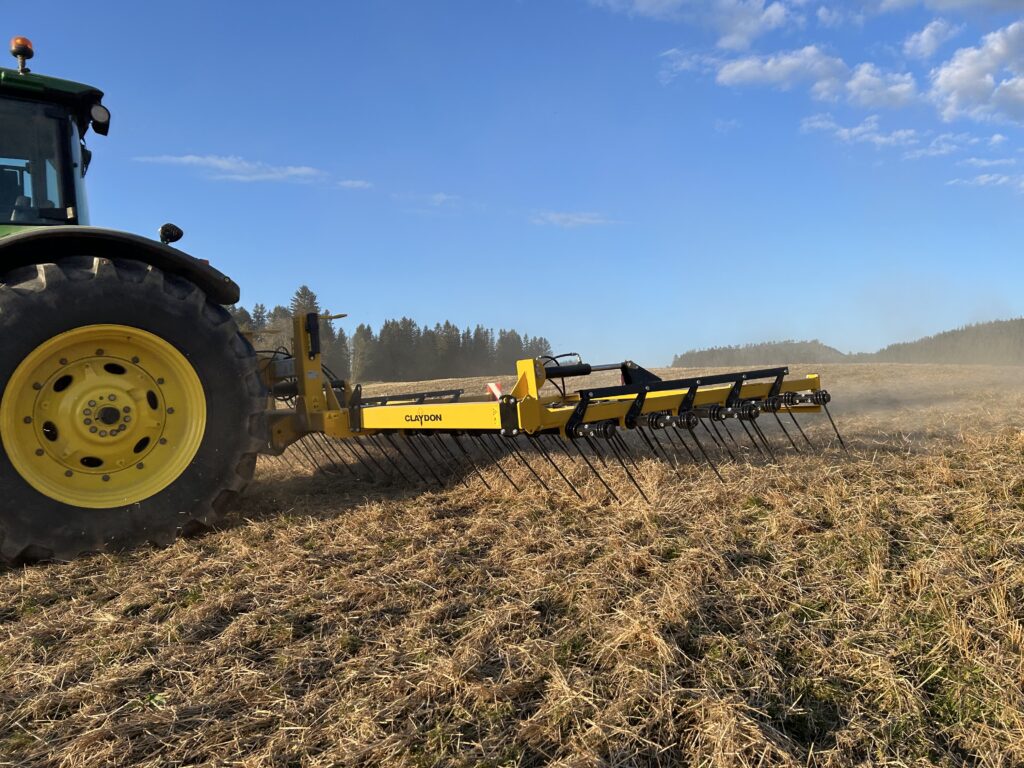
7.5m Straw Harrow at work warming overwintered stubbles Returning nutrients and organic matter to soil
If you want to make use of the straw you’re chopping and spreading back on to your land then it will require some attention. To make best use of this valuable commodity, the Claydon Straw Harrows allow you to:
- Distribute straw evenly across your soil surface area.
- Break soil cap and stimulate healthy bacteria.
- Breaking down the crop residue into smaller pieces, making it easier for the earthworms to harvest
These three things are fundamental for turning your straw into something worth leaving on your fields.
Transforming slabby seedbeds and covering seeded rows
The straw harrow is a great tool for breaking down slabby seedbeds and clods into smaller particles, covering in open rows left by drilling in imperfect conditions, as can be seen below.
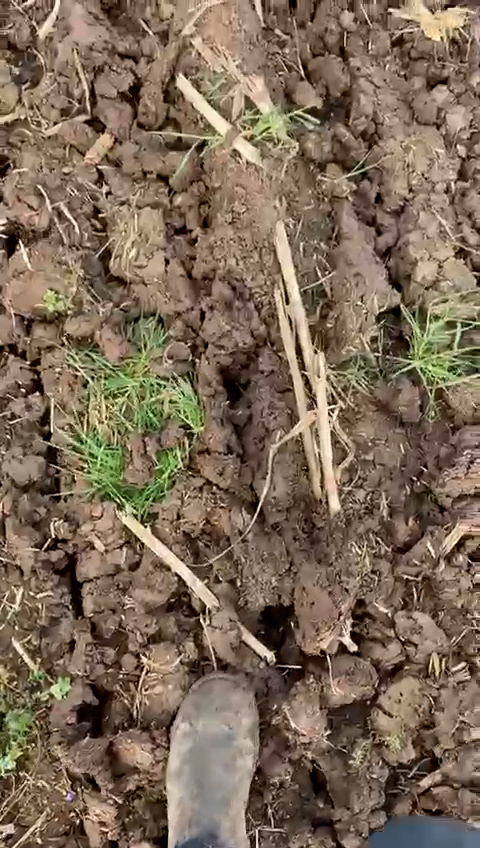
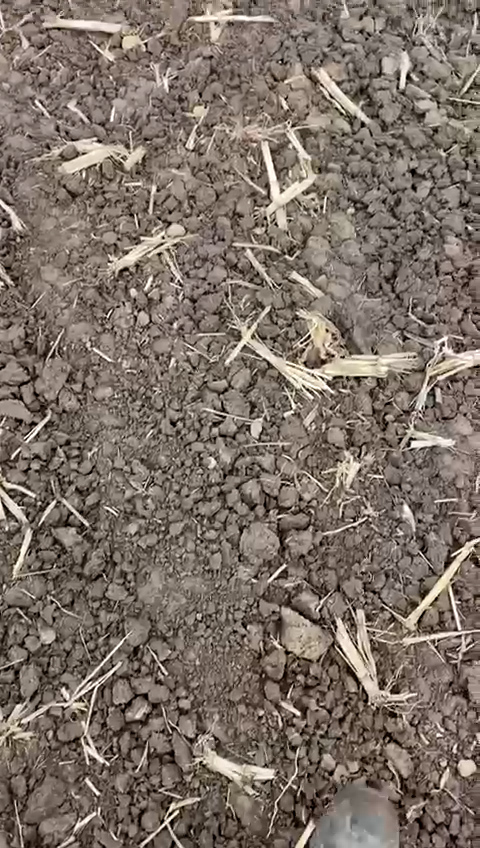
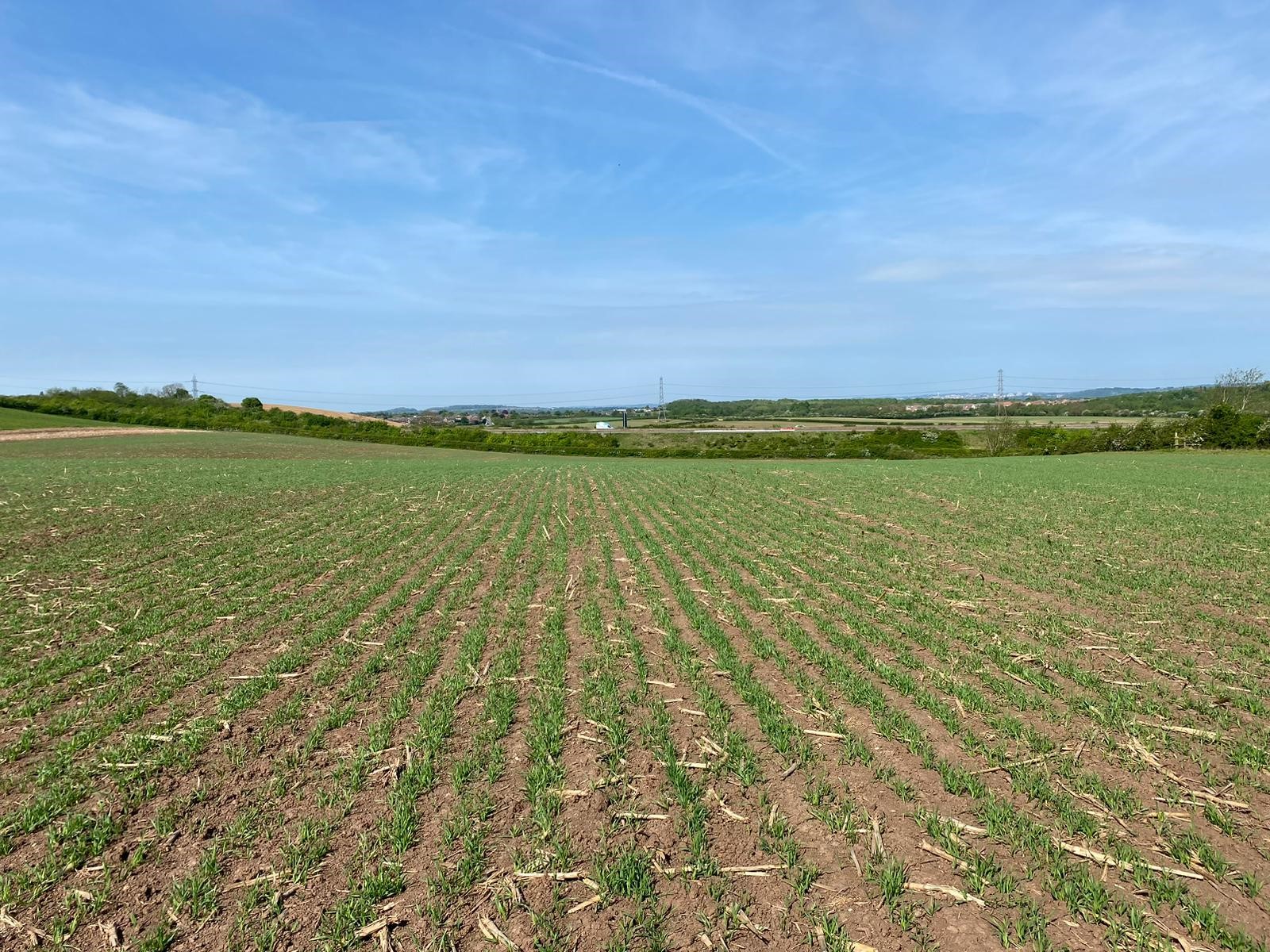
The effectiveness of the fast, multi action Claydon Straw Harrow is due to its quality of build and durability. Huge amounts of ground can be covered in a day for little cost and minimal wearing parts.
Claydon Straw Harrows are available in 3m , 7.5m and 9m mounted models and 12.5m and 15m trailed.
Hot and dry or cool and wet, our range of Straw Harrows https://claydondrill.com/straw-harrow/ allow you to distribute straw, smash stubble, control slugs and remove weeds, creating the best environment for drilling and efficient germination of the crops you’re seeding.
Get in touch with us or one of our partners now to get a straw harrow on farm in time for the harrowing season: www.claydondrill.com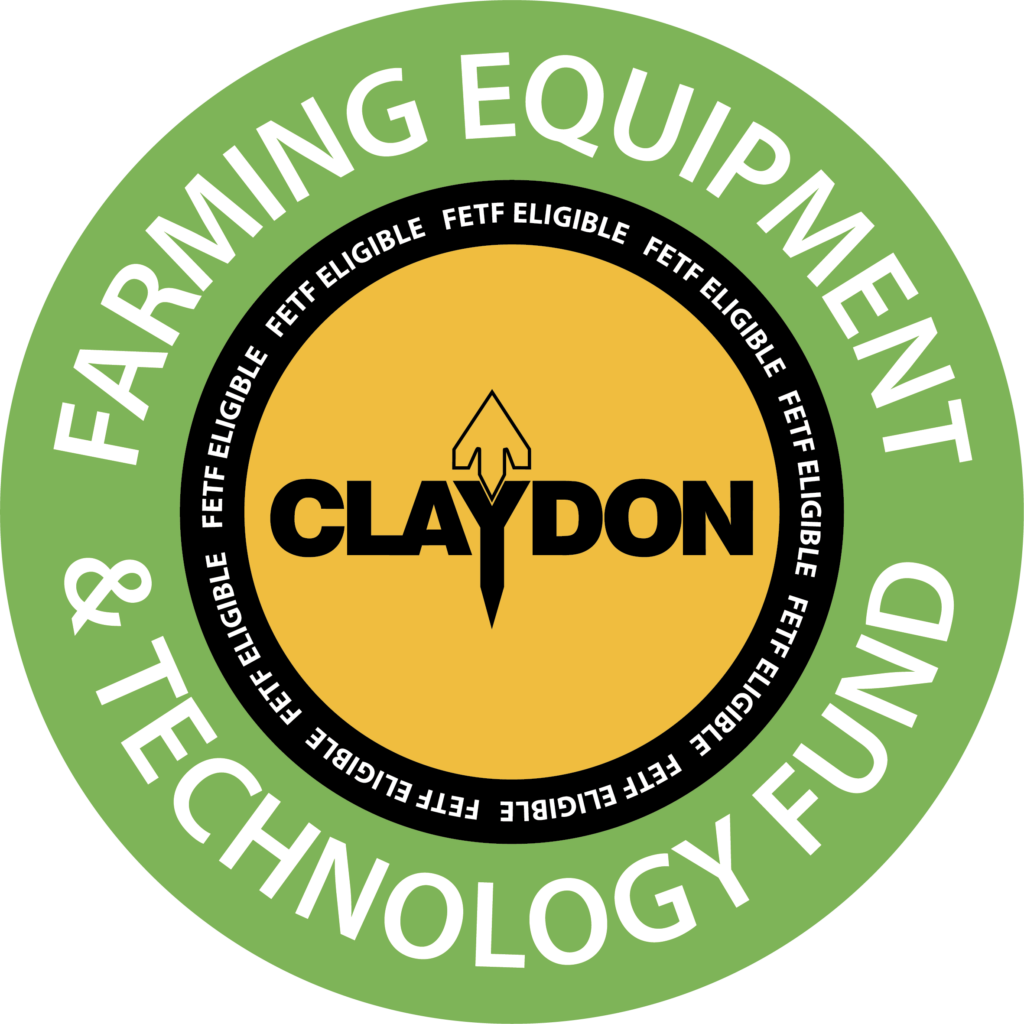
-
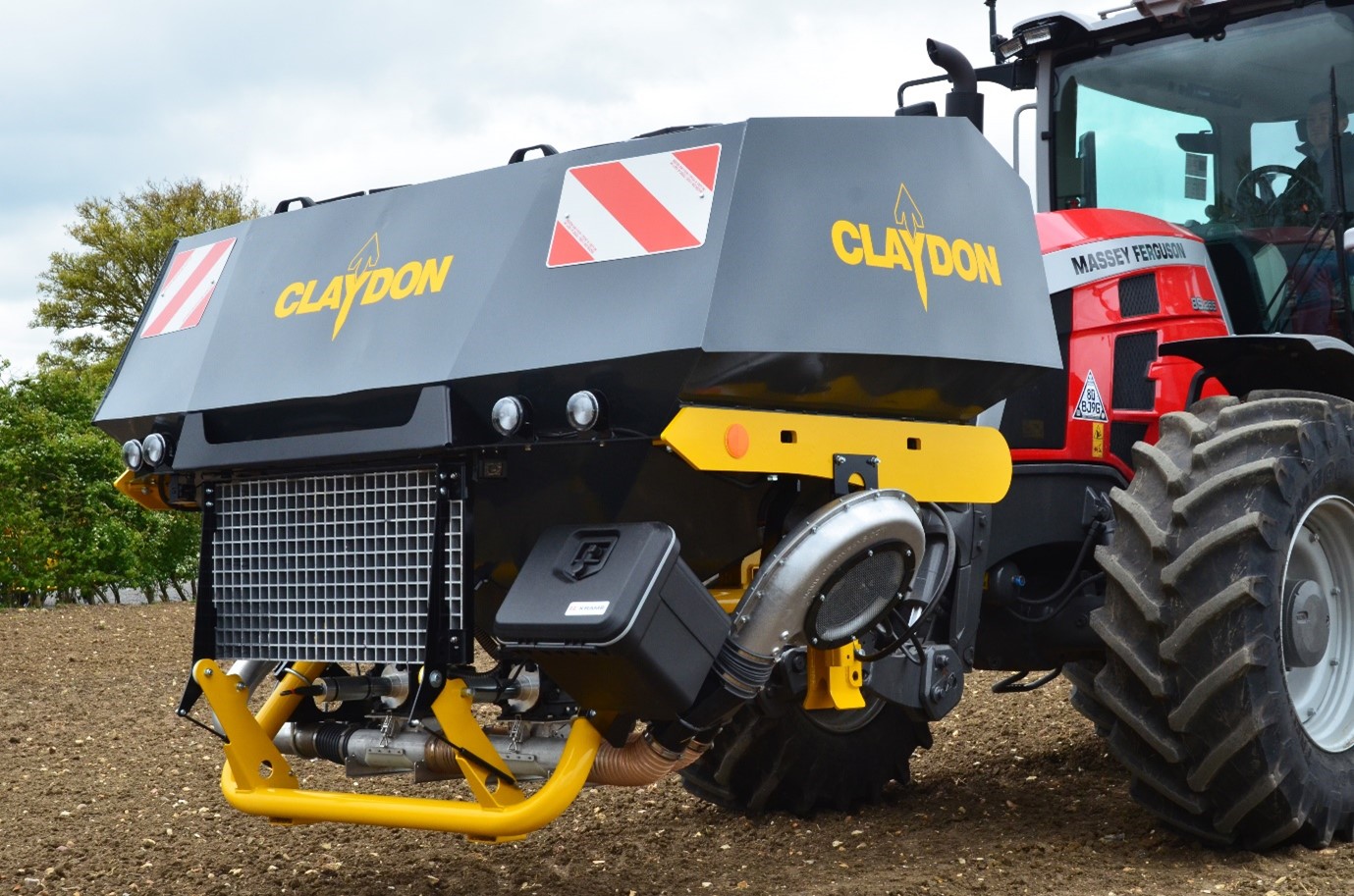
Claydon new product launches at Cereals 2024
Article written by Claydon Drills. See Claydon at Direct Driller at Cereals Event 11 & 12 June, Bygrave Woods, Newnham Farm, SG7 5JX

The Claydon Evolution Front Hopper and Claydon Evolution Drill Toolbar will be seen for the first time at Cereals on Claydon stand 1112.
These two new product offerings bring even more flexibility to the Opti-Till® product range.
The new Evolution Front Hopper has a total capacity of 2750 litres which is split 45/55%. The unit is pressured to ensure reliable high-volume material delivery and its twin metering units deliver either mixed or separated seed/fertiliser.
ISOBUS compatible, the Front Hopper is supplied with small, medium or large diameter interchangeable metering wheels to suit a wide range of seeds and fertilisers. The ISOCAN terminal controls all front hopper functions and allows variable rate seeding, depending on the task controller and licence key.
The Evolution Drill Toolbar can be used in conjunction with the new Front Hopper and is available in widths of 3m, 4m, 4.5m, 4.8m, 5m or 6m. The standard specification includes one distribution head with 38mm seed delivery hoses, but a second distribution head can be optioned, allowing fertiliser to be supplied to either the front leading tine or rear seeding tine.
Visit us on stand 1112 to find out more about these latest additions to the range and to view other machines in the Opti-Till® sustainable farming product range : 6m trailed Hybrid T drill, 9m Straw Harrow, 4m TerraBlade inter-row hoe and 6m TerraStar® light rotary cultivator.
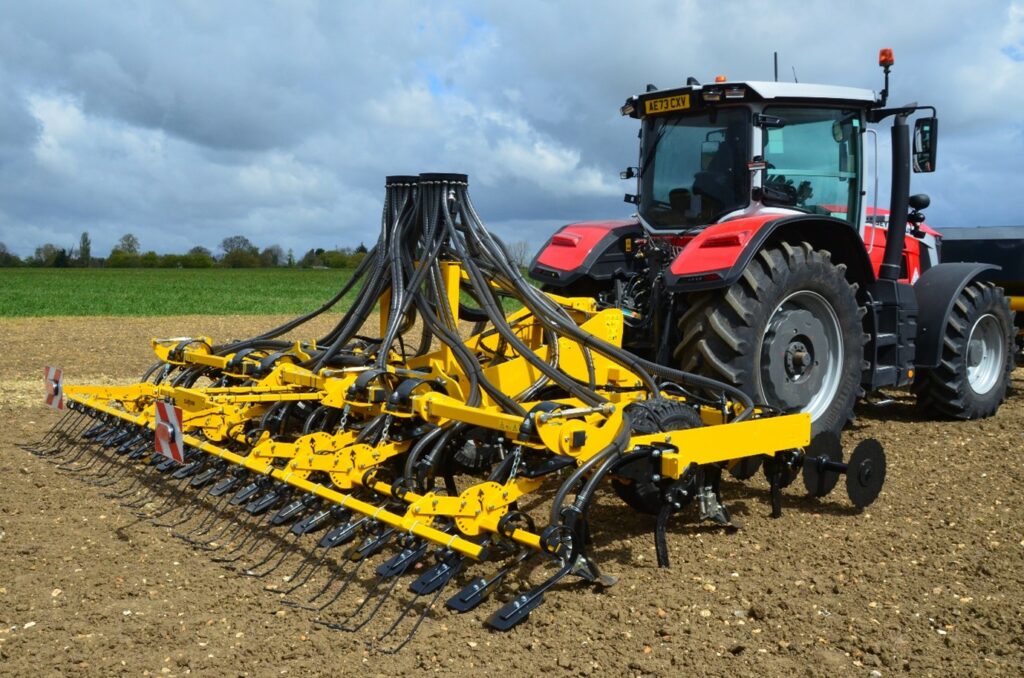
For more information visit contact your nearest Claydon dealer or visit claydondrill.com




